The Power 100
By The Editors April 26, 2017 1:15 pm
reprints

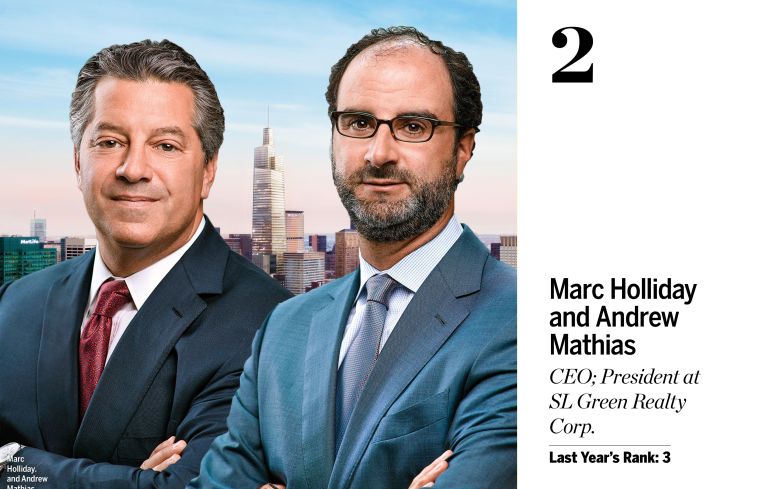
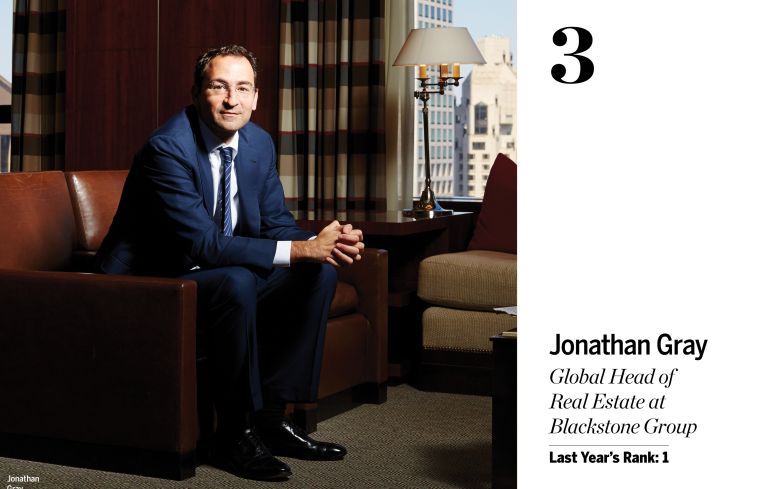
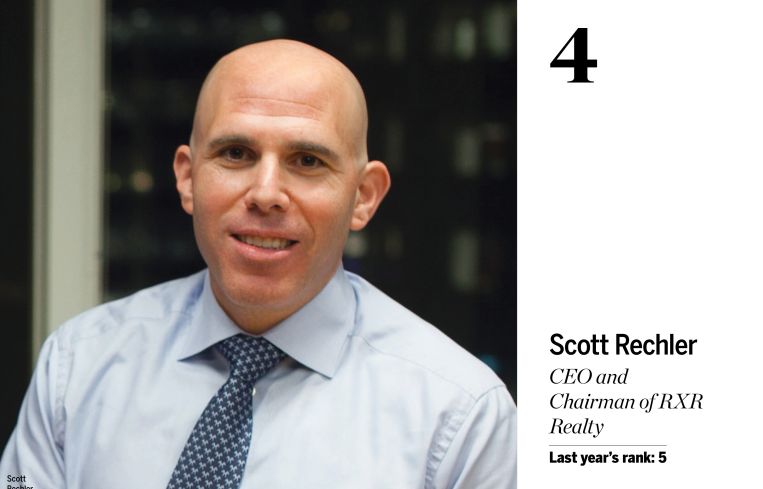
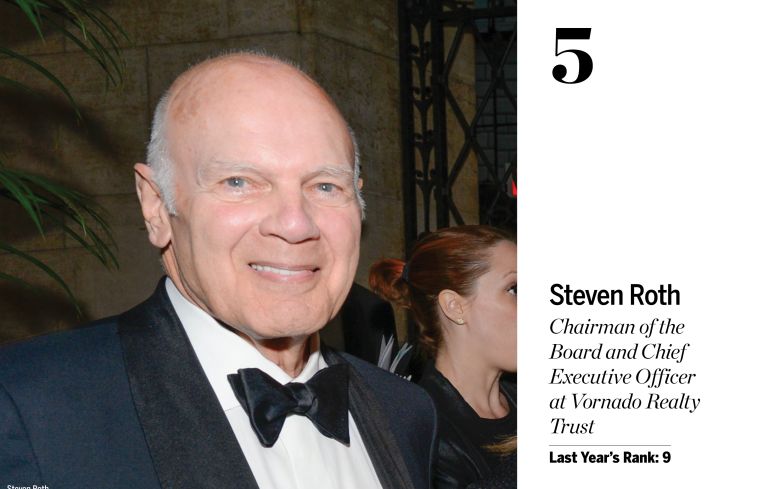
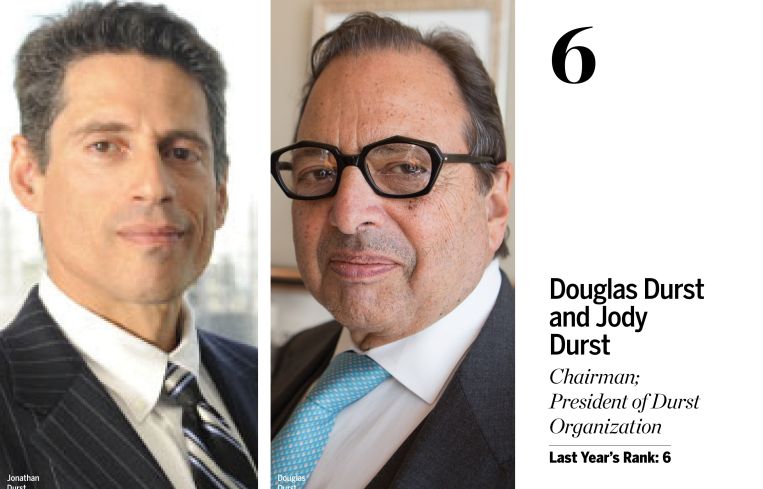
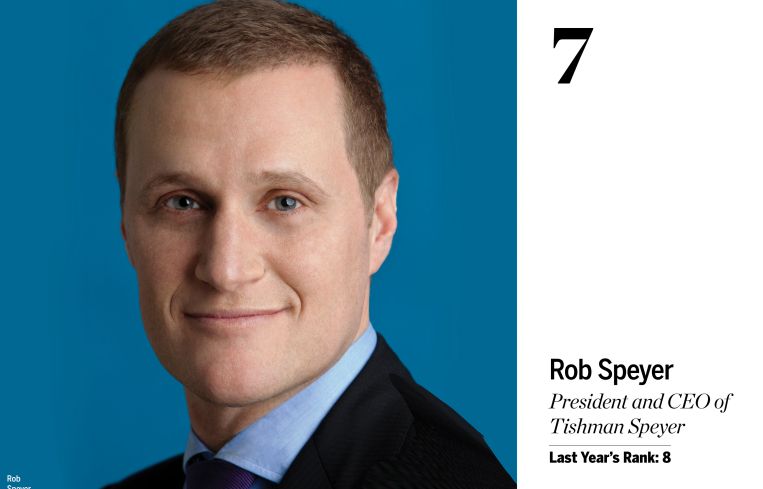
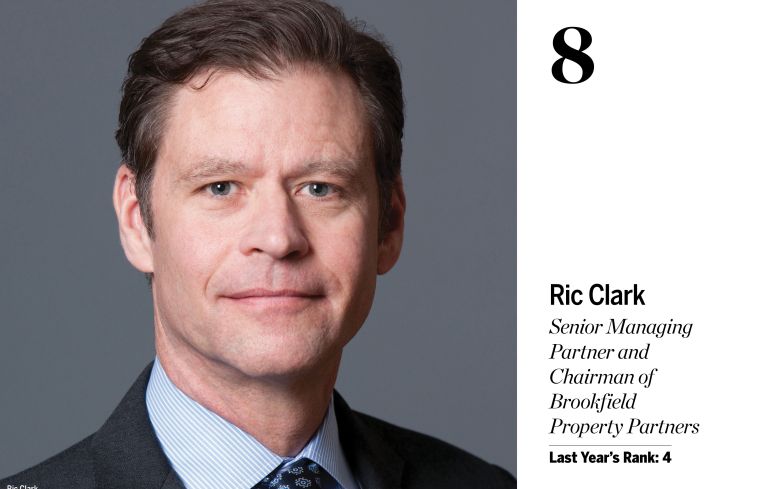

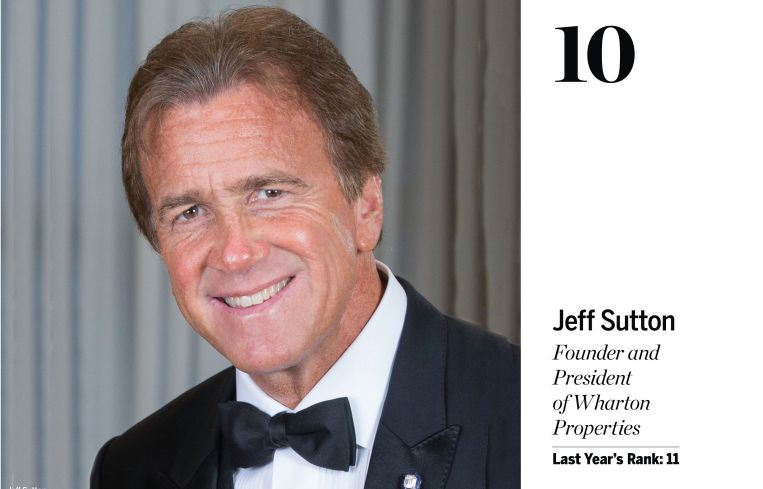
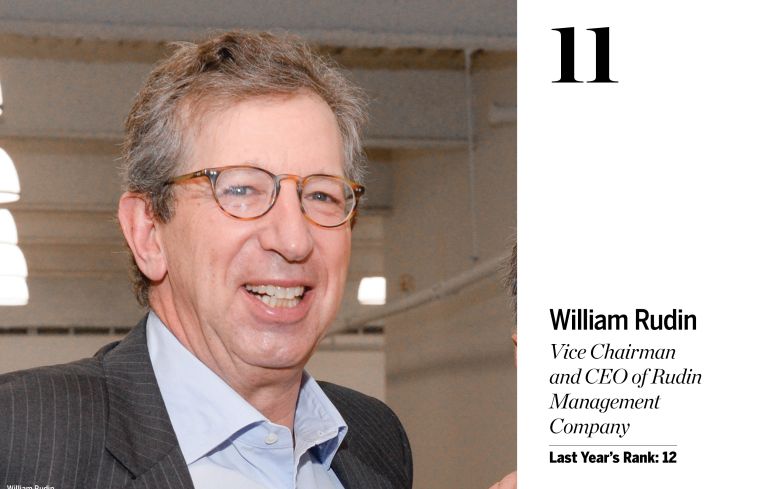
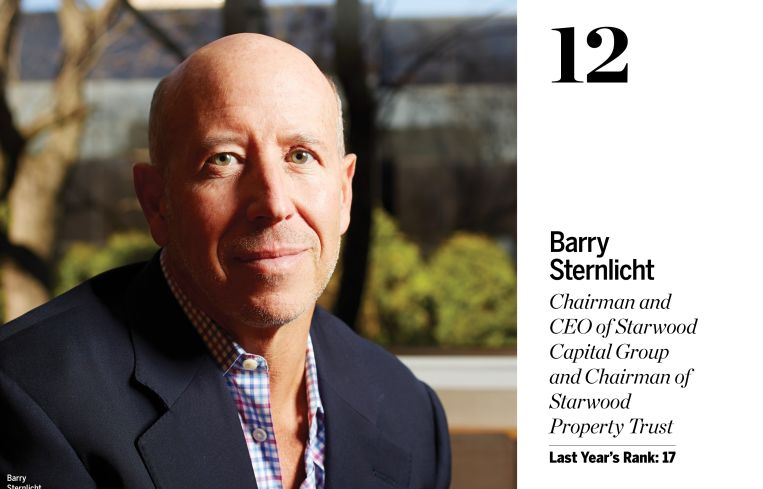
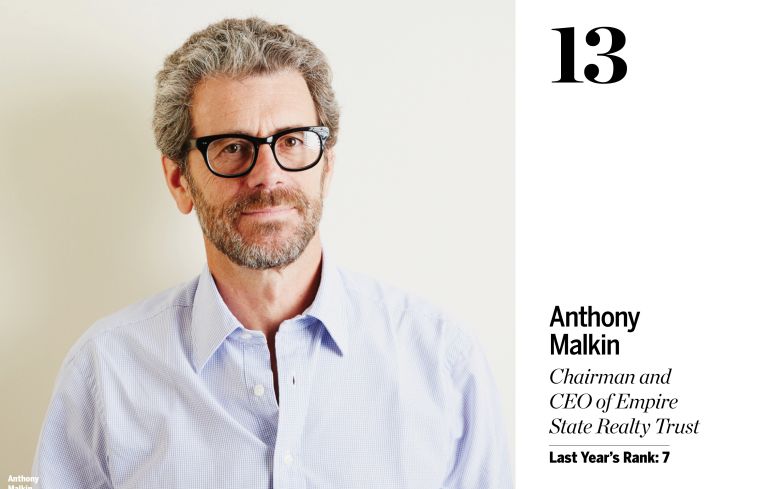
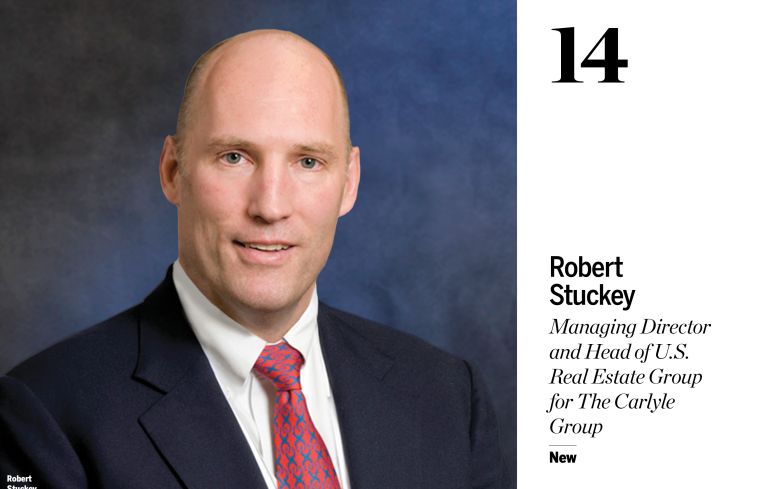
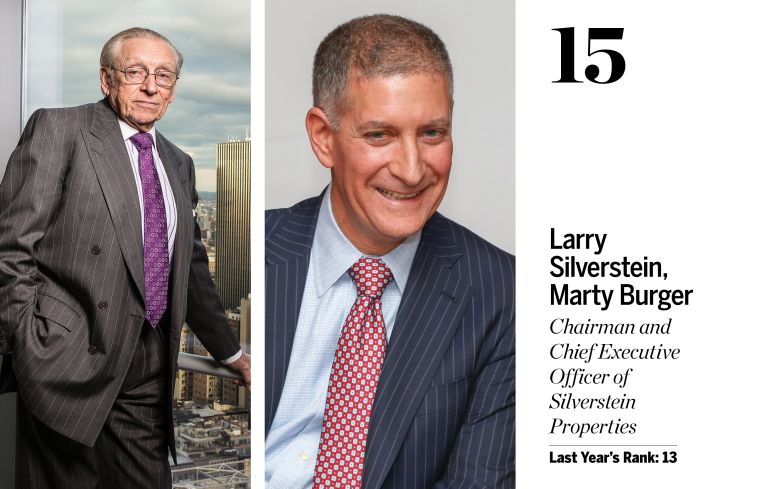
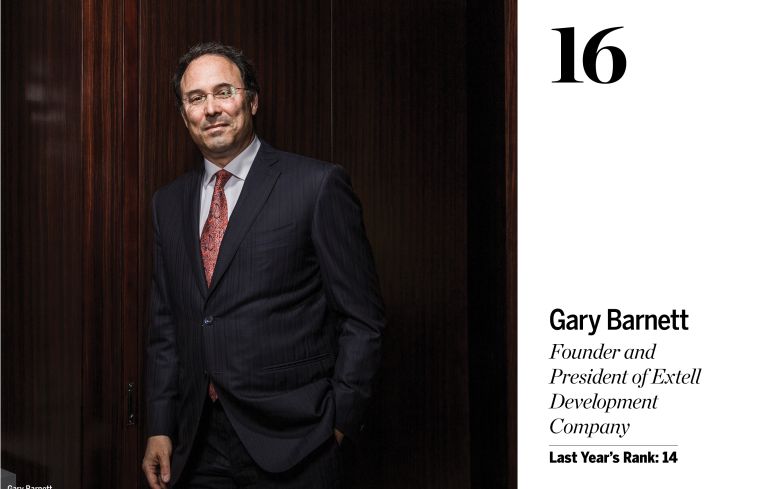
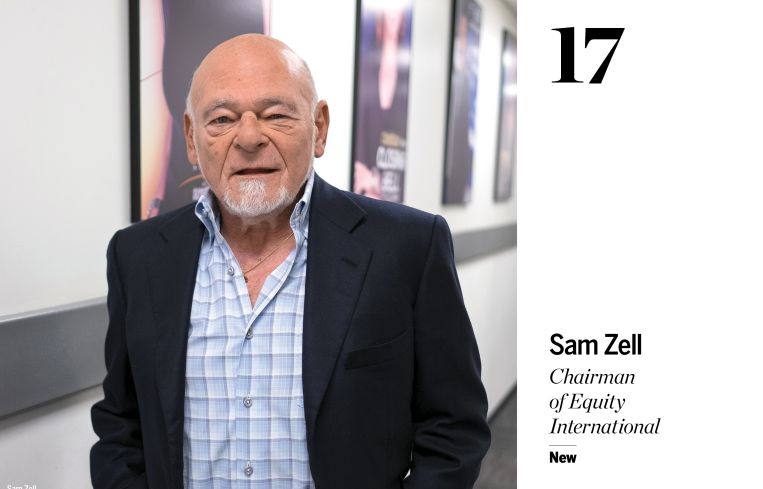
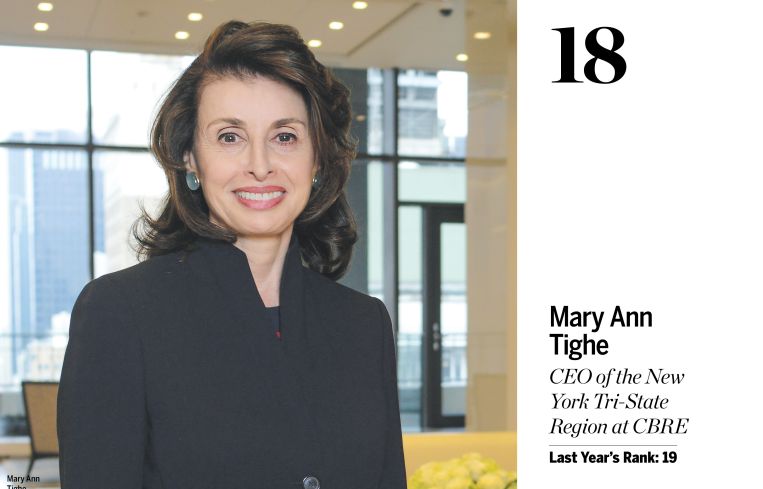
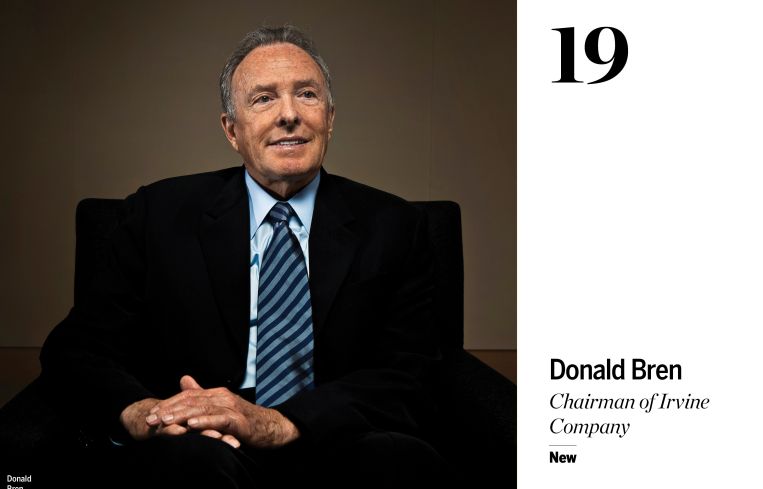


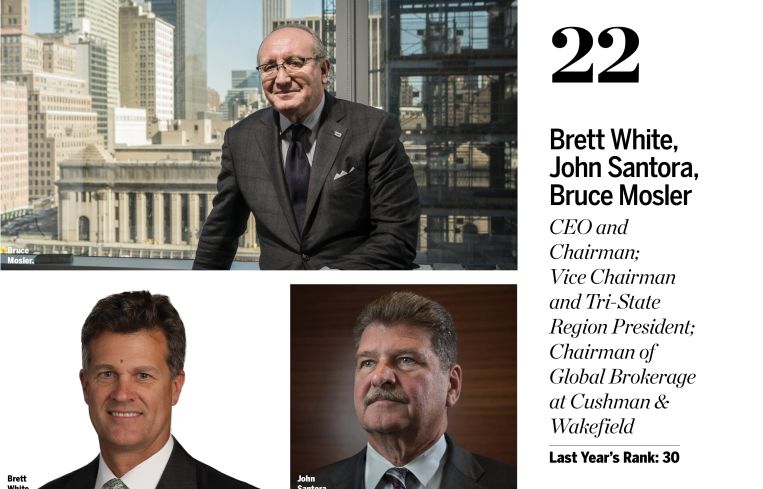
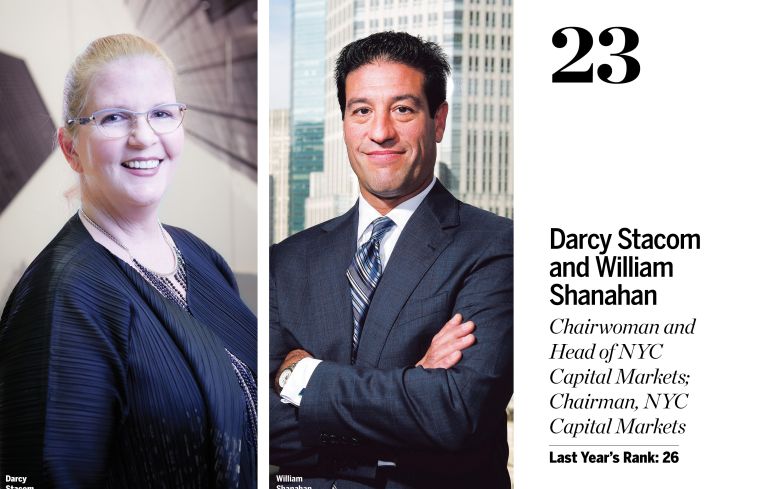
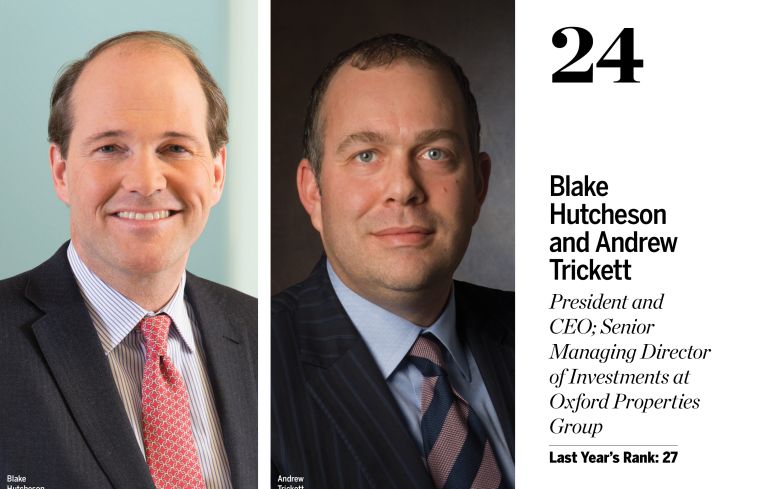
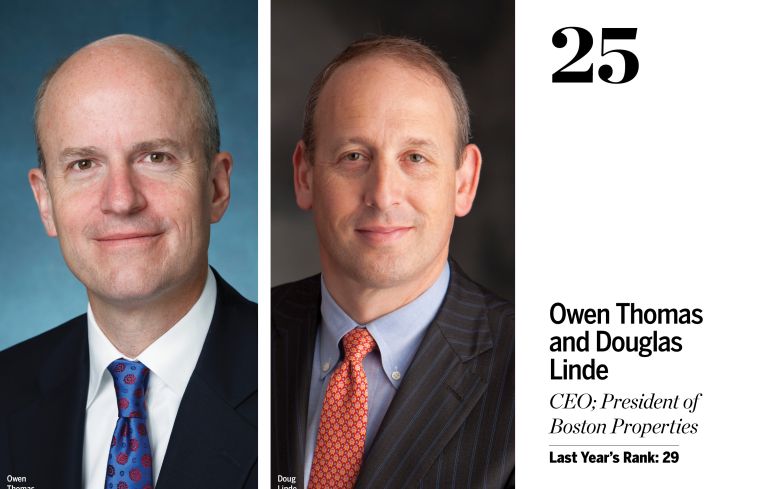
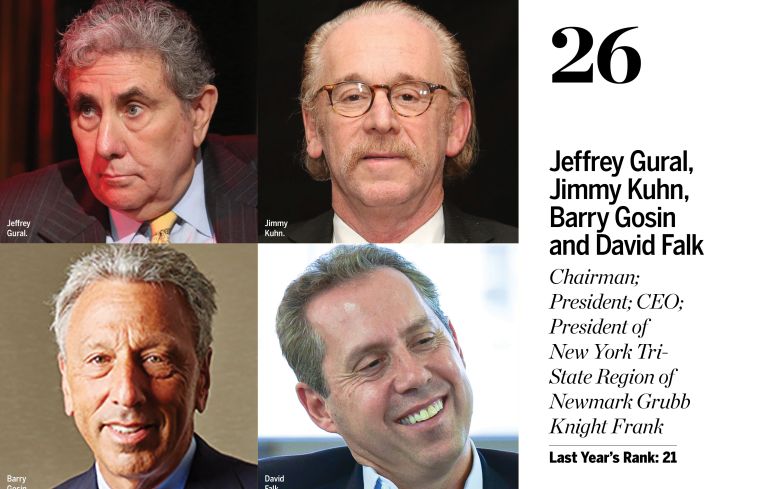


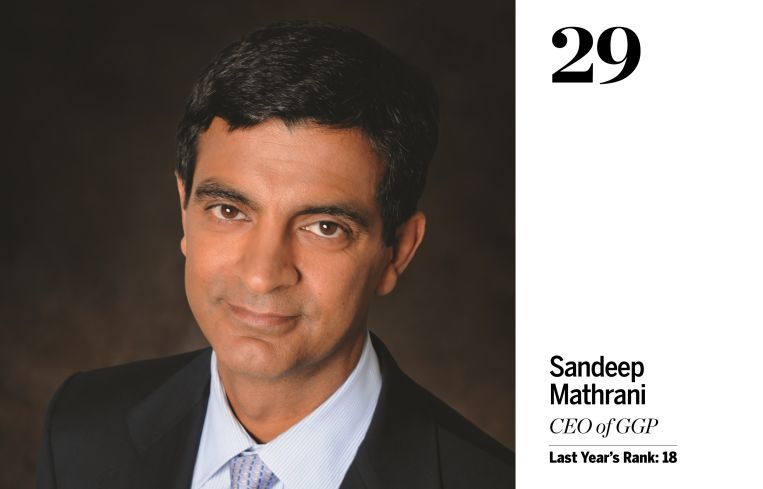

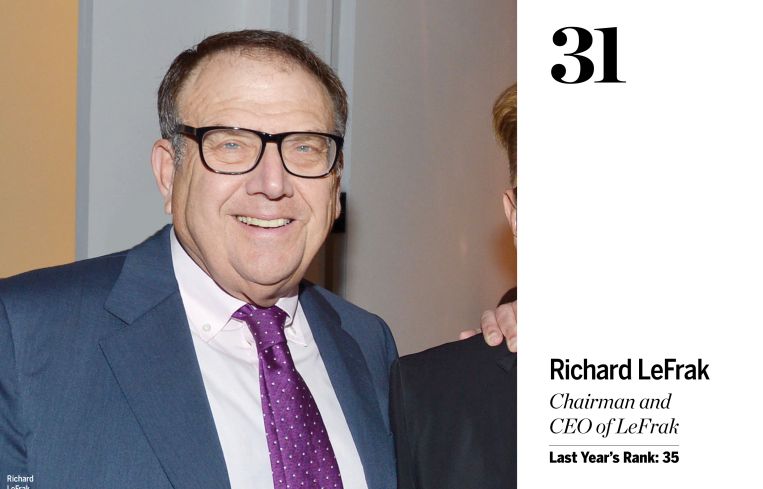
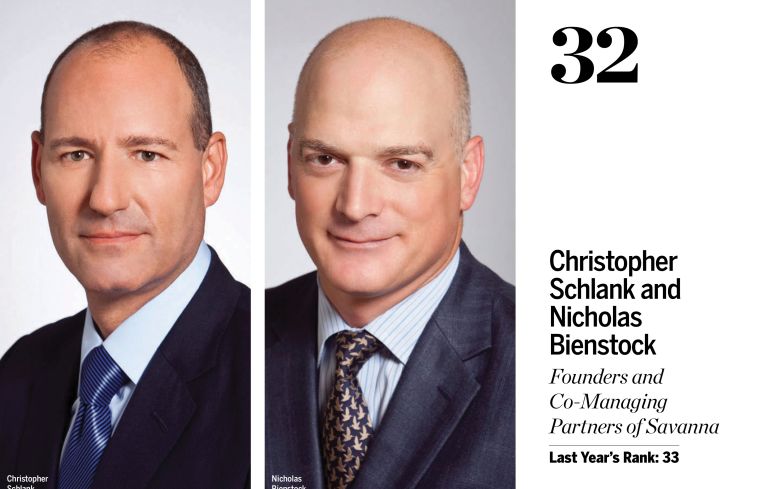
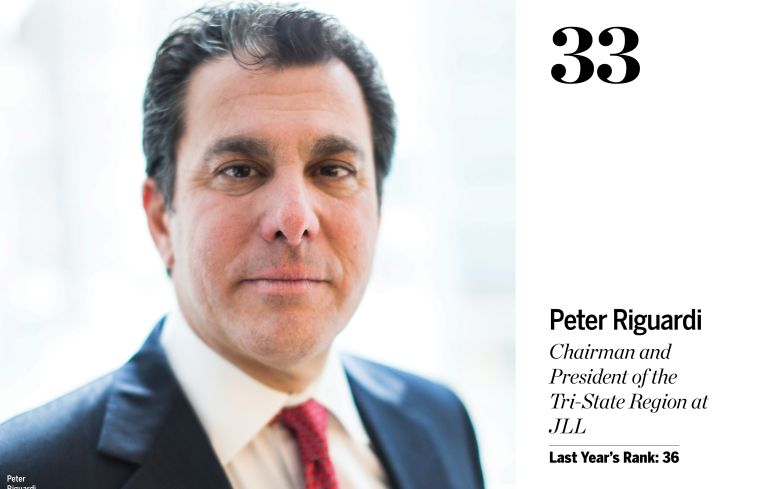


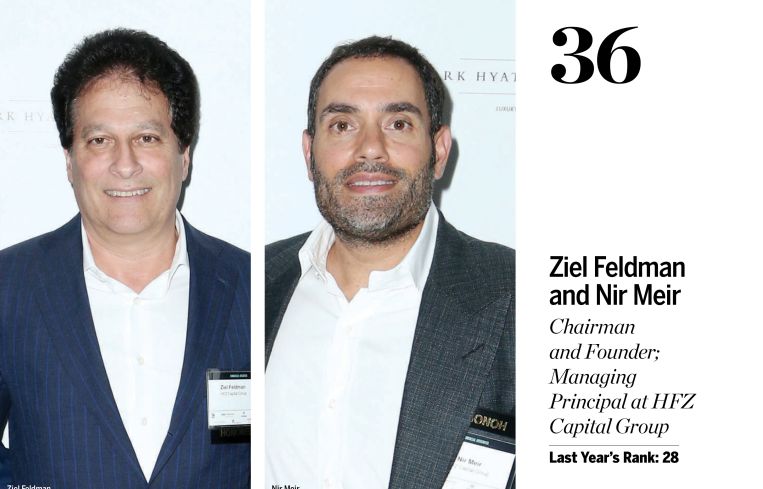
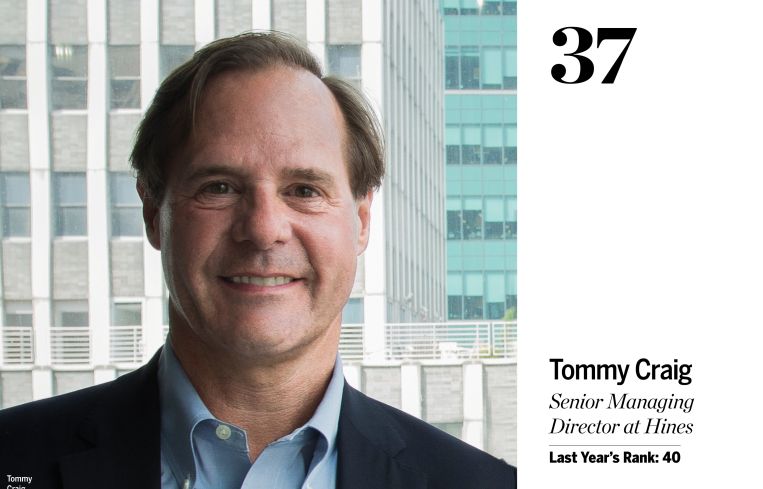

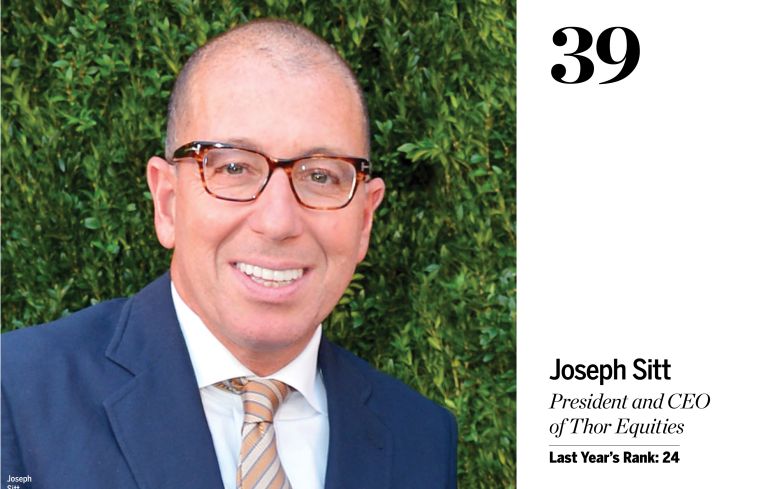
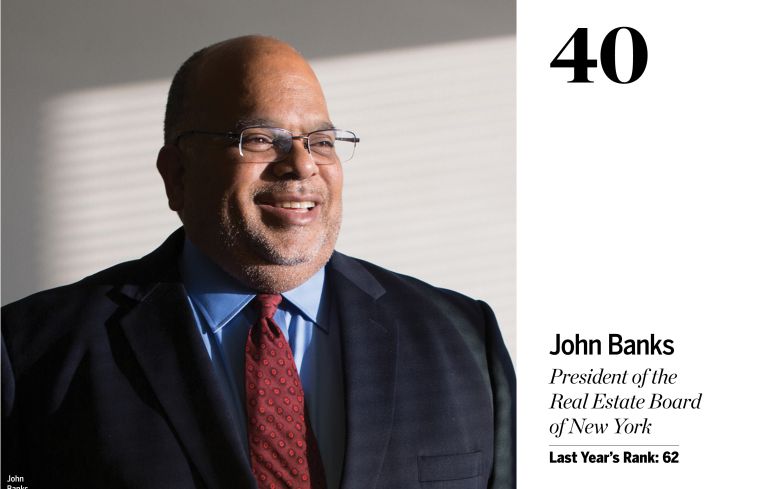

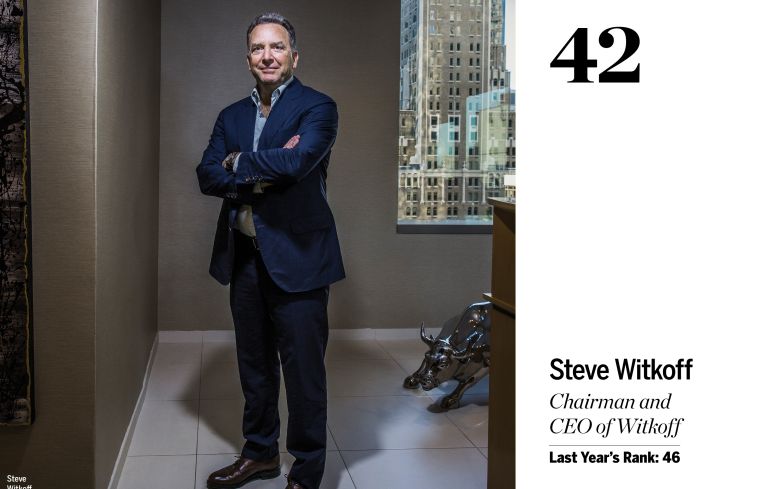

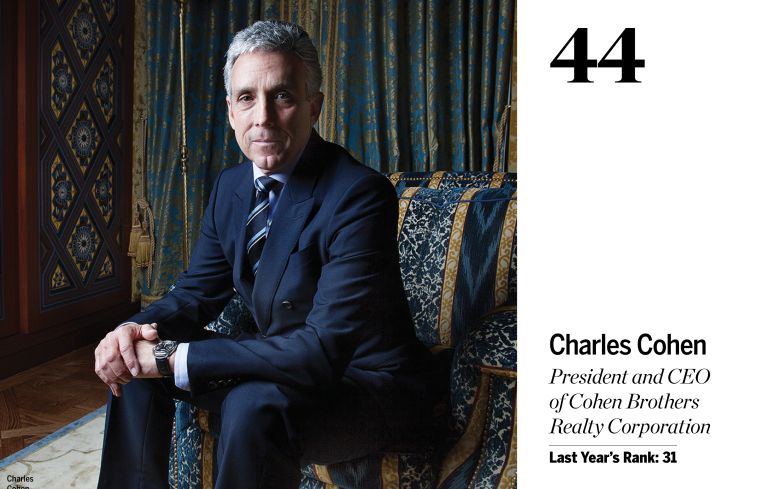
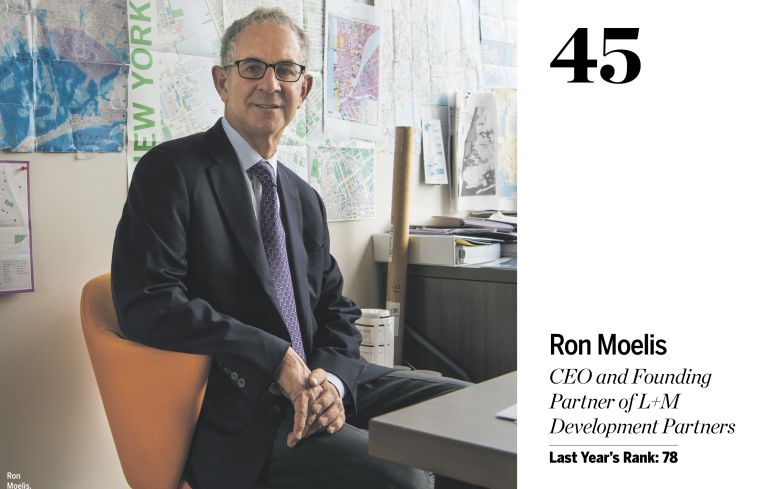


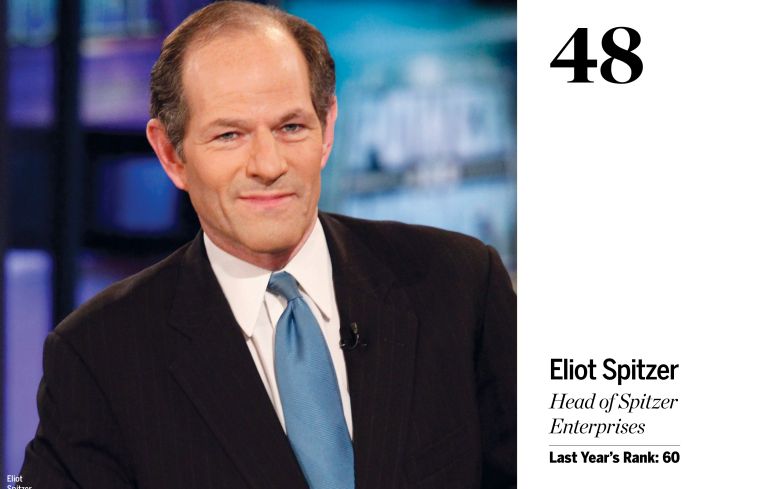
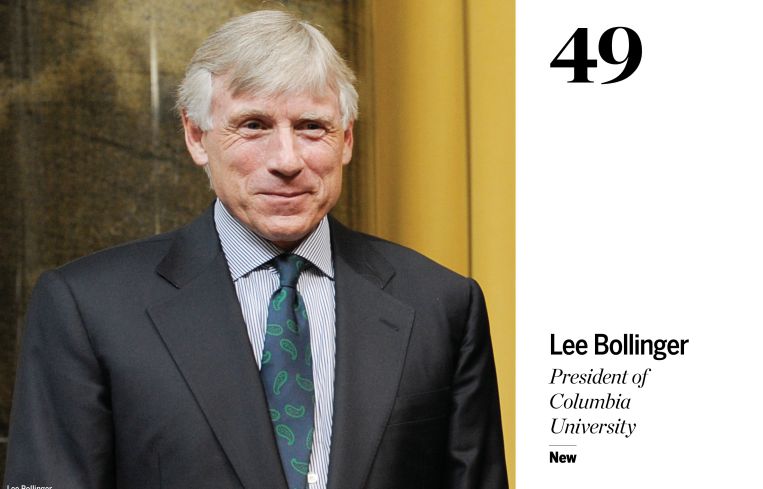


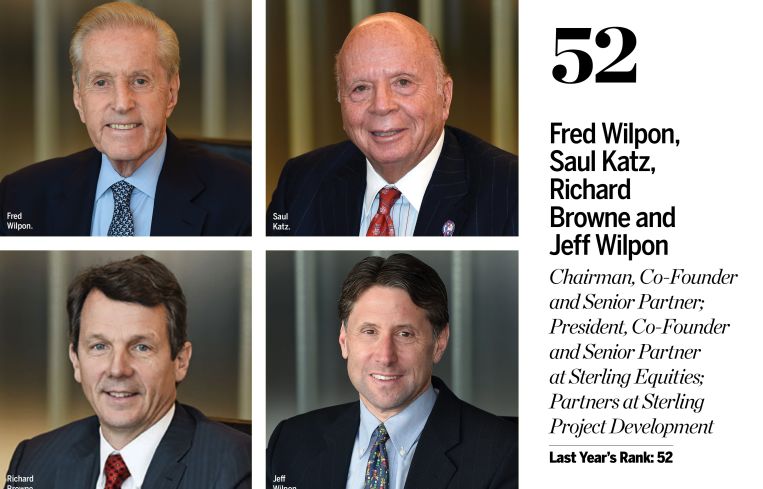
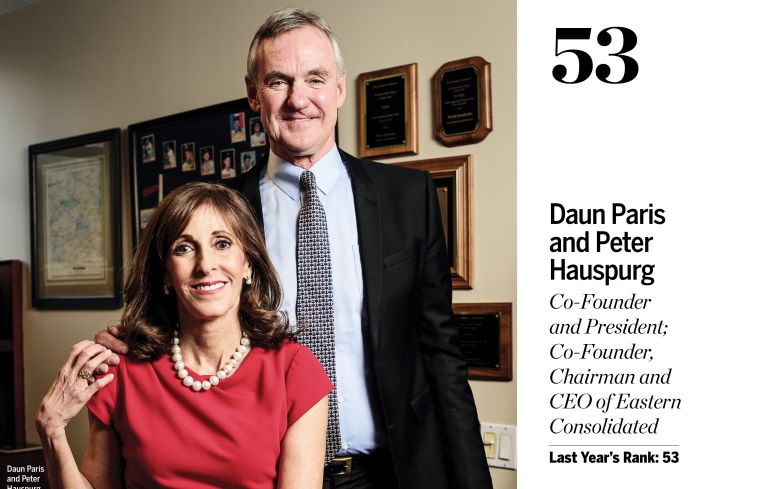
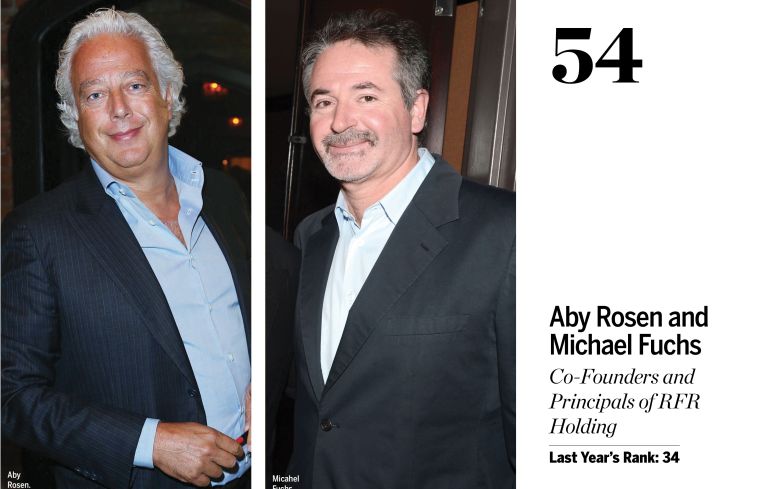
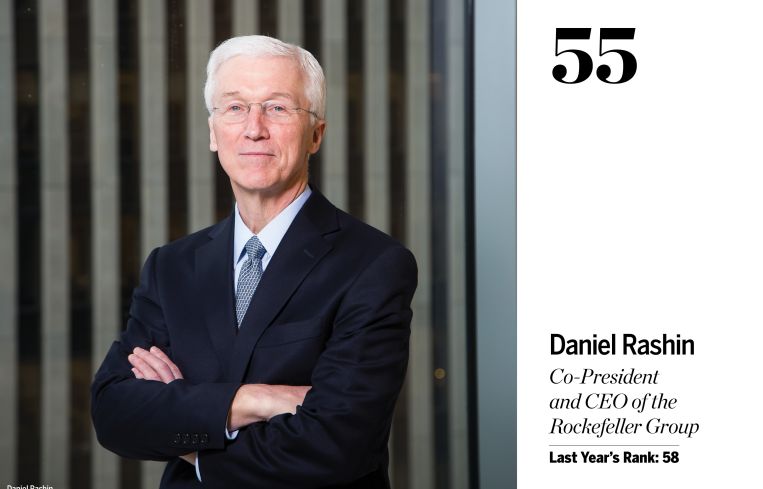
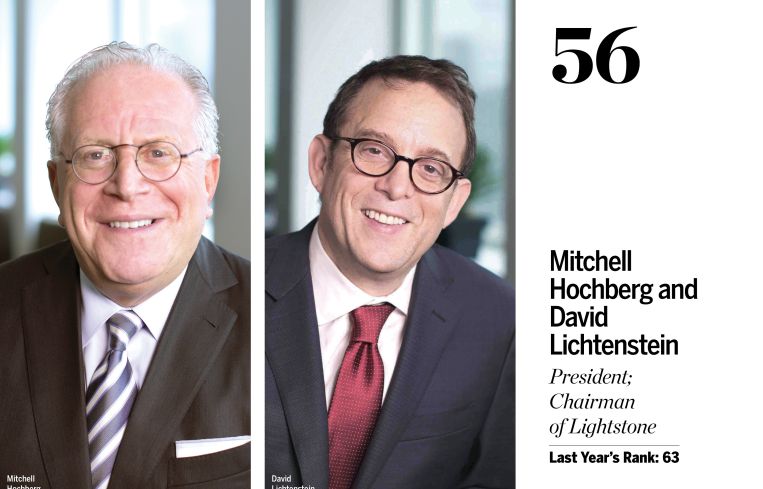
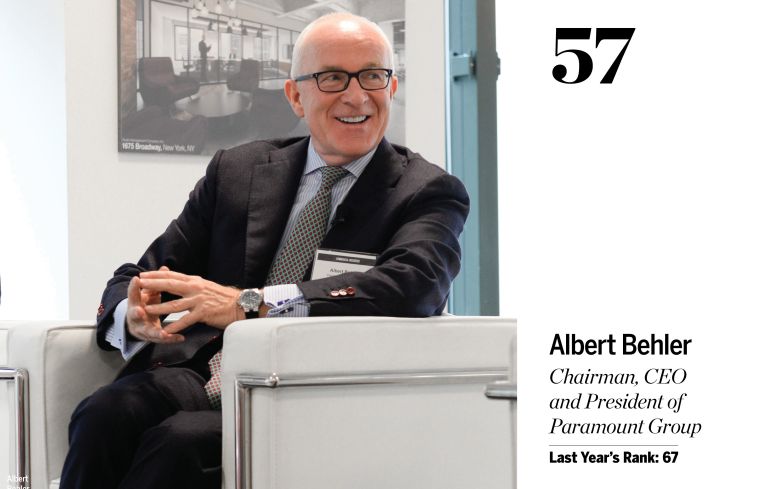
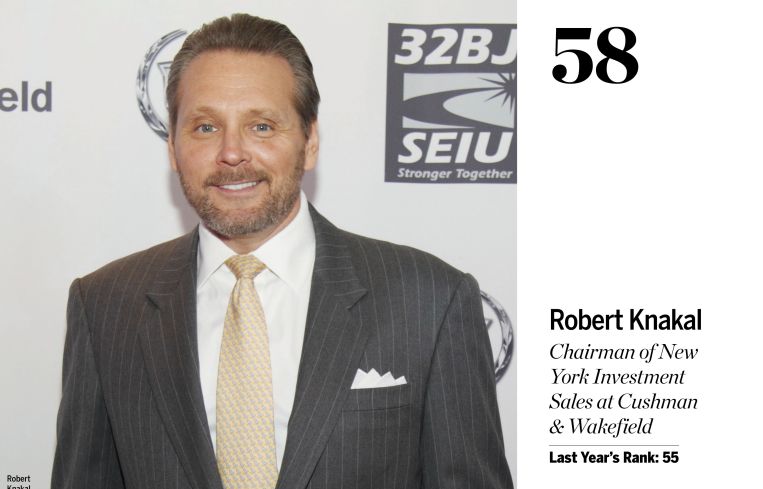



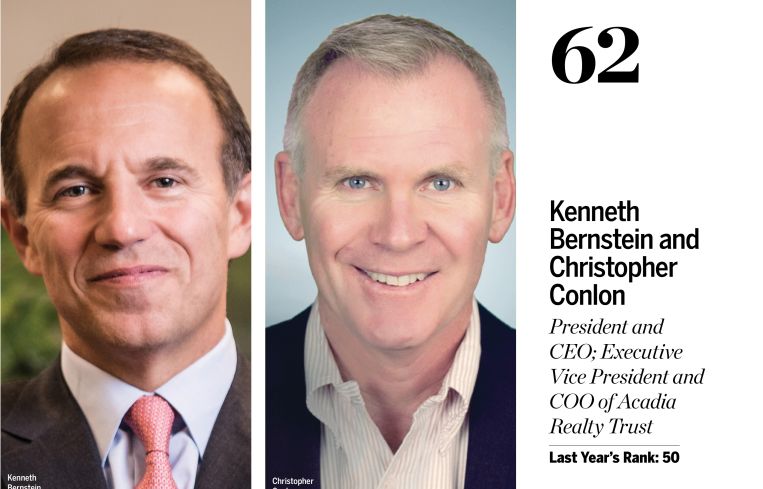

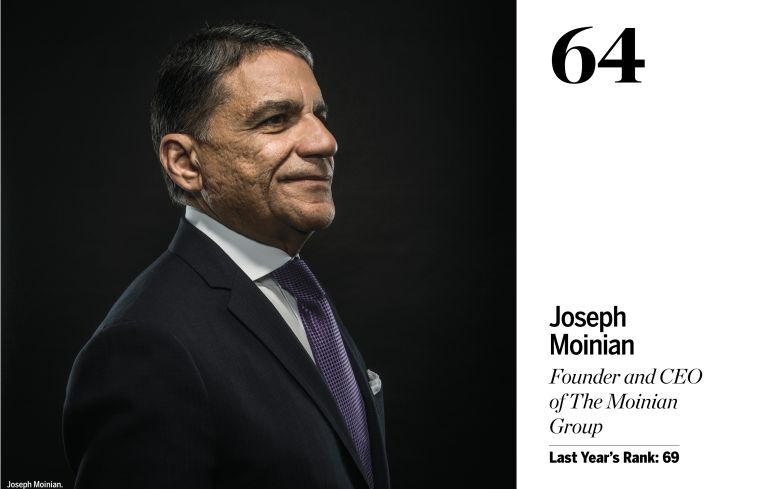
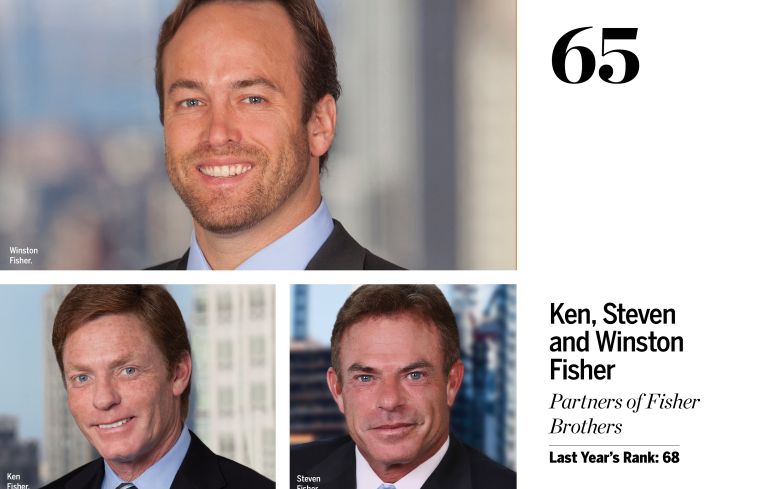
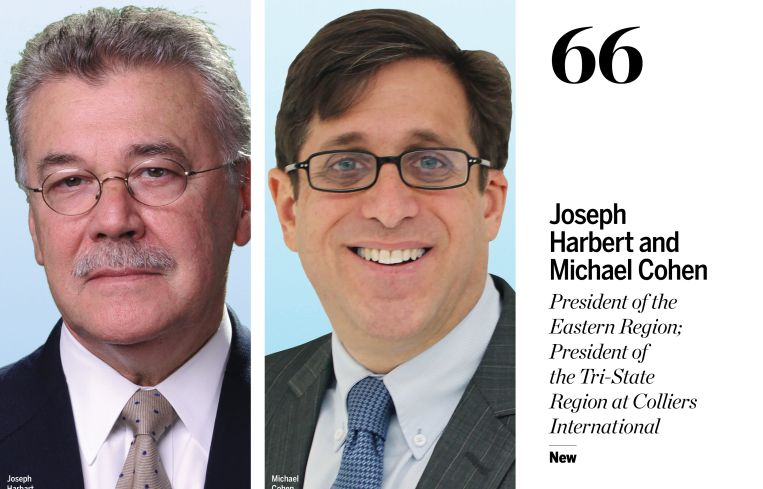


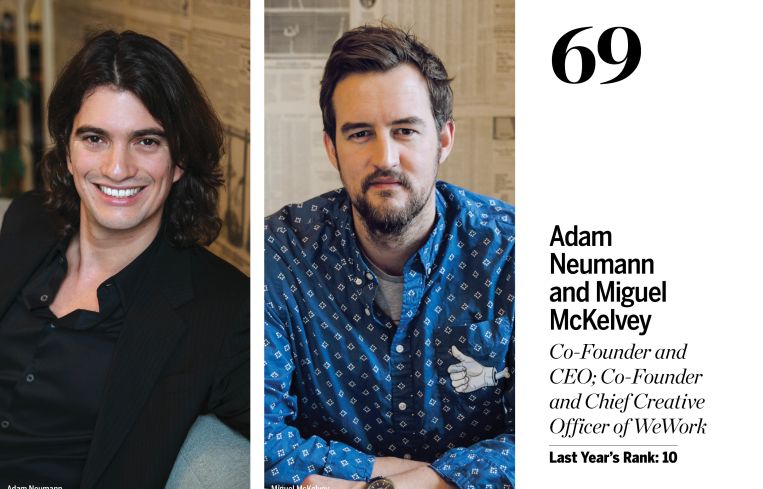
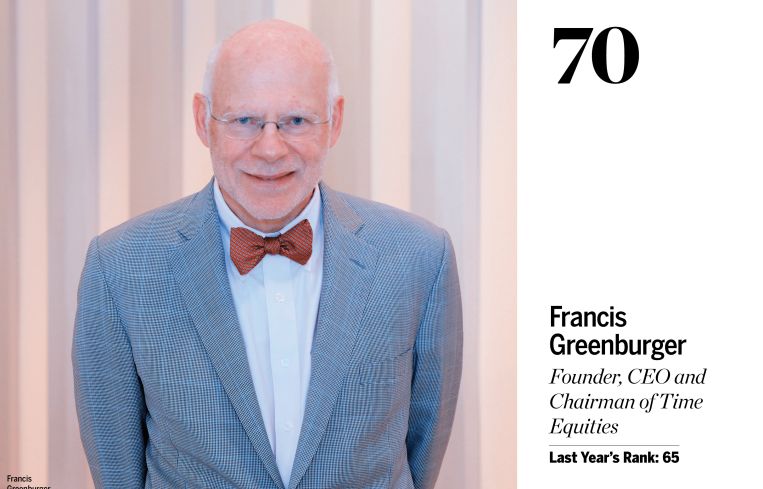
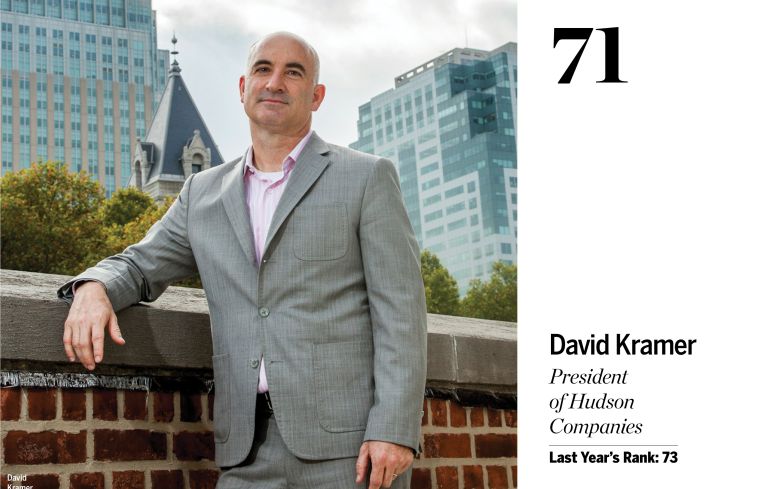

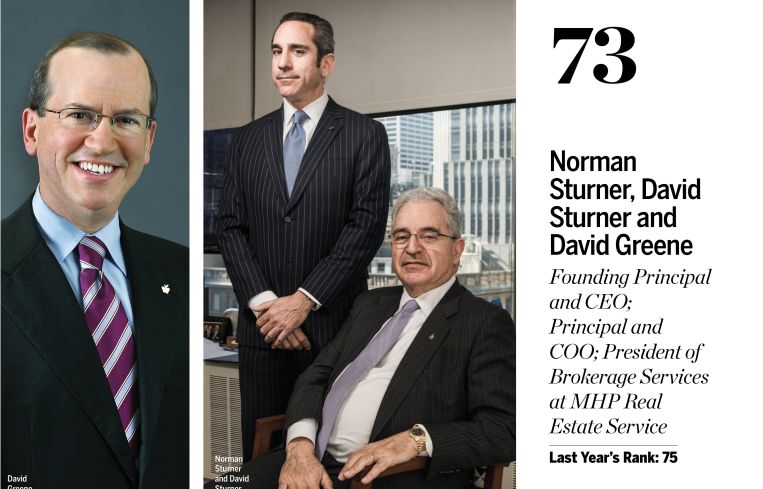
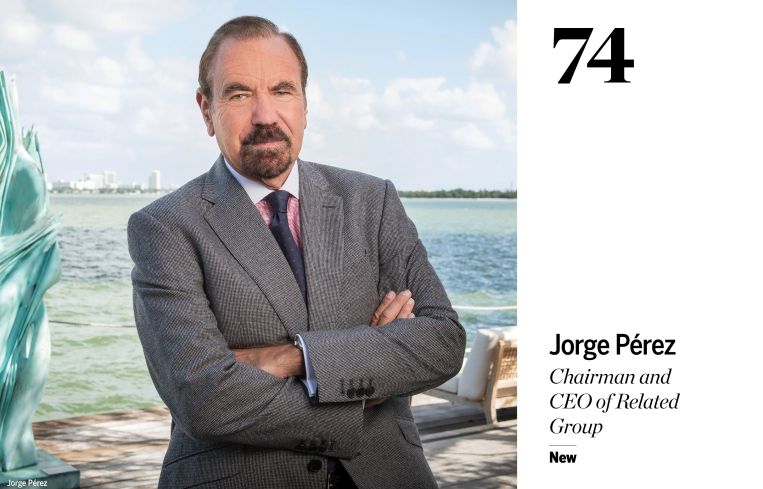
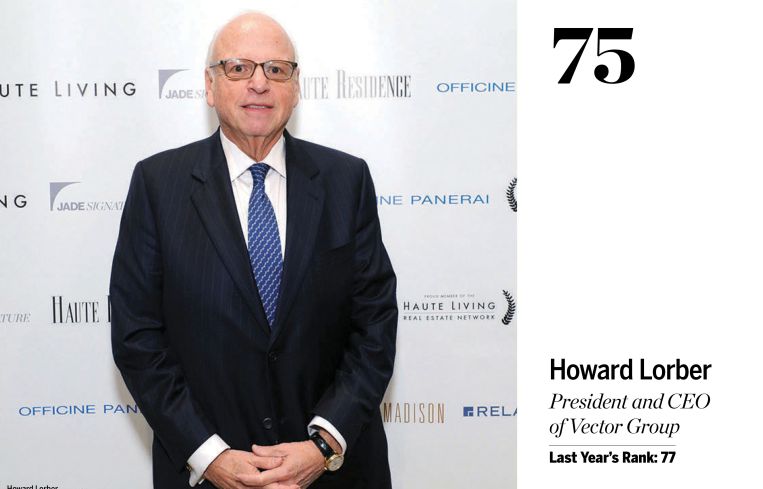
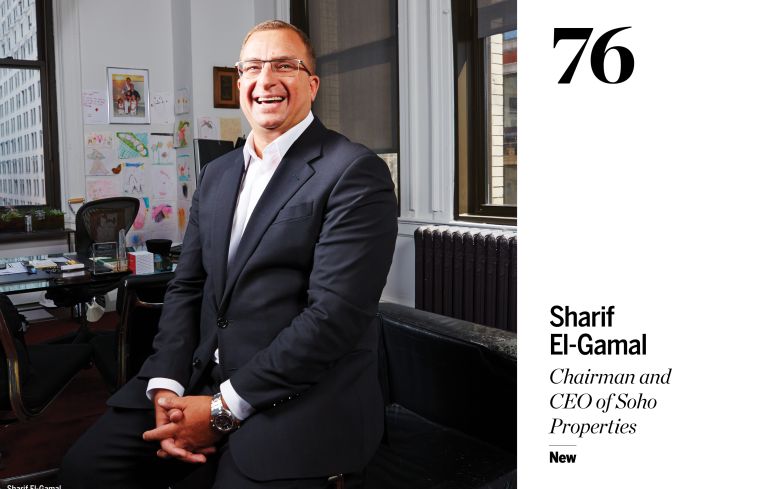
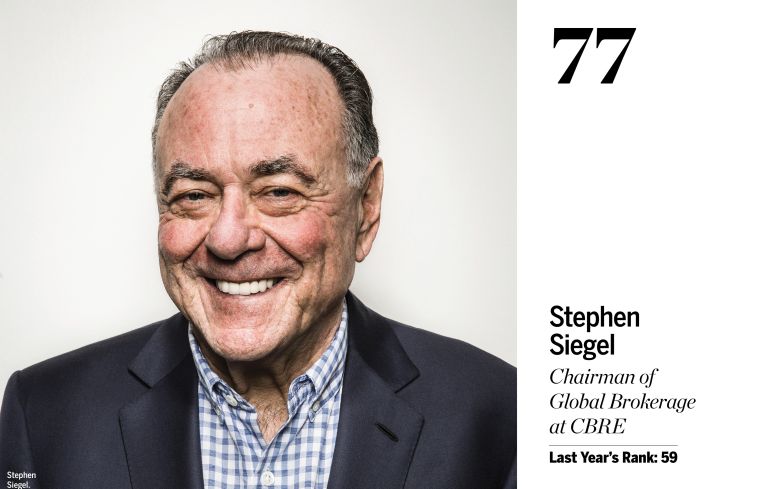
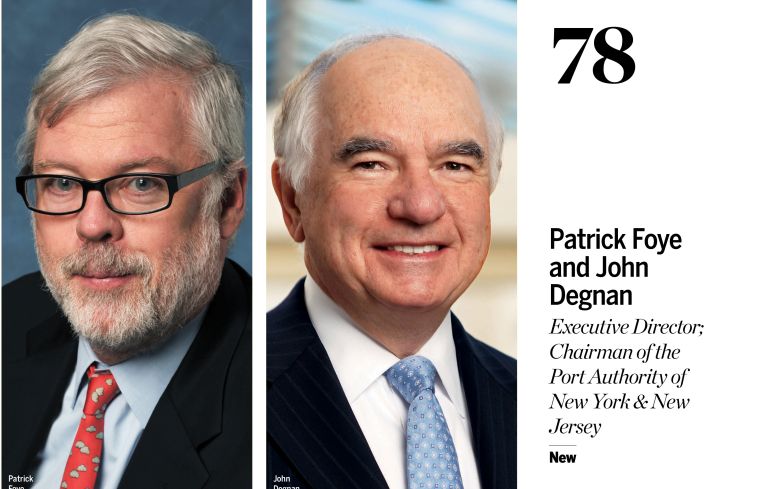
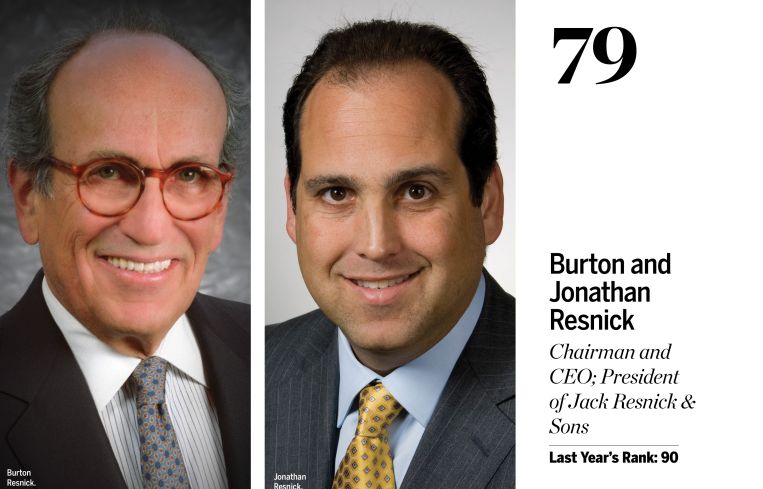

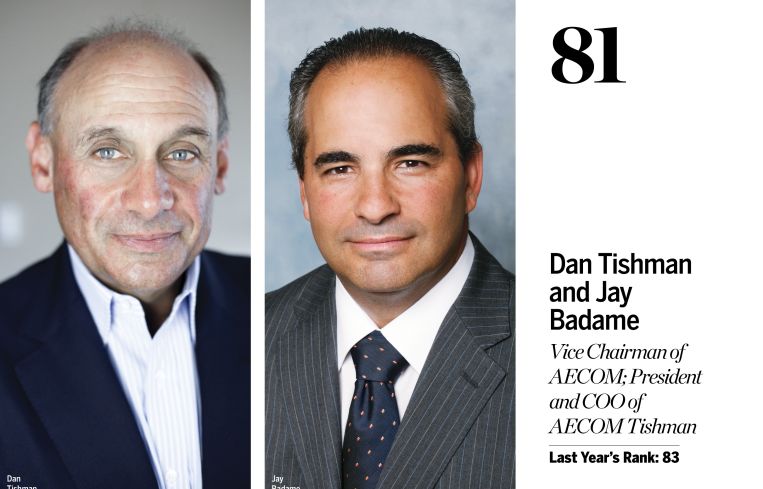

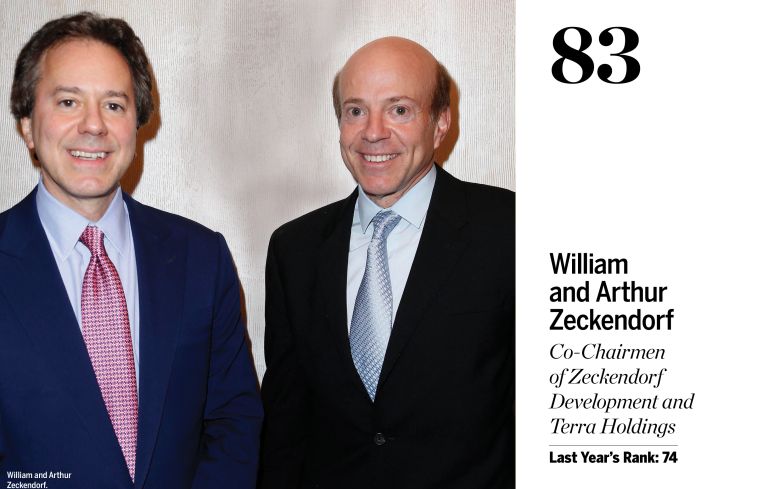
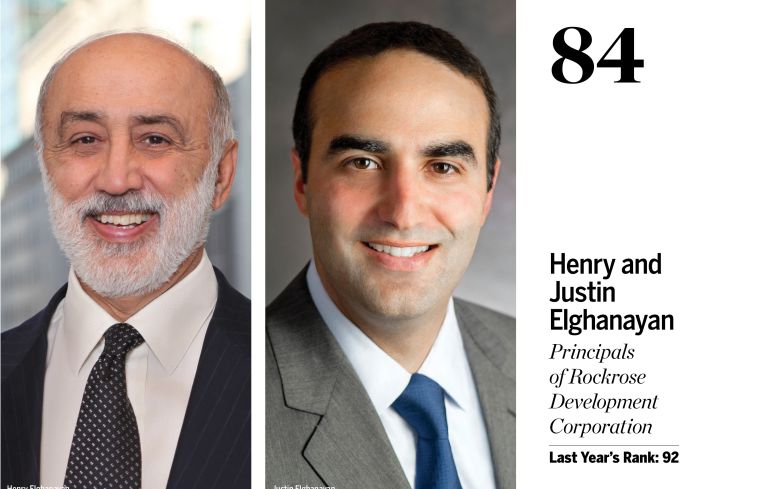
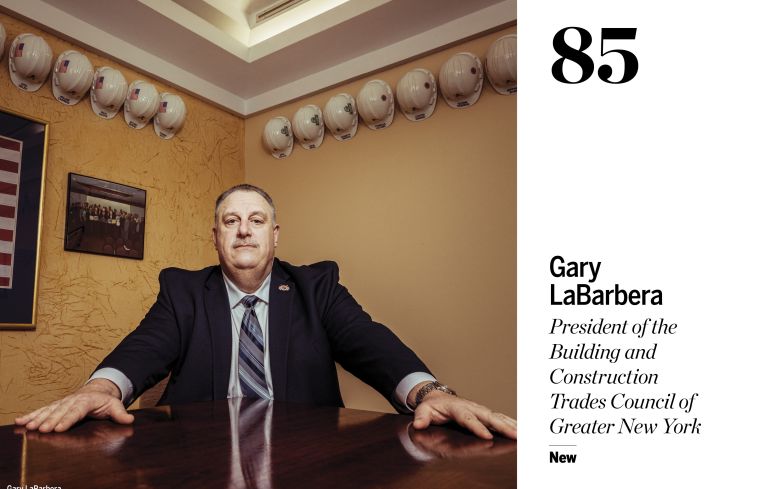


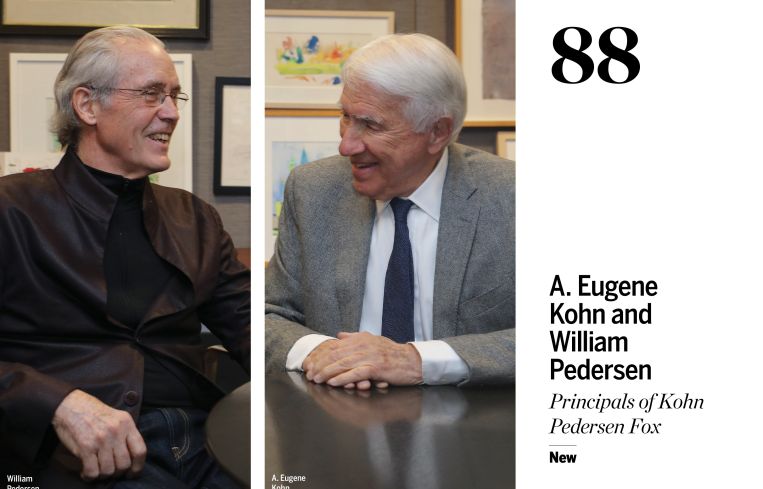

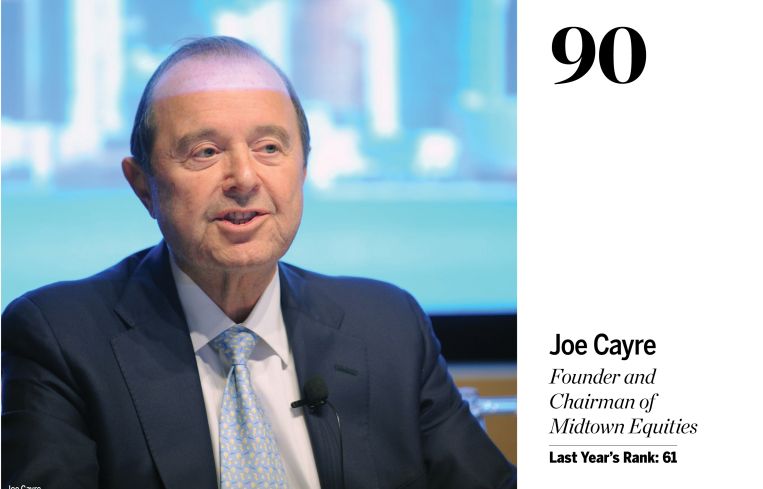

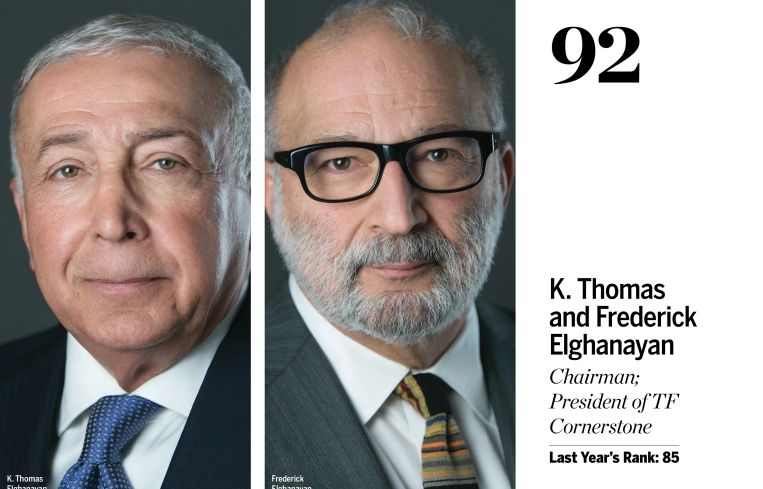
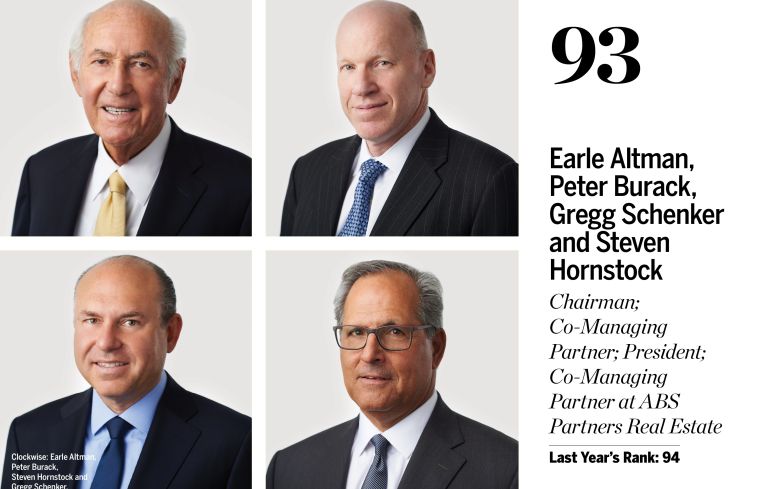




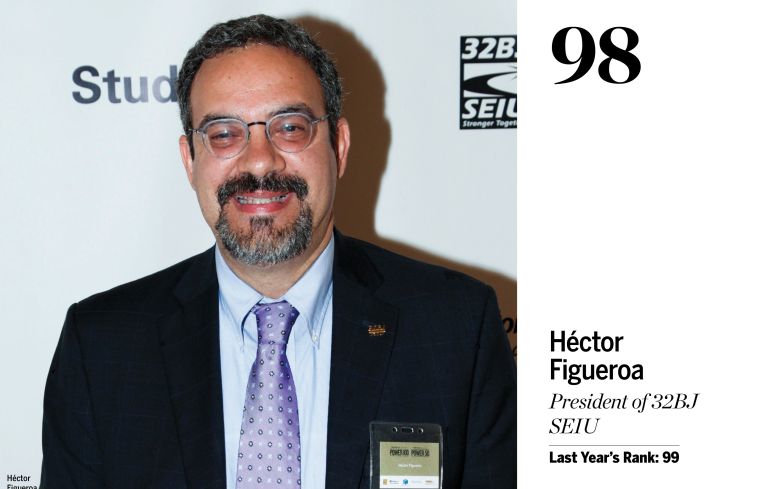
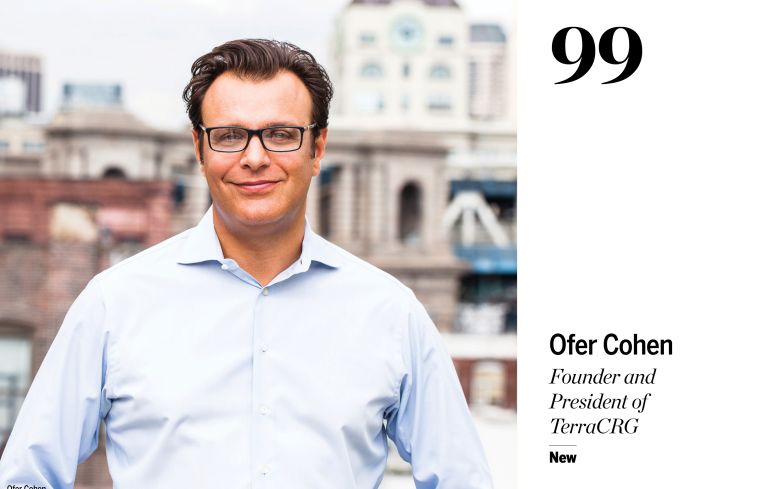
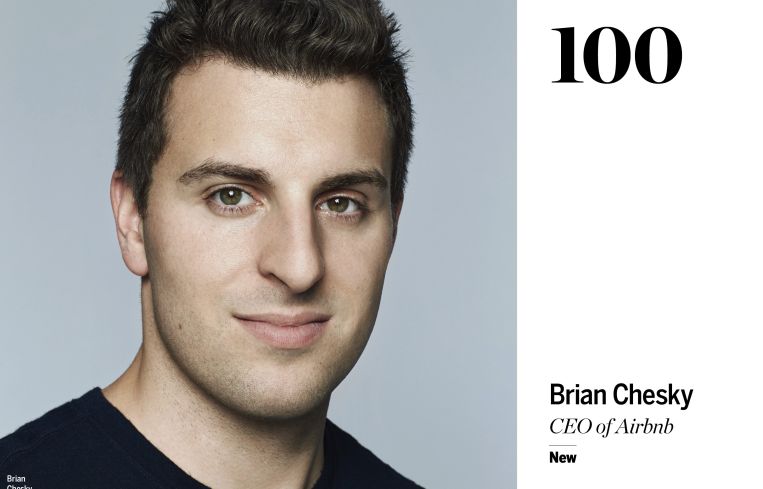
Whenever it comes time to rank the most powerful players in commercial real estate, the question to ask is: What was the story of the previous year?
Globally, 2016 was a year of topsy-turvy, in which voters decided to tell their respective leaders where to cram their best-laid plans. Great Britain decided that its unfulfilling union with the rest of Europe was over. Colombia saw peace with FARC guerillas within its grasp, only to find that voters had different ideas. And, of course, a wealthy real estate developer and political neophyte commandeered a train of aggrieved populism straight to 1600 Pennsylvania Avenue.
The most trusted minds responded with a collective “WTF?”
But many players in real estate could smell the disruption in the air. Unlike in 2015—when Blackstone made a $5.45 billion move to buy Stuyvesant Town-Peter Cooper Village the same year the firm picked up GE Capital’s sprawling real estate portfolio for $23 billion—you didn’t see too many blockbuster deals in 2016. (Blackstone moved down, slightly, to No. 3.) The name of the game was “prudence,” “holding pattern” and “wait and see.”
This might have been best exemplified by Related Companies. Back in 2010, the mandarins at Related planted the seeds of Hudson Yards, and they continued tending that 17-million-square-foot garden on the Far West Side of Manhattan. (Related’s Stephen Ross, Jeff Blau and Bruce Beal share the No. 1 spot this year.)
SL Green Realty Corp., New York City’s largest office landlord, didn’t make too many acquisitions in 2016 but spent a lot of time and money getting its own Midtown garden prepped at One Vanderbilt. (It’s in the No. 2 spot.)
The Rockefeller Group (No. 55) spent $600 million not to buy a new building but to modernize an existing one: 1271 Avenue of the Americas. And even though construction is far from finished, the move has already begun to bear fruit with a major lease to Major League Baseball.
Of course, every rule has its exception. There were certainly a few bold buys, and deals continue to be made. RXR Realty spent $1.65 billion acquiring 1285 Avenue of the Americas from AXA Financial (RXR’s Scott Rechler is No. 4 on our list). And as global lines blur, several international real estate players rose in our estimation, including newbies like Masayoshi Son—the Japanese billionaire founder of SoftBank (and chairman of Sprint) who waded deep into real estate waters with his $3.3 billion acquisition of Fortress Investment Group (landing a respectable No. 30). And while Anbang’s multibillion-dollar redevelopment deal with Kushner Companies went south, there is little question that the Chinese insurer that owns the Waldorf-Astoria is a serious player in New York and U.S. real estate—after all, Anbang did pick up Strategic Hotels and Resorts from Blackstone for $6.5 billion (Anbang’s Wu Xiahui is No. 38).
The rest of these choices should speak for themselves.
Behold the great and powerful of commercial real estate.—Max Gross
The 2017 Power 100 Issue:
The First-Timers
The Highest Jumpers
The Shadow of Trump
Power of Attorneys
The Power Politicians
The Power Landowners
The Power Disruptors
The Power Data Players
The Power Architects and Designers
Power in Memoriam: Leonard Litwin
1. Stephen Ross, Jeff Blau and Bruce Beal
Chairman and Founder; Chief Executive Officer; President at Related Companies
Last Year’s Rank: 2
When you’re building a small city on the Far West Side of Manhattan, that endeavor tends to outshine all the others.
But Related Companies has many projects underway. Little things like, say, a modest $1.6 billion redevelopment project for which Related, along with Vornado Realty Trust, won the bid in September 2016 to mold the James A. Farley Post Office, also on the Far West Side, into the Moynihan Train Hall Station. Or the construction Related commenced on the 80,000-square-foot boutique office and retail building in the toniest part of Soho at 300 Lafayette in May. Or completed leasing at the 230-unit rental building called The Easton at 205 East 92nd Street on the Upper East Side and the 84-unit building at 456 Washington Street in Tribeca.
For its 47-unit Tribeca condominium 70 Vestry Street, Related managed to snag Robert A.M. Stern to design it. (Penthouse units are asking upward of $50 million). Oh, yeah, and Related acquired the 450-apartment Marine Terrace portfolio in Astoria, Queens, for $115 million last June, which they’ll redevelop with new units for veterans.
But we still haven’t talked about the 18-million-square-foot elephant in the room: Hudson Yards.
On just that complex alone, Related and its partner Oxford Properties Group closed more than $7 billion in financing last year, Jeff Blau said.
The company opened 10 Hudson Yards in May, a nearly 2-million-square-foot office building—the first completed tower at the Yards. It is now 100 percent leased with blue chip tenants such as Coach, L’Oréal and VaynerMedia.
At 15 Hudson Yards, the first residential condo building on the site, sales began in September and more than 30 percent of the 285 units have sold for a collective $500 million. In December, BlackRock was announced as an anchor tenant with about 1 million square feet at the planned 2.3-million-square-foot building at 50 Hudson Yards.
And the Shops and Restaurants at Hudson Yards, a planned 1-million-square-foot property retail property at 20 Hudson Yards that will be anchored by Neiman Marcus, is already 60 percent leased and should be open in 2018.
“Really the ability to execute and build and deliver on all of that at the same time is something that no one has ever done before,” Blau said about its activities.
Of course the size and scope of Hudson Yards alone is historic. But what really stands out about the project is that the city’s attention has undeniably shifted from prime Midtown to the west.
“When we started Hudson Yards it was about price point,” Blau said. “But we no longer have to compete by being the less expensive alternative. We are achieving some of the highest price points in the city. I think Hudson Yards has shifted the future growth of New York City to the west, where people want to live and work.”—Liam La Guerre
2. Marc Holliday and Andrew Mathias
CEO; President at SL Green Realty Corp.
Last Year’s Rank: 3
“We’re only 12 percent of the inventory,” Marc Holliday told Commercial Observer, when we stopped by his Grand Central Terminal office for a chat earlier this month and asked him about his 2016, “but we did 24 or 25 percent of the big leases.”
Wait a second. Only 12 percent of the inventory? Yes, Holliday meant precisely what he said: The real estate investment trust is Manhattan’s largest office owner, with stakes in 127 buildings totaling a gargantuan 47.8 million square feet. Was this a humble brag?
“I thought we’d be more by now!” Holliday protested. “I thought by ‘17 we’d be closer to 20 percent—or at least approaching 20 percent!”
Nevertheless, there are good reasons why SL Green Realty Corp. didn’t grow even larger than it did over the past year.
“It was a quiet year on the acquisition front,” Andrew Mathias said. “Intentionally we took a pause. We focused on leasing, focused on selling and taking advantage of repositioning the portfolio and bringing in an equity partner on One Vanderbilt.”
One Vanderbilt—the 1.7-million-square-foot tower only a couple of hundred feet away from their office—commanded most of the conversation. “National Pension Service of Korea came in as a 27 percent partner,” Mathias said of the $525 million equity commitment SL Green struck, which was announced this January. “Hines purchased a [1.4] percent interest as well—they’re our developer partner in the building.” (The gross asset valuation of the tower is $3.31 billion, according to SL Green.) And last week we learned that Daniel Boulud was going to be headlining the project’s restaurant space.
Plans for One Vanderbilt have been around the block before getting to this point. “I’d say it was between 2011 to 2012 when Andrew and I started to fully recognize the potential of the site as being a blueprint, if you will, for what this kind of large-scale, world-class development could be,” Holliday said. “It’s being built all over the world—but really not as much in Manhattan because the zoning doesn’t permit it, and sometimes the economics don’t permit it.”
Of course, One Vanderbilt is still a long way off (aside from its anchor tenant of TD Bank, Mathias and Holliday said they don’t expect leasing to start until 2018.) While it was definitely the hot topic, there were plenty of other things to discuss—like SL Green’s 3.2 million square feet of leasing last year, or the $4 billion in gross asset value sales.
Most prominently, the company sold a 40 percent stake in 11 Madison Avenue to Prudential Financial for $480 million, and SL Green sold 388-390 Greenwich Street to Citigroup for $2 billion.
“Two-thousand-and-sixteen was a career year,” Holliday said.—M.G.
3. Jonathan Gray
Global Head of Real Estate at Blackstone Group
Last Year’s Rank: 1
Gray may be his name, but there have been nothing but sunny days over at Blackstone. “We had a very good 2016,” Jonathan Gray told Commercial Observer. “We think about our success in terms of investing capital, raising capital and returning capital, while simultaneously generating strong performance for investors along the way. On all of those metrics we had a great year.”
Blackstone currently manages a little over $100 billion of investor capital and oversees more than $200 billion in assets around the globe. Last year’s highlights include the investment firm’s $8 billion purchase of life science real estate investment trust BioMed Realty Trust, its $2 billion sale of its Chinese shopping center business to China Vanke, its €3.5 billion ($3.76 billion) acquisition of German office company OfficeFirst Immobilien and the $6.5 billion sale of a 25 percent stake in Hilton to Chinese conglomerate HNA Group.
“Even though we continue to be active sellers we’ve returned $60 billion of equity to investors over the past few years and at the same time we’ve continued to deploy capital,” Gray said. “The Blackstone platform has diversified from being a U.S. opportunistic business to a global opportunistic business, a global core-plus business and a global debt business.”
Closer to home, Blackstone’s largest New York City deal was its $620 million purchase of the eight-building, 894-unit Kips Bay Court multifamily property in December 2016. The acquisition complemented the firm’s $5.45 billion purchase of Stuyvesant Town-Peter Cooper Village in 2015 nicely, Gray said.
Blackstone used the same core-plus platform that it used to acquire Stuy Town to buy high-quality coastal real estate last year, including retail assets and logistics properties in California. Casting a wider net, the company snapped up over 330 million square feet in logistics properties globally, acquiring assets in Australia, China, Brazil and Japan and capitalizing on the shift to online retail.
Gray made global headlines last year when President Trump put him in the running for the Treasury Secretary role in his administration. Gray politely declined, telling reporters at the time that while it was an honor to be considered, “I still have much work to do at Blackstone.” So, what’s on his agenda for 2017?
“I would say our goal is firstly to continue to deliver for our investors through making smart investments but also to continue to expand and diversify the platform by moving into more geographies,” Gray said. “We want to build the biggest, most successful real estate platform around the globe and we want to be best in class in everything we do.”—Cathy Cunningham
4. Scott Rechler
CEO and Chairman of RXR Realty
Last Year’s Rank: 5
In 2016, RXR Realty reached a milestone: It closed the largest single-asset transaction in the company’s history. That was the $1.65 billion acquisition of 1285 Avenue of the Americas from AXA Financial. Simultaneously, RXR signed a lease renewal with UBS, which was nearing lease expiration, to keep its 900,000-square-foot North American headquarters in the 39-story, 1.8-million-square-foot office building. The renewal “really de-risked the transaction before we closed,” Scott Rechler said.
It was a banner year for RXR. Rechler made $3.72 billion of investments (acquisitions, developments and structured investments) in 2016 compared with $1.88 billion in 2015. But the company closed on $530.3 million of asset sales and recapitalizations versus $4.05 billion in 2015.
In 2016, RXR secured $225 million in financing from PNC Bank to fund its redevelopment of Pier 57, commenced construction on the pier and signed a 250,000-square-foot lease with Google at the complex.
RXR is also making a name for itself as a lender. Last year the firm loaned Extell Development Company $463 million for the construction of three Manhattan residential and mixed-use properties. The deal “was complex and had a lot of moving pieces,” Rechler said.
Finally, the company broke ground on about 2,500 multifamily units in Brooklyn and in the suburbs, Rechler said.
To “augment our team,” Rechler noted, RXR hired Joanne Minieri, the former president and chief operating officer of Forest City Ratner, as the new executive vice president and chief operating officer of its construction and development arm. And a month ago, David Garten started as senior vice president of infrastructure investment and emerging submarkets at RXR. He served as chief of staff to Rechler, while the latter was the vice chairman at the Port Authority of New York & New Jersey.—Lauren Elkies Schram
5. Steven Roth
Chairman of the Board and Chief Executive Officer at Vornado Realty Trust
Last Year’s Rank: 9
Steven Roth has been a power player in New York, Chicago, and Washington, D.C., real estate for decades. But when President Donald Trump tapped the Vornado Realty Trust head to co-chair his infrastructure council, the press began to take a harder look at Roth’s holdings and his links with the developer-in-chief.
The 75-year-old head of the real estate investment trust (which owns and operates more than 45 million square feet of office space and a staggering 2.5 million square feet of retail in Manhattan alone) made headlines earlier this month when he hinted that Vornado might sell its 49.5 percent stake in Kushner Companies’ 41-story, 1.4-million-square-foot office tower, 666 Fifth Avenue.
“This is an ongoing, complex, dynamic and unpredictable situation…It is the rare case when we may be sellers,” he wrote in his annual letter to investors. While Roth didn’t say why he wanted to sell his part of the property, Kushner Companies’ plan to redevelop the building into a 1,400-foot-tall, mixed-use skyscraper designed by Zaha Hadid probably has something to do with it.
Vornado also made waves in October when it spun off its Washington, D.C., properties and merged that new company with privately held D.C. landlord JBG Companies to form JBG Smith Properties. The powerful real estate investment trust will, once it closes, control 50 office properties spanning 11.8 million square feet, 18 multifamily properties with 4,451 residential units and 11 other properties totaling 700,000 square feet in D.C. and its immediate suburbs.
Despite the fact that Vornado earned more from retail year-over-year in 2016, according to their publicly disclosed data, Roth still had bleak predictions for retail in New York and nationwide.
“I believe the only fix for brick-and-mortar retailing is rightsizing by the closing and evaporation of, you pick the number, 10 percent, 20 percent, 30 percent of the weakest space,” he wrote in the letter to investors. “This very painful process will surely take more than five years. It will also create enormous opportunity for those with the capital and management platforms to feed on the carnage. For flagship retail (and for A+ malls), this is a pause, a cyclical bump. For everybody else, it is secular disruption.”—Rebecca Baird-Remba
6. Douglas Durst and Jody Durst
Chairman; President of Durst Organization
Last Year’s Rank: 6
If Douglas and Jody Durst, the chairman and president of the Durst Organization, respectively, had asked you to be involved in their “pyramid scheme” in 2016 it wasn’t what you thought.
Last year, they unveiled their Bjarke Ingels-designed 709-unit residential rental building called VIA 57 West at 625 West 57th Street—and it resembles a giant silver pyramid jutting out of the West Side Highway. Landmark Theatres, a brand co-owned by Mark Cuban and Todd Wagner, will open a location at the building.
And if that sounds like an impressive year in itself, they also opened a 375-unit apartment building at 100 West 31st Street called EŌS, where Nike leased 122,000 square feet of office space.
Douglas was apparently so enticed by VIA he took a pad there for himself (he currently has an apartment next door at the company’s Helena 57 West, which is named after his daughter).
“We are very proud of that accomplishment,” Durst said. “The biggest thing [last year] was being able to open both VIA and EŌS at the same time.”
In addition to completing buildings that had been in the works for years, Durst acquired a site in Long Island City, Queens, at 29-37 41st Avenue, in December 2016 for $175 million. Previously, Property Markets Group and Hakim Organization had plans at the site to build what could have been the largest building in Queens; Durst plans a residential building, but the plans aren’t yet solidified.
And in the summer, Durst purchased a 36,200-square-foot site at 1800 Park Avenue in Harlem from Continuum Company for $91 million.
Some of Durst’s older properties have also seen new life: At 4 Times Square, where Condé Nast left about 800,000 square feet empty, opting for 1 World Trade Center (another Durst Organization property), the landlord has been able to ink deals totaling about 500,000 square feet, including tenants RSM US, SS&C Technologies and ICAP.
Meanwhile, Durst continued construction on Hallets Point, its $1.5 billion, 2,400-apartment multi-building Astoria, Queens, mega-development.
The agreement reached between the Real Estate Board of New York and the Building and Construction Trades Council of New York over the 421a program last November will also help some Durst projects pencil out. (The program has since been revived in April 2017 as the Affordable New York Housing Program.)
“Last year, we started Hallets 1, and that’s well underway,” Durst said. “And now that 421a has been enacted we are going to be jumping into the next two buildings.”—L.L.G.
7. Rob Speyer
President and CEO of Tishman Speyer
Last Year’s Rank: 8
In a city with its fair share of real estate scions who’ve inherited the fruits of the past generation’s labor, Rob Speyer stands alone. Since being appointed the sole CEO of Tishman Speyer following his father Jerry’s semi-retirement in late 2015, the younger Speyer has sought to raise the family firm’s profile to unprecedented heights.
Tishman Speyer currently has 8 million square feet in its New York City development pipeline and “has never been more active” in the city, Speyer said. “I’ve never been more optimistic about New York’s future,” he said, citing all-time highs in employment among the positive economic drivers that have “made New York the embodiment of a thriving metropolis.”
In addition to The Spiral—the 2.85-million-square-foot, Bjarke Ingels-designed Hudson Yards skyscraper currently in predevelopment—Tishman Speyer is seeking to accelerate the rapid transformation of Long Island City, Queens, via the company’s massive plans for Jackson Avenue. Right across the street from a three-building, 1,900-unit residential development along the thoroughfare, the company is working on a two-towered, 1.1-million-square-foot ground-up commercial office complex that’s virtually unprecedented for the neighborhood (whose office market is more known for loft-like warehouse repositionings than Class A towers).
“This is the largest and most important project in Long Island City since Citibank built its iconic headquarters [at One Court Square, 27] years ago,” Speyer said. “We’re transforming six acres of vacant land into a dynamic, 24/7 community, and it’s all a 15-minute subway ride from Midtown.”
But Tishman Speyer’s reach extends far beyond the five boroughs; globally, the company had nearly $46 billion in assets under management and operated 84.5 million square feet of commercial and residential real estate at the end of last year (the company has focused on core markets around the world, including London, Paris, Frankfurt, Berlin, Shanghai and São Paulo).
Speyer’s own reach has also grown beyond the family firm: Now in his fifth year as chairman of REBNY (the industry group has twice extended his three-year term by one year), he plays an immensely influential role within the city’s real estate industry at large. That influence was evident through the role Speyer played in the protracted negotiations with state legislators and the construction unions over the renewal of the 421a tax abatement.
“It wasn’t merely an extension of 421a: It was a reinvention of the program and one that will ensure we begin to address the housing shortage across all income levels in the city,” Speyer said of the new 421a, now known as Affordable New York. “It was of critical importance, so it deserved the time it took.”—Rey Mashayekhi
8. Ric Clark
Senior Managing Partner and Chairman of Brookfield Property Partners
Last Year’s Rank: 4
“We feel like 2016 was a very busy year for us,” Ric Clark told Commercial Observer. “We completed the repositioning of Brookfield Place. The retail center is essentially completed, and traffic is way up.”
With more than 95 percent of the retail occupied, including a newly opened Saks Fifth Avenue and one of the city’s most popular food halls, “busy” might understate the case.
In terms of office leasing, Brookfield signed a 403,000-square-foot lease renewal with the Royal Bank of Canada at 200 Vesey Street through 2032 and a 127,000-square-foot lease with Tullett Prebon.
Since work at the 8.5-million-square-foot complex (formerly known as the World Financial Center) is on track, Clark is turning his attention to the west—Manhattan West.
Brookfield is also cranking out its 7-million-square-foot development on Ninth Avenue between West 31st and West 33rd Streets.
It finished designing and redeveloping the “elephant foot,” a building at 450 West 33rd Street known now as 5 Manhattan West, and signed big-name new tenants there just last week.
“That building was formerly one of the ugliest in the city,” Clark said. “But we’ve transformed it, and we have had a feeding frenzy for tenants wanting space there.” That includes Whole Foods, which recently signed on for 60,000 square feet.
At 1 Manhattan West, a 2-million-square-foot building under construction, Skadden, Arps, Slate, Meagher & Flom signed a 550,000-square-foot space, and the National Hockey League took a 160,000-square-foot deal.
And Brookfield completed an 844-unit rental building at 3 Manhattan West, called the Eugene (after former Brookfield Chairman John Eugene Zuccotti), which opened to residents last month.
Besides Manhattan West, Brookfield and The Swig Company recently acquired a long-term ground lease for the 386,000-square-foot office building at 1100 Avenue of the Americas from the Nickerson family and is planning to erect a new building there.
And like many of its peers, Brookfield is also turning to Brooklyn. The developer began construction of two apartment towers with nearly 800 apartments at Greenpoint Landing with Park Tower Group. One is set to open in 2018 and the other the following year.—L.L.G.
9. Andrew Cuomo
Governor of New York
Last Year’s Rank: 15
As Andrew Cuomo casts his eye on the biggest prize in politics, he’s suddenly gotten serious about New York City’s aging infrastructure and its sweeping affordable housing crisis.
Earlier this month, he brought the 421a tax exemption back from the dead after a two-year-long stalemate that threatened to derail New York’s rental development pipeline. And while 421a’s return has been a big deal for the city’s real estate world, it hasn’t exactly grabbed headlines or helped further his chances at his widely rumored presidential run in 2020.
But Cuomo has been reinforcing his image as a second-coming-of-Robert-Moses-type master builder in other ways. “Right now we have the largest infrastructure investment in the history of the state of New York at $100 billion,” he said in his January State of the State address. “We’re doing roads and bridges all across the state. We’re also reimagining airports. Why? Because airports are the new front door to communities.”
Cuomo accelerated construction on—and ultimately finished—the three-stop Second Avenue subway, opening it on the last day of 2016. It is one of the world’s most expensive transit projects with two miles of tunnel that cost New Yorkers $4.45 billion. He announced an ambitious $1.6 billion plan to revamp Pennsylvania Station and to transform the Farley Post Office into a train hall that would host passenger facilities for Amtrak and Long Island Railroad last September. The governor is also pushing forward a proposal to build an AirTrain between Willets Point, in Corona, Queens, and LaGuardia Airport, as well as an $8 billion plan to modernize the airport and construct three new terminals. Also on the table is an $8 billion proposal to renovate John F. Kennedy International Airport and $2 billion to ease traffic and upgrade the roads surrounding it.
But, he’s thinking on the local level, too. Last month, he announced a $1.4 billion investment to build 3,000 units of housing and improve access to health care and recreation space in central Brooklyn.—R.B.R.
10. Jeff Sutton
Founder and President of Wharton Properties
Last Year’s Rank: 11
There are few people in real estate who would question just how bad the last 12 months has been for retail—except, perhaps, if your name is Jeff Sutton.
While landlords throughout the city (check that, throughout the country) have been hemorrhaging tenants left and right, the sphinx-like head of Wharton Properties inked a 15-year deal to get Nike into a 69,214-square-foot space at 650 Fifth Avenue (which Sutton owns with SL Green Realty Corp.) where the 7,000 square feet of ground floor space traded at $4,000 per square foot. The 15-year deal is worth a jaw-dropping $700 million in total.
And while prime Fifth Avenue storefronts have been sitting empty, somehow Bulgari and Ermenegildo Zegna are parading their wares at 730 Fifth Avenue, a.k.a., the Crown Building, which Sutton owns with GGP (Zegna’s lease was for approximately $150 million for 15 years, as The New York Post reported, and Bulgari is paying a record $5,500 per foot); or, there’s the lease that Sutton signed in Times Square to bring a Swarovski to the old Roxy Deli space at 1565 Broadway, which the Post also reported (the exact prices on that deal remain unknown).
Of course, Sutton’s reach extends well beyond Times Square and the tony parts of Fifth Avenue; Wharton opened a massive, 200,000-square-foot chunk of retail at 100 West 125th Street along Lenox Avenue, which is home to a Burlington Coat Factory, an Olive Garden, a Raymour & Flanigan and an American Eagle with (most enticing of all) a Whole Foods set to open later this year.
Moreover, Sutton tapped the Israeli bond market, raising $245 million on the Tel Aviv Stock Exchange (at a 3.9 percent interest rate—a record low for an American company) in an issuance backed by 18 assets.
All in all, while many of his peers struggle, Sutton hustles. He’s the one guy in the fraught cauldron of retail we’re not particularly worried about.—M.G.
11. William Rudin
Vice Chairman and CEO of Rudin Management Company
Last Year’s Rank: 12
Family has always been important to the Rudins, who have passed down their real estate business through five generations. But it’s something that has taken outsized importance since Jack Rudin, the former chairman of Rudin Management Company, died this past December at the age of 92.
“He trained us very well, as did my dad [Lewis Rudin],” William Rudin said of his late uncle’s influence on him, his siblings and his cousins. “I know he’s looking down very proudly on what we’ve accomplished, just as I look upon my kids and am thrilled that they’re involved [in the company].”
As far as business is concerned, the Rudins are looking in only one direction: forward. On top of its considerable Manhattan portfolio (16 office properties spanning 10 million square feet and 20 residential buildings comprising more than 4 million square feet), the firm is finishing up work on its 199-unit condominium development on the former site of St. Vincent’s Hospital in the West Village. The Greenwich Lane, as the development is known, is more than 95 percent sold with only “a few apartments and three townhouses” left on the market, Rudin said.
But Rudin’s most notable recent move is Dock 72—the 16-story, 675,000-square-foot ground-up office development it is building at the Brooklyn Navy Yard with partner Boston Properties. The project, which represents the company’s first development outside of Manhattan, is also a collaboration with WeWork, which will anchor the property with 222,000 square feet of space and “worked with us on designing the project and curating the amenities,” according to Rudin.
The developers expect to top out Dock 72 this summer, with tenants able to begin building out their spaces this fall and move-ins likely to start in the first quarter of next year. While WeWork is the only current tenant signed on, Rudin has high hopes that the building will become a destination for the young, creative, entrepreneurial companies that are increasingly driving the city’s economy.
“It’s a different model from how we’ve looked at office buildings before,” he said, citing Dock 72’s 35,000 square feet of amenities (including a 13,000-square-foot food hall, plus a wellness center, rooftop gardens, outdoor basketball court and bike valets). “It’s following the residential model of being fully amenitized, and allows small- and medium-sized companies who are competing for talent to offer those amenities to their employees.”—R.M.
12. Barry Sternlicht
Chairman and CEO of Starwood Capital Group and Chairman of Starwood Property Trust
Last Year’s Rank: 17
If you want to take a look at Barry Sternlicht’s handiwork, all you need to do is take a stroll along the Brooklyn waterfront.
There you will find 1 Hotel Brooklyn Bridge, Sternlicht’s eco-luxury lodging, which opened earlier this year, where the beams were recycled from the Domino Sugar Factory, the floors from an old distillery in Kentucky, the power is 100 percent wind, much of the water comes from a rain reclamation system and one can nary find a single plastic bottle in the whole 194-room joint.
“It’s not a brand—it’s a cause,” Sternlicht told Commercial Observer last year, proclaiming it his favorite among the many hotel ventures in his storied career. (Since 2015, Starwood has opened two other 1 Hotels, one each in Midtown and South Beach.)
Of course, hotels are only part of Sternlicht’s real estate career. Starwood Property Trust closed a whopping $6.4 billion in transactions in 2016—a jump from $600 million in 2015. And it also took on a $5.8 billion portfolio of apartments from Equity Residential.
Still, it keeps coming back to hotels with Sternlicht. In October 2016, Starwood sold a $2 billion stake to China Life Insurance Company (China’s largest insurance company) to invest in 280 select-service hotels expanding over 40 states.—M.G.
13. Anthony Malkin
Chairman and CEO of Empire State Realty Trust
Last Year’s Rank: 7
In 2016, Empire State Realty Trust leased just under 1 million square feet of space. That compares to a little over 1.2 million square feet leased the year prior. The reason for the disparity?
“[In 2016] we didn’t have as much space to lease,” said Anthony Malkin. “We’d done so much leasing the prior year and in 2016 we were busy redeveloping intentionally vacated space for lease-up this year.”
As the biggest landlord in the Garment District, ESRT boasted some high-profile retail deals last year including stationery retailer Papyrus signing a lease at 1359 Broadway between West 36th and West 37th Streets and Maison Kayser taking space at 1400 Broadway between West 38th and West 39th Streets. At ESRT’s 12-story 1333 Broadway between West 35th and West 36th Streets, Dr. Martens also signed a deal.
Malkin said the company last year “did some tremendous office leasing.” That included The Michael J. Fox Foundation signing an 86,000-square-foot lease at ESRT’s 111 West 33rd Street; JCDecaux taking 46,537 square feet over the entire 73rd and 74th floors at the Empire State Building at 350 Fifth Avenue between West 33rd and West 34th Streets; and GuildNet taking 37,680 square feet at 250 West 57th Street between Broadway and Eighth Avenue.
In 2016, the Qatar Investment Authority acquired a 9.9 percent stake in ESRT on a fully diluted basis, which gave the company a $622 million infusion. And Empire State Building Observatory achieved a record revenue of $124.8 million in 2016, an 11.2 percent increase from $112.2 million in 2015.
Malkin highlighted the company’s 50 percent rent spreads between new and expired rents.
“We’ve been doing well on that,” he said. “It’s pretty consistent. We are repositioning these properties for new tenants with better credit, longer-term leases and the tenants are generally larger.”
The company, public since 2013, is on a mission to modernize its aged trophy properties, spending between $80 and $120 per square foot to do so. “You can’t just put lipstick on a pig,” he said.—L.E.S.
14. Robert Stuckey
Managing Director and Head of U.S. Real Estate Group for The Carlyle Group
Last Year’s Rank: New
“It’s no secret that we’re later in the cycle,” Robert Stuckey, who runs the real estate division for The Carlyle Group, said last week, “so we had to be selective.”
But Carlyle’s selections over the past year have proven pretty fascinating.
For one thing, there’s 866 United Nations Plaza, where Carlyle just picked up 330,000 square feet of office condominium space for $217.5 million from Meadow Partners. This works out to less than $700 per square foot—a pretty good figure when you consider that area comps are roughly $1,000 per square foot. (Carlyle plans to sell off the condos.)
Then there’s Glasshouses, the Far West Side project at 660 12th Avenue (in a space that’s currently occupied by Federal Express) that is going to be turned into an event space with Jack Guttman and will feature a 50,000-square-foot roof and promises all the lighting, the high ceilings and the cachet for 2,000-person soirées. Carlyle is hoping to have that project finished by the end of 2018.
And, like every other serious New York real estate player, Carlyle extended its reach into the outer boroughs; it recently sold its stake in the Brooklyn Hilton at 140 Schermerhorn Street for $88 million according to The Real Deal, and it has closed on about 115 condos as part of the same project at 265 State Street. (The residential portion is called The Boerum.) Of course, that’s just some of the company’s recent projects in New York. On the national scene, Carlyle is pretty much everywhere, and this January the firm announced that it was embarking on its eighth U.S. real estate fund where it’s hoping to raise a modest $5 billion.—M.G.
15. Larry Silverstein and Marty Burger
Chairman; CEO of Silverstein Properties
Last Year’s Rank: 13
Last September was the 15th anniversary of the 9/11 tower attacks—and ever since that terrible day, Larry Silverstein has dedicated himself to rebuilding the area anew. Two-thousand-and-sixteen was the year the end looked in sight.
Silverstein Properties, led by Silverstein and Chief Executive Officer Marty Burger, completed 7 and 4 World Trade Center (in 2006 and 2013, respectively) and last year topped out 3 World Trade Center. Once 2 World Trade Center, his planned 2.8-million-square-foot mega-tower, finds a suitable anchor tenant, his work will be complete. One World Trade Center (which is owned by the Port Authority of New York & New Jersey and the Durst Organization) premiered in 2014.
“We haven’t rebuilt everything, but we’ve come very close,” Silverstein said. “We’ve been going at it for about 15 years, and I’d say it’s going to be another five years. I’m 86 now—by that time I’ll be 91. Tower 2, that’s the last building. Just stay tuned, because one of these days we are going to be able to talk about Tower 2.”
In the meantime, Silverstein Properties has been securing big leases at the rest of the complex. It completed a deal with media company GroupM to expand its 520,000-square-foot lease at the 80-story, 1.8-million-square-foot 3 World Trade Center by another 170,000 square feet. Music streaming company Spotify took 378,000 square feet at 4 World Trade Center at the start of 2017.
Last June, billionaire Ronald Perelman made a $75 million gift to Silverstein Properties’ free-standing performing arts center at the World Trade Center. The 90,000-square-foot, three-auditorium building is set to break ground at the site in early 2018 and is scheduled to open in 2020. And the one-acre Liberty Park opened to the public.
Of course, it’s easy to forget that not everything Silverstein Properties is working on is at the World Trade Center; it has approximately $10 billion of projects under development right now. The company is planning its development of two towers on a site at 514 11th Avenue on the Far West Side, which it purchased in January 2015 for $115 million.
It completed the Robert A.M. Stern-designed 30 Park Place, an 82-story condominium and Four Seasons hotel (80 percent of the units have been sold thus far). The luxury tower even lured Silverstein and his wife from their pad at Park Avenue and East 59th Street.
“I think the World Trade Center has emerged as the commercial heart of the city’s hottest residential neighborhood. Twenty percent of the people that work Downtown, live Downtown,” Silverstein said. “To me, Uptown there are a lot of old people…We’ve decided it’s time to be where the young and dynamic people are.”—L.L.G.
Silverstein Properties' entry on this list has been updated to include CEO Marty Burger, who was initially absent from the entry due to an editorial oversight.
16. Gary Barnett
Founder and President of Extell Development Company
Last Year’s Rank: 14
Having met a fair number of ambitious young people who are either looking to get into the development game or have just started their careers, they virtually all speak of Gary Barnett in the sort of reverential tones usually reserved for deities. Can you blame them? Barnett is an icon in New York City real estate, the self-made man who rose from Lower East Side beginnings and an early career in the diamond trade to assemble an enviable portfolio of privately-held assets across the city. As a builder, he’s already left an indelible mark on the city—erecting modern-day, floating palaces for the global elite.
Of course, it hasn’t all been strawberries and cream. One57, the 1,000-foot-tall luxury condominium skyscraper that basically invented Billionaires’ Row, has yet to sell out more than five years after sales launched. Barnett’s exposure in the luxury condo space has meant that his foray into the Israeli bond market, where he’s issued hundreds of millions of dollars in debt since 2015, has been rife with shareholder concerns over whether he’ll be able to pay back what he owes. And even when he tried to fly in a more reasonably priced market via One Manhattan Square—the under-construction Lower East Side condo tower where most of the units are priced “only” up to $3 million—Barnett had to pull teeth to finance the thing, ultimately relying on Scott Rechler’s RXR Realty for the mezzanine lending necessary.
But if there’s one truism in New York City real estate that has actually held up through the years, it’s that you’d be unwise to bet against Barnett. The man's influence on the Manhattan skyline shows no sign of abating; he’s only building what will become the tallest residential building in the Western Hemisphere at 217 West 57th Street, the behemoth known as Central Park Tower. Meanwhile, Extell continues to make moves in retail (signing Target last summer to its new 500 East 14th Street development) and hotels (reportedly inking a deal to build a new Hard Rock Hotel in Times Square). All things considered, it looks like the kids are onto something.—R.M.
17. Sam Zell
Chairman of Equity International
Last Year’s Rank: New
For an outfit that’s run by a Chicagoan, Equity Residential—the real estate arm of Sam Zell’s Equity Group Investments—sure owns a lot of New York City. Equity Residential controls 40 properties and 10,632 apartments in the Big Apple.
Last month, Zell told Bloomberg that rent prices in the city are “flattening out,” and the outpouring in new apartments is beginning to taper off, even as demand remains high. “The surge in supply is starting to slow down as banks and investors become concerned about the impact of supply and demand,” he said.
Of course, Gotham is only one piece of Zell’s real estate empire. Nationwide, the company owns 300 properties and 76,513 apartments, and its revenue grew 3.7 percent between 2015 and 2016, according to its annual earnings report released in January.
But in New York City, Equity saw the number of new leases drop 3.5 percent and revenues dip 1.5 percent. A growing supply of new apartments and a slowdown in high-paying jobs were to blame.
“Financial services are contracting and tech job growth has stalled,” the company’s COO, David Santee, said in its fourth-quarter 2016 earnings call this February.
In 2017, the real estate investment trust expects that trend to continue with a 1.8 percent drop in revenues here in the city. It has also budgeted $4 million in rent concessions for 2017—which far exceeds the rent concessions it has set aside for residential leasing in any other city.—R.B.R.
18. Mary Ann Tighe
CEO of the New York Tri-State Region at CBRE
Last Year’s Rank: 19
There is no other broker whose name is as instantly recognizable (and instantly identified with success) as that of “Mary Ann”—the Tighe isn’t really necessary.
Mary Ann Tighe, the chief executive officer of CBRE’s New York Tri-State Region since 2002, dominated 2016 office leasing. The former Real Estate Board of New York chair took the global firm’s top spot with 122 transactions, covering 4.6 million square feet and valued at $3.1 billion.
It’s an accolade she has hit before—in 2008, 2011 and 2014. But, unlike in previous years, she said there wasn’t a single deal that was revolutionary.
“I didn’t do what I would call a transformative deal [in 2016],” Tighe said. “I didn’t even submit anything for [REBNY’s] Deal of the Year Award. It wasn’t like the neighborhood changed because of what we did. We didn’t make New York different because of my 2016 deals, which is different from many of my deals in the past.” (For the record, Tighe has won the Deal of the Year Award eight times.)
However, she grinded out a lot of singles and doubles that were run out flawlessly.
“What I would say is 2016 was hugely productive for me,” Tighe said. “Of all of the teams that we put together for the deals, I can’t think of a hiccup that happened. Each of these deals had the right team members.”
Tighe led a CBRE team that represented the landlord of 55 Water Street, the Retirement Systems of Alabama, in a 900,027-square-foot renewal for McGraw Hill Financial’s office space. It was the largest office lease in New York City since 2014.
She also helmed another CBRE team that represented L&L Holding Company in the 200,000-square-foot anchor lease for hedge fund Citadel at L&L’s building under construction at 425 Park Avenue. The lease comes with the penthouse of the new luxury 900-foot tower, which Citadel will rent for $300 per square foot, the most expensive office rent in the city’s history.
And she has already kicked off 2017 in prime form. She and a CBRE team represented landlord Silverstein Properties in a 378,000-square-foot deal for Spotify on floors 62 to 72 of the 2.3-million-square-foot 4 World Trade Center, which was announced in January.
Plus, Tighe worked on a 784,000-square-foot renewal and expansion of 21st Century Fox’s headquarters at 1211 Avenue of the Americas and a 440,000-square-foot lease for News Corp’s headquarters there. Tighe might just be modest, but any other broker would call that one a home run.—L.L.G.
19. Donald Bren
Chairman of Irvine Company
Last Year’s Rank: New
Donald Bren is most closely identified with Southern California—he started building homes there in 1958, and his Newport Beach-headquartered Irvine Company owns a substantial portion of Orange County, including office buildings, shopping centers and acres of still-undeveloped land. Yet, the empire of the nonpresidential billionaire named Donald also reaches east, notably to 200 Park Avenue in New York City. He owns 97 percent of 200 Park, which is better known as the MetLife building (Tishman Speyer owns the rest).
The 84-year-old, who declined to be interviewed, quietly took control of 200 Park and has been building his stake at the 58-story tower since 2005. It’s a replication of how he built Irvine Company, buying out one stakeholder after another over the course of nearly two decades. The slow and patient approach has made him the richest developer in America, with a net worth of $15.2 billion, according to the Forbes 2016 400 list, a ranking of the country’s richest billionaires.
Bren’s disciplined long-range planning reflects his experience in the United States Marine Corps, yet he’s also an expert skier (which earned him scholarship funds in college; an unlucky ankle break kept him from the 1956 Olympics). But one thing that distinguishes him from many of his real estate brethren is his avoidance of the spotlight. Bren would be completely under the radar were it not for his outsized philanthropy, with education, conservation and medical research being focuses. (At one awards ceremony, it was estimated that he’s given away $1.3 billion.)
Now at an age when many would retire, Bren is still climbing his mountains—methodically. “We cannot predict the future,” he said a few years ago in an interview at the Urban Land Institute, “but we can plan for it.”—Alison Rogers
20. David Simon
Chairman and CEO of Simon Property Group
Last Year’s Rank: New
Simon says...never mind jumping in the air or sticking out your tongue, but follow his lead and maybe you’ll have a shot at becoming the largest shopping mall operator in the U.S.
“Here we go again,” David Simon wrote in a letter to stockholders in the company’s 2016 annual report. “No, I’m not talking about the constant narrative that retail real estate and the mall are becoming disenfranchised given the growth in internet retailing. I am referring to our record financial performance.”
During a year when retail was the ugly duckling of asset classes, with bankruptcies and store closures dominating headlines, Indianapolis-based Simon Property Group boasted record results. Its consolidated revenues increased 3.2 percent year-over-year to $5.4 billion, its net income reached $1.84 billion, and occupancy for its U.S. malls and Premium Outlets reached an all-time high of 96.8 percent.
Through the years, Simon has recycled $10 billion of real estate through the sale of non-core assets and the spinoff of smaller malls and strip centers. When the firm was founded in 1993 its focus was on small malls in small markets. Today, that focus has shifted to big and vibrant retail centers in major markets that encompass dining and entertainment options.
For example, last year Simon Property Group added The Shops at Crystals on the Las Vegas strip to its portfolio, paying $1.1 billion for the asset along with Invesco Real Estate.
The company isn’t budging from its long-term strategy of owning high-quality retail assets and is paying no mind to the naysayers. “I don’t see any reason why well-located, high-quality retail real estate that has a diverse product mix, that is well leased and managed, provides services and looks and feels good, won’t continue to increase in value. Don’t fall for the edicts,” Simon wrote. We won’t; Simon said so.—C.C.
21. Jed Walentas
Principal at Two Trees Management
Last Year’s Rank: 25
Two Trees’ Jed Walentas already transformed one waterfront Brooklyn neighborhood, and he’s on his way to building another. The first one, Dumbo, is legend, and the next is the redevelopment of the Domino Sugar Factory in Williamsburg. The 4-million-square-foot, $3 billion complex near the Williamsburg Bridge is poised to become a mini-neighborhood, complete with office space, retail, apartments and a public park.
Last week, Two Trees revealed images of Domino’s six-acre park along the East River and announced it would open in the summer of 2018. The $100 million green space will feature a 450-foot-long elevated walkway called the Artifact Walk, 30 historical pieces salvaged from the factory and a pair of 80-foot-tall cranes. Ultimately, the 11-acre industrial site will produce 2,800 apartments, a quarter of which will be affordable, 380,000 square feet of office space in the historic former factory building and four new residential buildings. At the moment, the first 16-story rental building is inching toward the finish line at 325 Kent Avenue. In June 2017, it will open its doors with 522 apartments, 105 of which will rent for below-market rates.
In the past few months, the 49-year-old Brooklyn firm also wrapped up 379 rentals at the 300 Ashland Place, the angular 35-story tower designed by TEN Arquitectos in Fort Greene. The ground floor retail space, which will house Whole Foods and an Apple store, is still under construction.
Between 300 Ashland and Domino, the developer is working on roughly $3.3 billion worth of projects. Its current portfolio is valued at $4 billion and includes 2,000 apartments and 3 million square feet of commercial and industrial real estate.—R.B.R.
22. Brett White, John Santora and Bruce Mosler
CEO and Chairman; Vice Chairman and Tri-State Region President; Chairman of Global Brokerage at Cushman & Wakefield
Last Year’s Rank: 30
When you look at the moves that Cushman & Wakefield has undertaken in the last two years, it’s obvious that the brokerage’s ambition is limitless. Under the leadership of Brett White, John Santora and Bruce Mosler, C&W played a game of musical chairs with its leadership and went on a hiring spree, nabbing top executives from rival brokerages as whispers of a public offering got louder.
Tod Lickerman, the firm’s global president, became the chief executive of the Americas, and Santora, a 40-year veteran at C&W, replaced Ron Lo Russo, who returned to a brokerage role.
C&W also snatched Mark Weiss from Newmark Grubb Knight Frank in January 2016, Glenn Isaacson of CBRE that May, Douglas Harmon and Adam Spies of Eastdil Secured in October and Ed Wartels and Justin Halpern of Cresa New York in December. Most recently, in March 2017, 36-year veteran Patrick Murphy joined C&W from CBRE.
“It’s really about building strength in New York,” Santora said. “Not that we got weak, but [we wanted] to take that jump forward.”
C&W, which has more than 43,000 employees, is trying to bolster its New York office because doing big deals here will trickle into transactions in other markets around the world as C&W makes closer relationships with global investors in the city, Santora said.
C&W’s capital markets team, now led by Spies, Harmon and Robert Knakal (who came aboard in 2014 when the firm bought Massey Knakal Realty Services), have been responsible for 78 percent of office property sales above $50 million since 2010.
The company advised landlord Paramount Group on a $850 million refinancing of 1301 Avenue of the Americas from AXA Equitable Life Insurance Company, MetLife and New York Life in October.
And C&W was involved in eight of the top 14 retail deals in Manhattan by square footage. This included Nike’s nearly 70,000-square-foot store at 650 Fifth Avenue, Under Armour’s lease at 767 Fifth Avenue for 53,000 square feet and American Girl’s 40,000-square-foot shop at 75 Rockefeller Plaza.—L.L.G.
23. Darcy Stacom and William Shanahan
Chairwoman and Head of NYC Capital Markets; Chairman, NYC Capital Markets at CBRE
Last Year’s Rank: 26
When the sale of 245 Park Avenue closes for $2.2 billion (a transaction that CBRE confirms but won’t comment on), Darcy Stacom and William Shanahan will have brokered three of the four New York City office building sales that topped $2 billion. The CBRE sales team claimed a whopping $8.3 billion in transactions over the past year. They also set a pricing record with 693 Fifth Avenue, the former Takashimaya building, which sold for $525 million, the highest price per square foot for an office building in New York City—ever.
Other notable deals include the largest multifamily sale of 2016, 894 units at Kips Bay Court, for $620 million; the $330 million sale of 441 Ninth Avenue; and the creation of a ground lease at 1100 Avenue of the Americas, which will lose its current tenant, HBO, to Hudson Yards, in two years.
CBRE also navigated delicate partial interest sales, such as PGIM’s $1.04 billion purchase—with around $480 million in cash and assumption of debt—of a 40 percent stake in 11 Madison Avenue and China Investment Corporation’s $683.5 million purchase of a 49 percent stake in One New York Plaza.
“With global economic forces in opposition, investors are looking closely to the fundamentals of each transaction,” Stacom said. “This is the time when our firm and our team excel.”—A.R.
24. Blake Hutcheson and Andrew Trickett
President and CEO; Senior Managing Director of Investments at Oxford Properties Group
Last Year’s Rank: 27
As an investor on behalf of OMERS, one of Canada’s largest pension funds, Oxford Properties Group has both access to capital and time on its side. “We think in decades on behalf of OMERS, and this continues to serve us well,” Blake Hutcheson said.
Oxford has concentrated much of its advantage on development in global cities—or “city-states” if you will—and hit milestones in Boston (where it is now the second-largest landlord) and Washington, D.C., (where its first development is 91 percent leased). In Canada, it unloaded a 50 percent interest in an office portfolio in Toronto and Calgary for $1.18 billion and, in the U.S., has set its sights on San Francisco.
But it’s the firm’s activity at Hudson Yards that has made it a New York City name. Alongside its partner Related Companies, Oxford opened 10 Hudson Yards, a 1.8-million-square-foot office building that is the first office tower to open in the massive West Side “newborhood.” The developers also launched residential sales at 15 Hudson Yards (with asking price points north of $2,300 per square foot), announced a Thomas Heatherwick public art piece, which resembles a honeycomb with 16 stories of stairs, and signed 2 million square feet of leases.
“The thriving megacities in our future,” said Andrew Trickett, “will understand that civic, cultural and commercial interests are interconnected.”—A.R.
25. Owen Thomas and Douglas Linde
CEO; President of Boston Properties
Last Year’s Rank: 29
Owen Thomas and Doug Linde form the brain trust behind the largest office REIT in the U.S., which owns nearly 48 million square feet across a portfolio that’s heavily focused on Class A office space in core, gateway urban markets—namely New York, Boston, San Francisco and Washington, D.C.
The pair is pursuing a strategy that has seen Boston Properties fund new developments and acquisitions by offloading “non-core assets that the market values more dearly than we do,” Thomas told CO. In turn, the company has deployed that capital via a variety of ambitious projects.
In April, Boston Properties topped off Salesforce Tower in San Francisco—the 1,070-foot-tall, 1.4-million-square-foot office property that on completion will become the tallest building in the country west of Chicago. In New York, the REIT is teaming up with Rudin Management Company and WeWork on Dock 72, the 675,000-square-foot Brooklyn Navy Yard office development that will be delivered next year.
“Most of our new investments today are in developments rather than acquisitions,” Thomas explained. “The reason for that is we’re building brand-new buildings at higher yields and a lower price per square foot than where existing, stabilized assets are trading.” He pegged Boston Properties’ current development pipeline at “a little over” $2.2 billion.
Meanwhile, the company has set its sights on what will become its fifth core market: Los Angeles, where it acquired Blackstone Group’s 50 percent stake in the six-building Colorado Center office complex in Santa Monica for more than $500 million last year. Thomas noted that the complex was only 68 percent leased at the time of the purchase, giving Boston Properties a “value-added angle” that it has already begun to realize.
“We’ve done well with [Colorado Center]; we’ve signed a handful of significant leases and brought [occupancy] up significantly,” he said. “We identified Los Angeles as another core market that we want to have, and our intent over time is to grow our presence there.”—R.M.
26. Jeffrey Gural, Jimmy Kuhn, Barry Gosin and David Falk
Chairman; President; CEO; President of New York Tri-State Region of Newmark Grubb Knight Frank
Last Year’s Rank: 21
Sure, there are the leases. Newmark Grubb Knight Frank did plenty of those in the last 16 months. There was, for instance, the 175,000-square-foot one that NGKF’s Neil Goldmacher arranged for Point72 Asset Management (Steven A. Cohen’s investment fund) at 55 Hudson Yards. Or there was Kramer Levin’s 265,000-square-foot renewal at 1177 Avenue of the Americas, which was the handiwork of Moshe Sukenik, Chris Mongeluzo and Brian Cohen of NGKF. Or, the law firm Hogan Lovells, which grabbed 206,720 square feet at 390 Madison Avenue, thanks to NGKF’s Sukenik. And the company even subleased 160,000 square feet of Time Inc.’s old space at 1271 Avenue of the Americas to The New York Times courtesy of NGKF’s Andrew Sachs.
But that’s not the kind of thing that seems to get Barry Gosin excited.
“We bought about [30] companies around the country in the last three years,” Gosin said, “and we have eight LOIs [or letters of intent] out to buy companies.” Among its recent purchases were the San Francisco-based real estate advisory company Regency Capital Partners; the Ohio-based brokerage Continental Realty; and Jacksonville Beach, Fla.-based multifamily investment sales brokerage Walchle Lear.
“We just opened up in Minneapolis last week,” Gosin said. “We’re basically doing it from scratch. We continue to open in new markets and explore…invest in technology, and we continue to acquire. We’re very aggressive.” (Once you get Gosin going, he can rattle off the statics as fast as gunslinger: “We hired [500] brokers in the last [three years]; we quintupled the size of the company in the last four-and-a-half years.”)
Perhaps the most significant recent move that NGKF made (at least internally) was the fact that its parent BGC Partners submitted a draft registration on Form S-1 to the S.E.C. for an initial public offering of Class A stock. Nothing is set in stone, and Gosin can’t say much about the move other than, “It should tell you we’re ready to go on another wind of growth.”—M.G.
27. Douglas Harmon and Adam Spies
Co-Chairmen of Capital Markets at Cushman & Wakefield
Last Year’s Rank: 16
Over the course of the current real estate cycle, which has seen property values for core New York City commercial assets hit astronomic heights, only a few dozen deals have broken the $1 billion barrier. Somehow, two men have had their fingerprints on an overwhelming majority of those transactions, serving as gatekeepers for anyone seeking to tap the market for high-priced Manhattan office towers.
In October, Doug Harmon and Adam Spies left their cushy jobs at Eastdil Secured to head the new capital markets group at Cushman & Wakefield. The pair are now charged with bringing their big-deal know-how to the brokerage giant, which undoubtedly has an enormous presence both in New York and nationally but has lagged significantly behind rivals Eastdil and CBRE on the investment sales front.
Harmon, Spies and their team now handle every transaction listed at $75 million and up at Cushman—a barrier that they’ve had absolutely no trouble hopping in recent years. After helping to arrange Blackstone Group’s record $5.4 billion acquisition of the Stuyvesant Town-Peter Cooper Village residential complex in 2015, Harmon and Spies followed up with a cadre of major $1 billion-plus deals last year—an impressive swansong for their time at Eastdil.
They guided AXA Financial’s enormous disposition of two Midtown office towers—the $1.9 billion sale of 787 Seventh Avenue to California-based pension fund CalPERS and the $1.7 billion purchase of 1285 Avenue of the Americas (which CalPERS co-owned with J.P. Morgan Chase) by a partnership led by Scott Rechler’s RXR Realty.
Harmon and Spies also brokered Chetrit Group and Clipper Equity’s $1.4 billion sale of the former Sony Building at 550 Madison Avenue to Saudi conglomerate Olayan Group. And in a testament to the stratospheric level of Manhattan property values, they handled two minority-stake acquisitions by foreign buyers that surpassed the $1 billion mark—the Hong Kong Monetary Authority’s $1.15 billion purchase of a 49 percent interest in 3 Bryant Park and China Investment Corporation’s $1.03 billion deal for a 45 percent stake in 1221 Avenue of the Americas.
While it’s been said that the Manhattan commercial property market can’t sustain this activity forever (and signs of a slowdown have already reared their head in places), Harmon and Spies have built a résumé suggesting that whatever direction the market goes, they’ll be able to cope just fine. Now, they have the resources of one of the world’s largest brokerages at their disposal; competitors would be wise to pay heed.—R.M.
28. Christopher Kahl, Matt Bronfman and Michael Phillips
Chairman; CEO; President of Jamestown
Last Year’s Rank: 22
Christopher Kahl was long the lone principal at Jamestown, but as of last year, there are three.
“Matt [Bronfman] and I bought part of the company, so now we are principals,” Michael Phillips said. When asked how much, Phillips responded, “We bought significant interest in the company.”
Beyond the inner workings at Jamestown, the company bought and sold a serious sum of real estate last year. Indeed, in 2016, Jamestown sold $2.45 billion worth of real estate—a company record but for 2006—and that was all concluded in the last four months of the year. The company also purchased $1.7 billion in real estate in 2016. Those figures compare with $1.5 billion in acquisitions in 2015 and $175 million in sales.
Some of the firm’s mega-sales last year included 1250 Broadway to Global Holdings Management Group for $565 million and The Falchi Building in Long Island City, Queens, to Savanna for $257 million, as well as the four-building Lantana TV production campus in the Santa Monica area of Los Angeles for $408 million to Brightstone Capital Partners and Artisan Realty Advisors.
“There were a lot of people buying,” Phillips said. “They were candidly paying up for assets.” In New York in particular, the strategy was to sell off some assets in 2016, “because we thought the market had peaked in New York. We felt it was a good time.”
On the acquisition front, Jamestown partnered with Clarion Partners to buy Westside Provisions District in Atlanta for $128 million, Phillips said.—L.E.S.
29. Sandeep Mathrani
CEO of GGP
Last Year’s Rank: 18
It’s no secret that retail had a difficult 2016, and the year did not start particularly well for GGP, either. In January alone, Barclays downgraded the Chicago-based mall giant and predicted “formidable headwinds in the mall space,” while Reuters reported that Brookfield Property Partners was considering a takeover of GGP (forcing Brookfield executives to subsequently dispel the report).
In New York, GGP—the company officially changed its name from General Growth Properties this year—had to deal with not one but two failed transactions to sell the office component of 685 Fifth Avenue, which it owns with Joe Sitt’s Thor Equities. After a deal with developer Michael Shvo fell through, the landlords struck an agreement with Turkish jewelry firm Gulaylar Group for the property last April—only for that deal to collapse, as well (Gulaylar is reportedly suing GGP and Thor for breach of contract).
Yet, despite difficult circumstances, CEO Sandeep Mathrani has continued to steer GGP clear of the considerable hazards that face a retail player of the company’s size (127 properties in 40 states). The REIT has not sat back passively in the face of market challenges, continuing to make acquisitions and plot its way forward.
Partnerships are one way the company has made life easier for itself as it navigates the current environment for retail. GGP and longtime partner Thor finally closed on the retail property at 218-222 West 57th Street for $81.5 million last June, after the deal had been held up in contract for more than two years due to litigation. The two companies also secured luxury handbag brand Coach to a 23,400-square-foot lease for a flagship store at the retail portion of 685 Fifth Avenue.
Meanwhile, GGP and Jeff Sutton’s Wharton Properties are reportedly planning to convert the third and fourth floors of the Crown Building at 730 Fifth Avenue from offices into retail space, while GGP teamed with fellow mall REIT Simon Property Group to acquire bankrupt clothing retailer Aeropostale for $243 million in September—a deal that kept the brand afloat and saved it from liquidation.—R.M.
30. Masayoshi Son, Constantine Dakolias and Ben Michelson
CEO and Founder of Softbank; Co-Chief Investment Officer; Managing Director for the Credit & Real Estate Business at Fortress Investment Group
Last Year’s Rank: 43
“In tennis, you strike a ball just after the rebound for the fastest return. It’s the same with investment,” Masayoshi Son once said. And, it’s safe to say that Son may very well be the Roger Federer of the business world…only much richer and with bigger balls in play. The Japanese billionaire’s name may not have been one that crossed your lips until recently but with his $3.3 billion purchase of private equity firm Fortress Investment Group, he’s poised to make a huge splash in U.S. commercial real estate.
“Fortress’ excellent track record speaks for itself,” Son said in a press release at the time of acquisition.
Indeed, Fortress didn’t let the grass grow under its feet in 2016 and was busy executing deals all over the U.S. Perhaps the most buzzed-about deal was the $2 billion in financing that Fortress is providing to Maefield Development and the Nederlander Organization for the redevelopment (and literal elevation) of Broadway’s Palace Theatre.
Other transactions included a $225 million construction loan for the Zaha Hadid-designed One Thousand Museum condo tower in Miami; the $122 million sale of two Cisco Systems buildings in San Jose, Calif. (along with TMG Partners); the $53.4 million sale of the 28-story, Class A Riverplace Tower office building in Jacksonville, Fla.; the $2 billion sale of coastal freight operator Florida East Coast Railway Corp and the $577 million purchase of a portfolio of (U.K. retailer) Marks & Spencer stores from Topland.
And 2017 isn’t off to too shabby a start either, with Fortress selling mountain resort operator Intrawest Resort Holdings to Aspen Skiing Company for $1.5 billion. Well worth a celebratory après-ski tipple, if you ask us.
All eyes are now on Son to see where he (and his balance sheet) takes Fortress next. Son is most widely known for his investments in telecommunication companies—Son’s SoftBank is the owner of the Japanese arm of Vodafone and acquired Sprint in a $20 billion deal—but recent investment decisions point toward a distinct interest in the U.S. generally, and real estate specifically.
In December, Son pledged that that he would invest $50 billion in the U.S. and create 50,000 new jobs, after a meeting with President Trump. And in February, around the same time of the Fortress acquisition news, it was widely reported that Softbank was close to making a $3 billion investment in WeWork. So, it seems that the “Bill Gates of Japan” is a man of his word.—C.C.
31. Richard LeFrak
Chairman and CEO of LeFrak
Last Year’s Rank: 35
In January, President Donald Trump tapped Richard LeFrak to head up a nationwide infrastructure council that will monitor a proposed $1 trillion in spending on roads, bridges, water systems, cable lines and electrical grids. But LeFrak—who heads his family’s century-old real estate business—will still remain involved in private real estate development. LeFrak had a busy 2016 and expects an even more productive 2017.
LeFrak controls 40 million square feet of residential, commercial, retail and office space across the country. He pegs his firm’s new development nationwide last year at half a billion dollars, and he expects to break ground on 1,000 more apartments this year. His biggest new construction project is in Newport, a 600-acre swath of former rail yards in Jersey City that LeFrak and his father Samuel purchased in 1985.
“I have enough sites [in Newport] for 23 more high-rise buildings,” he said. In that fast-growing waterfront neighborhood, the company finished work last year on a seven-story, 163-unit rental building called Embankment House. And it’s wrapping up construction on a 43-story, 376-unit rental tower called the Ellipse, which juts out into the Hudson River and is easy to see from Lower Manhattan. Tenants are expected to move in in July.
Here in New York City, the firm recently entered contract to buy the Dumont Hotel, a 37-story, 252-key property at 150 East 34th Street in Kips Bay. After the sale closes in June, the firm plans to convert the building to 280 condos, according to LeFrak.
The developer also hopes to break ground this year on a $4 billion mixed-use project called Sole Mia in Miami. He’ll start work on the first two rental buildings, totaling 400 units, in the next six weeks. By the time the master-planned community is complete in a decade or two, it will encompass 4,300 apartments and 1.5 million square feet of commercial space.
Ultimately, LeFrak notes, he owns so much property that he can wait out a slow real estate market. “Between New Jersey, California and Florida, I have sites that could support up to 9,000 units,” he explained. “They could be done in five years, 10 years, 15 years—depends on the market. I’ve been in the business 50 years; I’ll be in it for another 50 years. If [the market] is a little soft right now, it’s not a tragedy.”—R.B.R.
32. Christopher Schlank and Nicholas Bienstock
Founders and Co-Managing Partners of Savanna
Last Year’s Rank: 33
For Nicholas Bienstock and Christopher Schlank, last year was mostly about constructing or renovating properties that their firm had acquired in previous years.
Savanna completed the office conversion of its two industrial properties in the outer boroughs: the 170,000-square-foot former Schlitz Brewery at 95 Evergreen Avenue in Bushwick, Brooklyn, and the 172,000-square-foot Bruckner Building at 2417 Third Avenue in the South Bronx. Now, it’s working on leasing both projects.
Savanna also topped out 540 West 26th Street in Manhattan, a 166,000-square-foot office building, and leased half of the property to Avenues: The World School. Last year, the developer also began constructing Vandewater, a ground-up 32-story, 250,000-square-foot condominium at 543 West 122nd Street. The building will comprise 170 units and is just a block from Columbia University, Schlank and Bienstock’s alma mater.
To top it all off, Savanna started building a new 80,000-square-foot office building at 106 West 56th Street in the Plaza District.
“The market has been a little bit up and down, and the uncertainty around the election kind of stalled the market,” Schlank said. “What we are focused on now is redeveloping the assets that we have [acquired] over the past two years. So we are in transition.”
Currently, the company has 7.3 million square feet in its portfolio. Following its model to buy, redevelop, lease up and then sell within five to seven years, Savanna is counting on the fact that its efforts to build today will eventually reap big rewards.
“We like to buy it, love it, kiss it and see it grow up a little bit,” Schlank said. “I think what is very important is that we are not flippers: We are value-add people. Really the money we make is on the repositions and the transition.”
While construction and redevelopment took much of the team’s attention, it wasn’t the only thing Savanna did last year.
The developer added to its Queens holdings by purchasing the 711,000-square-foot Falchi Building in Long Island City, Queens, from Jamestown in October for $255 million. (Savanna also owns the 50-story One Court Square in LIC, which is currently the tallest building in New York City outside of Manhattan.)
And the company recently sold its 20,619-square-foot retail condo at 10 Madison Square West to TH Real Estate for $97.5 million, after leasing nearly the entire space to PetSmart.
In Brooklyn, Savanna is earlier in the cycle, completing a rezoning process of a development site at 141 Willoughby Street, in Downtown Brooklyn, that brought its buildable square footage to 400,000 square feet from just 167,000 square feet. Bienstock and Schlank said they are planning a mixed-use office and retail building at the site.—L.L.G.
33. Peter Riguardi
Chairman and President of the Tri-State Region at JLL
Last Year’s Rank: 36
Early this year Peter Riguardi took home the Real Estate Board of New York’s Louis Smadbeck Broker Recognition Award, which “celebrates a commercial broker with exceptional personal and professional integrity, leadership and prominence in the brokerage community.”
He definitely has the leadership part down: Riguardi oversees more than 2,000 people (brokers and staff), he said. And he leads by example, as he was involved in many of the most-talked-about deals that have recently closed.
Most notably, at the end of last year, Riguardi led a JLL team that represented private equity firm BlackRock in its 850,000-square-foot lease at Related Companies’ and Oxford Properties Group’s 50 Hudson Yards.
“I think Hudson Yards has really answered a lot of questions for companies,” Riguardi said. “Companies are really excited about new space, and it’s more efficient [space]. There are more modern amenities, and companies are more concerned about having a work-life balance. I think [Hudson Yards] has created a great solution, and [that’s] why BlackRock and others felt it was the best place in the future to retain and attract top talent.”
Of course, there are not many whales like the BlackRock deal, but Riguardi managed a steady diet of transactions, like a 78,000-square-foot deal for WeWork at Metropolitan Tower at 142 West 57th Street.
Riguardi has already started 2017 with a bang, leading a JLL team to represent landlord Fosun Property Holdings at 28 Liberty Street in signing the New York State attorney general’s office to a 345,000-square-foot space. He also led another set of JLL brokers in negotiations for Spotify, which inked a 378,000-square-foot lease at 4 World Trade Center this February.
And, only a few weeks ago, his team brokered a 548,000-square-foot renewal at 452 Fifth Avenue for HSBC.—L.L.G.
34. Mitchell Steir and Michael Colacino
Chairman and CEO; President of Savills Studley
Last Year’s Rank: 23
Savills Studley had a busy year brokering deals for notable tenants, including representing Canada’s U.N. Mission and Consulate General in a 15-year lease for 97,000-square-feet at 237 Park Avenue; securing a 706,000-square-foot facility for Fabuwood Cabinetry in Newark, N.J., for what the company says is the largest industrial facility in the state’s history; and 95,000 square feet for RSM US LLP, in a 15-year deal that closed earlier this year, for two floors and part of a third at 4 Times Square.
Michael Colacino said the company’s primary focus for 2016 was further growth.
“We’re part of a public company, and the way public companies work is, standing still is going backward. So we’ve got a mandate to grow,” Colacino said. “We have a specific focus on what the platform needs to be and how it needs to expand, and that includes geography, with tenant rep talent across the country, and a big focus in 2016 on the capital markets business.”
As such, Savills Studley effected growth in all areas of its business. The company opened three new offices—in Baltimore, Charlotte, N.C., and Atlanta—in 2016, while acquiring several offices from other companies, including Cresa. These include Cresa’s Orange County office of 40 tenant representatives and offices in Durham and Charlotte in North Carolina that will bring 22 more brokers aboard.
Savills Studley also brought on several top performers including Melissa Marsh, who has more than doubled the size of its workplace strategy team since joining in early 2016. And the company has created a retail services group in New York and launched Savills Studley Academy, for training the next generation of company leaders.
Its most significant accomplishment, Colacino said, was constructing a capital markets practice.
“It’s going to be headed by Woody Heller and Michael Rotchford,” Colacino said. “That team has grown to almost 20 people in a very, very short period of time.”
Looking ahead, Colacino said that 2017 promises more of the same. “We have a whole bunch of geographies, companies and teams we’re in conversations with,” Colacino said. “The plan for the capital markets group includes very aggressive growth—we’d like to see that become a $100 million practice [they did $20 million in 2016] —and we want to grow the retail group dramatically. I’m optimistic that the second half of the year will see significant growth in our business.”—Larry Getlen
35. Bill de Blasio
Mayor of New York City
Last Year’s Rank: 39
Though some would beg to differ, the real estate industry has not been kind to Bill de Blasio. The mayor found himself under the cloud of possible criminal indictment for much of last year through early this year, subject to corruption investigations by federal and state authorities.
The real estate world played no small part in those inquiries, whether it was the question of the de Blasio administration allegedly calling in favors for investor Jona Rechnitz—who donated heavily to the mayor and his Campaign for One New York nonprofit—or its role in lifting a deed restriction on the Rivington House health care facility on the Lower East Side, enabling developer Allure Group to sell the property to condominium developers for $116 million. Prosecutors eventually decided not to press charges against the administration this March, even though Manhattan District Attorney Cyrus Vance Jr. reprimanded the de Blasio team’s practices as “contrary to the intent and spirit” of campaign finance laws.
Meanwhile, de Blasio’s top Republican challenger for his job is Paul Massey, the Cushman & Wakefield executive who has openly slammed the mayor as “corrupt” and called him out for “strolling into the office at noon” and “campaign[ing] out of a bar in Brooklyn.”
De Blasio also had no choice but to stand idle and watch as friend-turned-adversary Gov. Andrew Cuomo let the 421a tax abatement expire, prompting a nearly two-year-long debate in Albany over the terms of the controversial program that took much of the steam out of New York City’s new rental development pipeline.
And yet, the mayor of New York City remains a hugely influential figure with significant power over the real estate business. De Blasio had his wins last year, as well: The New York City Council approved his ambitious Mandatory Inclusionary Housing (MIH) rezoning proposal, a critical piece of City Hall’s plan to build and preserve 200,000 units of affordable housing across New York. With 421a now back from the dead and reincarnated as Affordable New York—and the tax break widely considered critical in bringing MIH’s goals to fruition—the picture looks a lot rosier for de Blasio.
So while it turns out that you actually can fight City Hall, don’t expect City Hall not to fight back.—R.M.
36. Ziel Feldman and Nir Meir
Chairman and Founder; Managing Principal at HFZ Capital Group
Last Year’s Rank: 28
Technically, you can spell “everyplace” without “HFZ Capital Group,” but that’s kind of surprising, given the number of pies that the investment and development company has its finger in. The firm opened a billion-dollar-debt platform through Allegiant Real Estate Capital; topped out The Bryant, the 57-unit Midtown condominium by David Chipperfield Architects; moved the Upper West Side’s grande dame The Belnord toward luxury condo status through a collaboration with Robert A.M. Stern Architects; broke ground on The Eleventh, the two-tower High Line complex scheduled to open in 2019; and took a billion dollars worth of real estate into contract or closed status. (This is not to mention the acquisition of a 15-acre parcel adjacent to the train station in North Philadelphia, which it plans to develop in conjunction with Amtrak.)
That’s quite a smorgasbord of offerings— but is it too much? With the dynamic duo of Ziel Feldman and Nir Meir, possibly not. HFZ did bring in Alicia Goldstein, a veteran marketer, to be the company’s senior managing director and president of sales and marketing last January, and Feldman said that the firm is experiencing strong sales, closing about $50 million in product every month.
Feldman added that he is “confident” about the appeal of The Eleventh and The Belnord, “which each represent unique product in best-in-class locations.” Even if the high-end condo market softens this year, as many observers fear, “the majority of our current inventory of for-sale property is in the ‘attainable luxury’ category—a real sweet spot in today’s market,” Feldman noted. Finally, the debt business is “an opportunistic strategy. We’re seeing a lot of activity in mezzanine financing, making loans the banks are not currently making.”—A.R.
37. Tommy Craig
Senior Managing Director at Hines
Last Year’s Rank: 40
There are a lot of developers working on individual super-tall buildings—but Hines is in a league all of its own.
“I don’t think any other developer is working on four super-tall buildings the way we are,” said Tommy Craig. “Ours are commercial and residential, [and] we are a developer and a partner. It’s pretty diverse. We had a really active year last year.”
The company, which has been involved in SL Green Realty Corp.’s One Vanderbilt project since 2010 as the development manager, became an equity partner last year along with the National Pension Service of Korea, together investing $525 million. The Korean fund supplied most of the financing by acquiring a 27.6 percent stake, and Hines now owns a 1.4 percent interest in the planned 1,401-foot high project under construction across the street from Grand Central Terminal. The Kohn Pedersen Fox-designed office tower, comprising nearly 1.7 million square feet, is expected to open in 2020.
Also, Hines completed the slim 63-story, 711-foot-tall 100 East 53rd Street in 2016, with partners RFR Realty and China Vanke. Celebrity couples George and Amal Clooney and Rande Gerber and Cindy Crawford have reportedly bought condos at the Foster + Partners-designed tower.
Speaking of condos, Hines completed 56 Leonard, a 60-story, 145-unit Jenga-tower glass condo, which got a temporary certificate of occupancy last year. (It is the tallest building in Tribeca.)
Hines is also developing 53 West 53rd Street, a.k.a. the MoMA Tower, with Goldman Sachs and Pontiac Land Group, with a slated 2019 completion. The Jean Nouvel-designed tower is a 1,050-foot high, 82-story condo that will house 160 units.
Besides super-talls, Hines became a minority stakeholder and operating partner of the Hudson Square Portfolio of buildings, which are 11 properties with a collective 5 million square feet. Majority stakeholders are Trinity Church Wall Street and Norges Bank Real Estate Management. And Hines is partnering with Welltower, a health care real estate investment trust, to build a ground-up, 125,000-square-foot, 15-story assisted living and memory care building at 139 East 56th Street.—L.L.G.
38. Wu Xiaohui
Chairman and CEO of Anbang Insurance Group
Last Year’s Rank: 71
It isn’t simply much a Wu about nothing. China’s Anbang Insurance Group has been splashing serious cash on U.S. commercial real estate and isn’t showing any signs of stopping.
With Wu Xiaohui at the helm since 2004, Anbang has acquired nearly $14 billion in U.S. real estate, a nice chunk of its $290 billion in estimated total assets. Anbang first started turning industry heads in 2015 when it acquired The Waldorf Astoria for $1.95 billion with the intention of turning its 1,400 rooms into high-end condos. Flash forward to December 2016, and Xiaohui himself was hitting headlines for meeting with Kushner Companies head Jared Kushner (who, it should be noted, used to be Commercial Observer’s publisher before assuming his role in the Trump Administration) to discuss a redevelopment deal for 666 Fifth Avenue. The two dined at—where else—the Waldorf.
That particular endeavor fell through (Kushner Companies announced that talks had formally ended on March 29), as did Anbang’s recent attempt to buy U.S. insurer Fidelity & Guaranty Life (after failing to get regulatory approvals). But Xiaohui has been on a steady spending spree and isn’t shy about spending a pretty penny or two on U.S. properties.
In September 2016, Anbang acquired Strategic Hotels & Resorts from Blackstone Group for a cool $6.5 billion. Earlier in the year, feathers were ruffled when it entered into a bidding war with Marriott International for control of Starwood Hotels and Resorts. After raising its offer to $14 billion from $13.2 billion, Anbang walked away from the deal, citing “market considerations” as the reason behind the 180.
So, while not every deal may come to fruition, it looks like in the game of real estate, domestic buyers have a worthy international opponent in Anbang, and Xiaohui came to play.—C.C.
39. Joseph Sitt
President and CEO of Thor Equities
Last Year’s Rank: 24
Joseph Sitt told Commercial Observer he didn’t want to be on the Power 100.
“Even though we are big players for New York City,” Sitt said in an email, “the vast majority of our investments and focus is the United States outside New York City and, even more so, outside the U.S.A., in Europe and Latin America.”
O.K., so he wants to be an international real estate man of mystery—but, sorry, Sitt, we’re including you anyway.
Sitt’s reluctance to tout his New York bona fides might have something to do with the fact that Thor Equities seems to be shedding some of the weight it put on when prices were high. Last May it sold 693 Fifth Avenue for $525 million, and a month ago Crain’s New York Business reported that 590 Fifth Avenue was on the market for $170 million, but, unable to find takers, Thor was entertaining offers in the $140 million to $150 million range. Moreover, Thor, like a lot of landlords, has been dealing with mushrooming vacancies thanks to a dismal era for retail.
That being said, if Thor is losing some of its Fifth Avenue properties, its appetite hasn’t diminished elsewhere in New York City. On the acquisition front, Thor bought the remaining 70 sponsored rental apartments in the 163-unit storied Apthorp at 390 West End Avenue for $112 million along with Imperial Companies. Along with GGP, the landlord picked up the former home of Lee’s Art Shop at 218-220 West 57th Street for $81.5 million. And the company also nabbed 135 East 125th Street and 126 East 126th Street last June for $75.5 million.
Thor is notably active in the Soho retail co-op space. Such 2016 purchases included a 3,970-square-foot unit at 45 Greene Street for $9 million and a 3,400-square-foot co-op at 125 Greene Street for $12.6 million.
Thor retail brokers negotiated notable leases for other landlords last year, like Dyson at Vornado Realty Trust’s 640 Fifth Avenue between West 51st and West 52nd Streets, and some big deals within Thor properties, like fashion designer Tom Ford’s 12,300 square feet at 680 Madison Avenue and Modell’s Sporting Goods in 17,500 square feet at 135 East 125th Street.
Internally, Thor lost some of its key team members at the start of this year. Thor’s long-time chief financial officer, Michael Scourer, resigned, although he is an adviser for the company, focusing on Thor’s Mexico operations. (In March, the position was filled by Fess Wofse, previously the CFO of Apollo Global Real Estate.) And Alan Klein and Jonathan Fishman, who jointly ran the development firm’s residential arm, left the company to start their own venture.—M.G. and L.E.S.
40. John Banks
President of the Real Estate Board of New York
Last Year’s Rank: 62
The Real Estate Board of New York certainly exercised its lobbying muscles last year. After drawn-out negotiations, the trade group celebrated the passage of a replacement program for the expired 421a tax break. (Gov. Andrew Cuomo signed the replacement, the Affordable New York housing program, into law this April 11.)
John Banks called the “challenging and complicated negotiations” of Affordable New York “the single most important accomplishment” of his year and a half at the helm of REBNY.
He described it as a program he is “very, very proud of” because it allows his members to build more rental housing, some of which would be affordable.
“At the end of the day, we satisfied the various stakeholders,” Banks said.
REBNY also worked with the hotel trades union to secure passage of state legislation last year cracking down on those who advertise illegal short-term stays, including on websites like Airbnb.
“From our perspective, [that] was a critical piece of legislation that we got passed in Albany,” Banks said of the bill. “The enforcement of the multiple dwelling law was starting to be a major impediment to my membership…My members were being fined for actions of their tenants, who shouldn’t have been doing [illegal short-term stays].”
Last June, the City Council created deadlines for the review process for potential landmarks, marking a major change to the city’s landmarks law.
“The fact that timelines are given, [REBNY members] feel reassured” that reviews will be done, Banks said, touting the group’s role in advancing the legislation.
Closer to home, REBNY has beefed up its research team to seven people, with two new hires. Banks said he is looking forward to his researchers slicing and dicing their data in different ways, “so we can highlight some of the policy discussions and make them more geographically focused.”—L.E.S.
41. David Levinson and Robert Lapidus
Chairman and Chief Executive Officer; President and Chief Investment Officer of L&L Holding Company
Last Year’s Rank: 49
Robert Lapidus was among the glitterati celebrating the grand opening of the new Nobu restaurant in April—as he should have been, since his company owns the property. The landmark-designated building, located at 195 Broadway in the Financial District, is the former headquarters of AT&T.
L&L completed a $50 million retail redevelopment of the building in September 2016, after having received one of only three master interior plan renovations ever green-lighted by the city to move forward (the other two were Grand Central Terminal and Rockefeller Center). L&L, which has owned 195 Broadway since 2005, received an initial certificate of appropriateness from the Landmarks Preservation Commission in 2007 and final approval of its plans in late 2015. Construction started in February of last year, and the renovation was completed about 18 months later. “It’s an exciting project that’s never been done before, creating this glass retail box within a historic lobby,” Lapidus said.
The 12,500-square-foot Nobu is located between Fulton and Dey Streets and includes a 4,500-square-foot street-level bar and lounge and a subterranean restaurant with private sake tables. Nobu was the first retailer to sign a lease in the building, followed by clothing store Anthropologie, which took 20,000 square feet in 2015. L&L is currently looking to fill the rest of the space—5,000 square feet on the ground floor and 5,000 below grade.
This year L&L will also be redeveloping one of the first buildings it acquired—the 227,500-square-foot 150 Fifth Avenue, which it purchased in 2001. The current tenant, EMI, is going to be vacating the boutique building in the Flatiron District next year. At that time, L&L will add 33,000 square feet to the building by extending the 10th and 11th floors and filling in a stairwell and light well on floors 2 to 11. Renovations will start in February 2018 and be completed by May 2019.
Currently, L&L is in talks to lease the building to a single tenant to be used as its corporate headquarters. The property will be one of only 16 buildings in New York City that will accommodate a single tenant user with branding opportunities, Lapidus noted.—Leslie Kramer
42. Steve Witkoff
Chairman and CEO of Witkoff
Last Year’s Rank: 46
Steve Witkoff is glad to hear that this reporter dislikes the “What Inning Are We In?” analogy as much as he does. “I’m so sick of it,” he said of the baseball parable frequently used to describe the current phase of the commercial real estate cycle. “You never even hear a data point from anybody as to why [we’re in the inning that we’re in]. What leads you to come to that conclusion?”
As for Witkoff himself, the game goes on. More than two decades after the heady days of the 1990s—when he built up a multibillion-dollar portfolio of properties nationally and beat off concerns that he was overleveraging himself in the process—Witkoff continues to be an active player in both the condominium and hotel sectors, in particular.
In the past year, he’s finished up work on both 150 Charles Street, in the West Village, and 10 Madison Square West, near the eponymous park—buildings that sold out during the peak of the luxury condo boom (the former, in particular, features an A-list directory of actors, models and rock stars as residents). At 111 Murray Street in Tribeca, where he teamed up with Fisher Brothers and Howard Lorber’s New Valley, units at the 64-story condo tower are approaching 80 percent sold, according to Witkoff.
Meanwhile, the developer has had his eye on the Los Angeles market as of late. In addition to teaming up with Lorber on a new Edition-branded hotel in West Hollywood, Witkoff said a reported deal to build a roughly 250-unit rental complex in Santa Monica, Calif., is currently in contract and will feature an affordable housing component as well as market-rate apartments.
“We love the market, particularly Santa Monica,” he noted of his ventures out west. “Aside from beautiful, there’s a very substantial tech base there. It’s a tough barrier for entry, but I just think the environment is fabulous.”—R.M.
43. Stanley, Isaac, Haim and Richard Chera
Principals of Crown Acquisitions
Last Year’s Rank: 38
Waters were a bit choppy for the New York retail market in 2016, but the Chera family’s Crown Acquisitions still managed to ink one of the city’s most valuable leases last year—a $10 million deal with the French leather goods outfit Longchamp.
The high-end retailer signed for space at Crown’s Olympic Tower at 645 Fifth Avenue, moving from its previous Rockefeller Center location.
In other luxurious doings, March 2016 saw Crown and Vornado Realty Trust swap out diamond company De Beers for Swiss watchmaker Swatch at their St. Regis Hotel commercial condo at 2 East 55th Street. The landlords paid De Beers $20 million to end its lease early (it had been slated to run until 2019), which cleared the way for Swatch. The watch company initially agreed to take the 24,800-square-foot space, along with an adjoining Crown- and Vornado-owned townhouse, in 2015 in one of that year’s biggest retail deals.
Perhaps more prosaic, but nonetheless significant, Crown also scored a $97 million deal from Goldman Sachs last year to refinance seven buildings in Brooklyn and Queens. The properties’ tenants include Walgreens, CVS, TD Bank and Duane Reade.
The company also signed a 99-year lease at 136-50 Roosevelt Avenue in Flushing, Queens, which is currently occupied by Macy’s. It was busy in Downtown Brooklyn as well, with Crown snagging a pair of commercial buildings at 522 and 526 Fulton Street from BLDG Management for $30 million.
And hoops heads rejoice—the National Basketball Association extended its lease at Crown’s 645 Fifth Avenue through the mid-2030s. The league has maintained its headquarters at the building for several decades, occupying 175,000 square feet on the 13th through 20th floors.
Looking outside the city limits, in December Crown signed a deal with Wynn Resorts to form a joint venture owning and operating some 160,000 square feet of retail space at the Wynn Las Vegas and Encore Las Vegas.—Adam Bonislawski
44. Charles Cohen
President and CEO of Cohen Brothers Realty Corporation
Last Year’s Rank: 31
Granted we haven’t double-checked with every single person on the Power 100, but the chances are good that Charles Cohen is the only mogul on the list who took home an Academy Award in the past 12 months.
Cohen picked up his Oscar for The Salesman, the film by the Iranian director Asghar Farhadi (who boycotted the ceremony to protest President Donald Trump’s travel ban) that Cohen Media Group—his firm—distributed with Amazon Studios.
“I just turned 65, my daughter presented me with my first grandson, and I won an Academy Award,” Cohen said of how 2017 was treating him. What’s not to like?
Aside from the grandson, Spencer, and another two-dozen or so film projects that Cohen has in the works (including bringing the French film Heal the Living to America; Churchill, starring Brian Cox and Miranda Richardson; and a documentary on Julian Schnabel) there’s also the matter of the sprawling 12-million-square-foot real estate empire Cohen controls.
“I’ve been focused on new development in South Florida and Southern California,” Cohen said, as well as “redevelopment, lobby and tenant work in New York.”
Cohen’s new developments include his first foray into the hospitality world with a planned Le Meridien hotel in Fort Lauderdale, Fla.—part of a 40-acre lot that includes a design center and Class A office space.
“I bought it as a Sheraton, and I negotiated a deal with Meridien, which is a hipper Starwood brand,” Cohen said. “I like to challenge myself—I’m looking for other hotel opportunities.” The rest of the parcel isn’t bad, either, which includes a design campus and another 300,000 square feet of office space.
As for his New York redevelopment projects, Cohen poured $30 million into a reimagining of the lobby and lower façade of the 41-story 3 Park Avenue, where he’s brought in César Pelli of Pelli Clarke Pelli (who also designed Cohen’s Red Building at the Pacific Design Center, as well as his 475 Park Avenue South).
Meanwhile, his collection of office properties, such as 135 East 57th Street, has been scoring tenants (WeWork grabbed an extra 40,000 square feet at the tower, bringing its total up to 100,000 square feet).
But one project synthesizes both real estate and film perfectly for the mogul: The redeveloped Quad Cinema, which opened to great fanfare earlier this month in the West Village. Even the mayor swung by to congratulate a buoyant Cohen. Get the popcorn and watch Cohen work.—M.G.
45. Ron Moelis
CEO and Founding Partner of L+M Development Partners
Last Year’s Rank: 78
L+M Development Partners has affordable housing projects under construction in nearly every borough of New York City, and it just topped out a 14-story condominium building at its biggest development, Essex Crossing on the Lower East Side.
The 1.9-million-square-foot megaproject will bring a mix of condos, affordable and market-rate rentals, retail and community space to nine different parcels near the Manhattan Bridge. The building at 242 Broome Street, the one that topped out earlier this month, will be the project’s first completed condo building with 55 apartments —11 of which will be affordable to individuals earning $63,500 and families of four earning $90,600. By the time construction wraps, Essex Crossing will include 1,078 apartments, 561 of them earmarked for below-market rates.
Ron Moelis, who leads the firm, said he is particularly proud of L+M’s $175 million restoration and conversion of the formerly abandoned Hahnes & Co. department store in downtown Newark, N.J. The 116-year-old building now is home to 160 apartments, 40 percent of which are affordable, as well as a Whole Foods, a Barnes & Noble, an arts incubator run by Rutgers University and a soon-to-open restaurant from celebrity chef Marcus Samuelsson.
Naturally, some of the developer’s biggest projects have been renovations rather than new construction. L+M and BFC Partners acquired 10 buildings with 875 units of affordable housing from the New York City Housing Authority and updated them with new kitchens and bathrooms. And it revamped a 625-unit, 1970s-era Mitchell-Lama complex called Marcus Garvey Apartments in Brownsville, Brooklyn, which not only got fresh interiors but also received a new solar panel array on its roofs and an urban farm. “We were able to renovate those properties and keep them affordable,” Moelis said. “They have much better living conditions and nicer residences.”—R.B.R.
46. Jeffrey Feil and Jay Anderson
CEO; COO of Feil Organization
Last Year’s Rank: 37
Over its 66-year existence, Feil Organization has made its mark on New York City and Long Island, owning and managing 5.6 million square feet of commercial offices and 2 million square feet of shopping centers in the vicinity. Within the past year-and-a-half, the family-owned and operated company completed building renovations at almost all of its commercial office properties in New York City.
One such renovation was at the historic 841 Broadway, built in 1894 in the Gramercy Park area. The company restored the terra-cotta façade, created a brass-accented lobby and installed new elevators and windows. New tenants in the building include global cosmetics brand Make Up For Ever, which took more than 13,000 square feet of office space on the fourth floor, and Paris-based bakery Maison Kayser, which inked a 15-year, 3,000-square-foot retail lease at the property.
This January, Feil Organization signed a deal allowing 21st Century Fox to add additional space to its TrueX Media division just up the block at (the also recently renovated) 853 Broadway. TrueX Media leased 5,864 square feet in addition to its existing 4,841 square feet on the 14th floor of the 21-story building. The deal includes exclusive access to a private roof deck overlooking Union Square Park. Overall upgrades to the building cost Feil more than $10 million, which included putting in a new glass curtain wall, lobby and storefronts and modernizing the elevators.
Also in January 2017, Feil signed a 10-year lease with the e-commerce menswear brand Bonobos, which now occupies the storefront at 488 Madison Avenue between East 51st and East 52nd Streets. Feil completed multimillion-dollar renovations on that 1,725-square-foot space, as well, including a new glass curtain wall on the ground and second floors along with a fully upgraded office lobby.
Of course, New York is only one piece of Feil’s holdings. Currently, the company owns and operates a portfolio of over 26 million square feet of retail and more than 5,000 residential rental units nationwide. Here’s hoping the company is not planning on revamping all of that real estate—though you wouldn’t put it past them.—L.K.
47. Ralph Herzka, Aaron Birnbaum and Yoni Goodman
Chairman and CEO; Executive Vice President at Meridian Capital Group; President at Meridian Investment Sales
Last Year’s Rank: 51
During our deliberations over the Power 100, the Commercial Observer editors made a rule: no double dipping. The powerful people that appeared on our Finance 50 list earlier this month would not also appear on our Power 100. Names like Andrew Farkas and Barry Sternlicht could appear on one, but not both.
But we felt we had to make an exception for the folks at Meridian.
Not only did Meridian do the kind of gangbusters business it always does—$35 billion in deals, equivalent to the gross domestic product of Bolivia (per the International Monetary Fund)—but the firm snagged another $2 billion in transactions thanks to its investment sales division, led by Yoni Goodman.
The investment sales shop, which started in 2015 with around 15 to 20 people, has grown to a team of 30. (The full staff at Meridian is about 300 strong.) It snagged institutional investment stars like Helen Hwang from Cushman & Wakefield—who, among other big sales last year, arranged Jamestown’s $240 million purchase of 88 Leonard Street. Meridian also raided Eastern Consolidated for pros like David Schechtman, Lipa Lieberman and Abie Kassin, who have been on a tear in the middle market.
Of course, Meridian’s bread and butter will always be its financing prowess, and we would be remiss if we didn’t mention the $1.2 billion in loans Meridian brokered for RXR Realty to purchase 1285 Avenue of the Americas.—M.G.
48. Eliot Spitzer
Head of Spitzer Enterprises
Last Year’s Rank: 60
Since leaving the governor’s mansion in the midst of a prostitution scandal nine years ago, Eliot Spitzer has kept a relatively low profile. His father, developer Bernard Spitzer, died in November 2014, leaving Eliot to helm his family’s 60-year-old real estate business. At the time, Spitzer Enterprises hadn’t built anything in nearly two decades, but the former governor and one-time city comptroller candidate seems determined to change that. Now Spitzer is charging forward with two huge projects: an 857-unit rental designed by ODA on the Williamsburg waterfront and a 1.4-million-square-foot office and residential complex in Hudson Yards.
Spitzer picked up the 2.8-acre parcel at 420 Kent Avenue in Williamsburg for $165 million in February 2015 and knocked down a two-story brick industrial building that had been a kosher winery. The massive 22-story, three-tower complex is finally on the rise between South 8th and South 9th Streets, next to BFC Partners’ 24-story Schaefer Landing condominium tower. Ultimately, the rental development will span 600,000 square feet and feature a slew of upscale amenities, including two outdoor pools, an herb garden, an outdoor dining area, a yoga room, a gym and sauna and steam rooms. Leasing is expected to kick off next year, and construction is supposed to wrap in November 2018. Like many of ODA’s projects, the design of the buildings looks like a slightly off-kilter stack of blocks. “They’re geometric, and they have cantilevers that create this fascinating complex of images,” Spitzer told The Real Deal last week. “We wanted to create something that would contribute to the skyline of Brooklyn.”
Over on the Far West Side, Spitzer and Related Companies have teamed up to build a residential and office megaproject. The first round of construction will include a 415,000-square-foot building with 400 residential units and 75,000 square feet of office and retail space. And the second phase will consist of a 950,000-square-foot office tower next to Hudson Boulevard Park.—R.B.R.
49. Lee Bollinger
President of Columbia University
Last Year’s Rank: New
For nearly a dozen years, Columbia University has been working on a contentious plan to purchase, rezone and demolish a series of industrial buildings on the western edge of Harlem to make way for a new Manhattanville campus. That labor has finally borne fruit; two boxy glass buildings designed by Renzo Piano have emerged at the corner of West 125th Street and Broadway.
The pair of structures is the first phase of the university’s 17-acre, $6.3 billion development plan for its new campus. The 450,000-square-foot Jerome L. Greene Science Center will offer classrooms, neuroscience research facilities, state-of-the-art laboratories and a community wellness center, as well as ground-floor retail. Next door, the 60,000-square-foot Lenfest Center for the Arts will hold a theater, screening room, performance spaces and art galleries. Both are scheduled to open in May.
“When we committed ourselves to the Manhattanville campus in West Harlem, we knew it would be essential for Columbia to use this opportunity to build exceptional spaces for our mission of teaching, research and creativity that make a difference in the world—and to do so in a way that benefits our city and community,” Lee Bollinger said in a recent press release.
All of this has happened under the leadership of Bollinger, who has launched the university’s largest expansion program in a century since becoming president in 2002.
While the Manhattanville campus is certainly Columbia’s highest-profile development, the school has built several new projects over the past few years, often designed by high-profile architects. Last year, it opened the 14-story Vagelos Education Center—an unusual, angular glass tower designed by Diller Scofidio + Renfro and Gensler on Haven Avenue and West 171st Street, at Columbia University Medical Center’s Washington Heights campus. Also under construction is a new glass-clad building for Columbia’s School of Nursing, which will anchor the east end of the medical campus at West 168th Street and Audubon Avenue.—R.B.R.
50. Jonathan Simon and Matthew Baron
Founder and CEO; President of Simon Baron
Last Year’s Rank: New
When Matthew Baron teamed up with Jonathan Simon in 2005, Simon was 15 years into his business of owning residential walk-ups in Manhattan. Now, the two helm Simon Baron (which was renamed from Simon Development in 2014) together, and the firm has about $1.5 billion in assets in Manhattan, Brooklyn, Queens and Los Angeles.
In New York City, Simon Baron’s 2016 highlights included finishing construction and opening the Arlo Nomad at 11 East 31st Street, a $90 million hotel project that began in 2007; acquiring the 30,500-square-foot 12 Franklin Street in Greenpoint, Brooklyn, for $24 million, for commercial development; and securing a $150 million construction loan from AIG for 2926 Northern Boulevard, a 500,300-square foot, 42-story, ground-up residential project in Long Island City, Queens. The firm purchased the undeveloped Long Island City site in 2014 for $54 million.
Looking ahead, Baron said, the firm will continue to grow the business by focusing on existing assets and considering new opportunities. “We are in a tight market right now for acquisitions,” he said. “Values are tough, lower than people think, and financing, especially for construction or development, is really challenging. We are being careful about what we look at.” That said, he added, “If we can be in at the right basis, we like New York in general.”—Sara Pepitone
51. Brandon Shorenstein, Mark Portner and Charles Malet
Vice Chairman; Managing Director; President and CIO of Shorenstein Properties
Last Year’s Rank: 41
Shorenstein Properties is more West Coast than East, but the San Francisco-based company still keeps its finger on Gotham’s pulse.
In partnership with Imperial Companies, Shorenstein developed Henry Hall at 509 West 38th Street. The 30-story property in Hudson Yards marks the group’s first residential project in New York.
“We are now well positioned to do more in this asset category in 2017 and beyond,” said Brandon Shorenstein, who became vice chairman in 2016. He is the third generation: His grandfather, Walter, established the firm, and his late father, Doug, became chairman and chief executive officer in 1995.
The firm likes the long-term supply-demand dynamic for New York City multifamily properties and is in contract to acquire one now.
“Even if there will be some periods of excess supply, it will be absorbed relatively quickly so that these investments will produce stable cash flow and solid long-term appreciation,” Shorenstein said.
He and Charles Malet spend a lot of time in New York because of the market’s importance to the firm’s investment goals and strategy. Mark Portner leads the Gotham team. He has been sourcing acquisitions and dispositions in New York City since joining the firm in 1999.
In 2015, Shorenstein purchased the 34-year master lease and a sub-ground lease for 1407 Broadway for $330 million. Recently a new lobby and retail spaces were unveiled and upgraded to appeal to potential technology, advertising, media and information, or TAMI, tenants. They like the tech-related potential in Atlanta too. Last year the firm bought Atlanta’s 1.2-million-square-foot Bank of America Plaza, adjacent to Georgia Tech University, and they’re investing $15 million to attract new tenants.—S.P.
52. Fred Wilpon, Saul Katz, Richard Browne and Jeff Wilpon
Chairman, Co-Founder and Senior Partner; President, Co-Founder and Senior Partner at Sterling Equities; Partners at Sterling Project Development
Last Year’s Rank: 52
“Our experience provides us with unique insight and perspective on the New York market and allows us to explore more complex projects with a range of partners,” said Fred Wilpon, who has run Sterling Equities for 50 years with Saul Katz. In partnership with Related Companies, for example, the demolition of auto body shops and other structures in Willets Point continues. The demolition is the beginning of a controversial $3 billion project to develop either side of Citi Field, including 1 million square feet of retail space to be built on the west side parking lot. (For those who have been living under a rock for the past 55 years, Fred and son Jeffrey are CEO and COO of the New York Mets.)
The outer boroughs are Sterling’s focus of late. Last year the firm and its affiliate, Sterling Project Development (SPD), headed by partners Jeff Wilpon and Richard Browne, completed sales of 32 residential units at 345 Carroll Street in Brooklyn. The property was purchased for $12.5 million in 2013. Up in the Bronx at Fresh Direct’s 650,000-square-foot corporate headquarters and production-distribution facility (at 2 St. Ann’s Avenue), SPD is master planner and general contractor, a service only offered to owners with $10 million to $2 billion in hard construction costs. The group is doing the same development advising for the $185 million renovation of Building 77 at the Brooklyn Navy Yard, at 63 Flushing Avenue.—S.P.
53. Daun Paris and Peter Hauspurg
Co-Founder and President; Co-Founder, Chairman and CEO of Eastern Consolidated
Last Year’s Rank: 53
Eastern Consolidated, which began as an investment sales brokerage in 1981, has been on a growth spurt of late, adding a capital markets group and retail leasing division in 2014. It blew up from just 50 (brokers and staff) to 125 people in early 2017.
While each platform does big numbers on its own, Daun Paris likes to tout the potential for interaction between them.
“Everyone is encouraged to work with anyone in the company,” Paris said. “If someone is doing an investment sales deal and they are looking at how to best maximize the value to the client, they will bring in the retail team. And then you have the capital markets advisory team that are able to come in and offer debt. It gives us a tremendous advantage.”
The investment sales business completed $1.7 billion in sales last year, a slight drop from $2 billion in 2015, but in the mix were some huge deals.
Highlights include a $115 million sale of 139 East 56th Street in April, where Peter Hauspurg led a team that represented sellers Himmel + Meringoff Properties and Riese Organization. Hauspurg’s team procured buyers Hines and Welltower.
The following month, Eastern represented Intervest Development Corp. in a $165 million sale of a nine-building Washington Heights portfolio to WHP LLC.
On the leasing side, Eastern completed 110 deals in 2016 totaling 206,000 square feet—ranking in CoStar Group’s top 10 brokerages for retail leasing (number of deals and square footage) in the city.
And its capital markets division advised on $750 million of financing in 2016, up slightly from $745 million in 2015.
In March 2016, Eastern arranged the $83.9 million financing for Cape Advisors’ construction of a 12-story, 65,700-square-foot retail and residential condominium at 30 Warren Street project in Tribeca.
This year, the team is on track to best last year’s number, having already negotiated $544 million in financing for various clients.
For example, Eastern arranged a $120 million debt and equity package for the construction of McSam Hotel Group’s 25-story, 520-key Hyatt Place Hotel at 350 West 39th Street.—L.L.G.
54. Aby Rosen and Michael Fuchs
Co-Founders and Principals of RFR Holding
Last Year’s Rank: 34
“You don’t get to build next to the Seagram Building every day,” Aby Rosen said in January of last year, standing inside the iconic Park Avenue office tower that he owns. “You only get one shot.”
Rosen was holding court at the ornate sales gallery for the new, Norman Foster-designed condo tower he was constructing at 100 East 53rd Street, right next door. The RFR mogul and more than a dozen business associates (as well as a gathered pack of real estate reporters) had just braved the bitter cold to hold a topping-off ceremony for the 63-story, 94-unit building in Midtown.
Surrounded by his very own Basquiats and Warhols, which decorated the sales gallery, a resplendently tan Rosen discarded concerns about a Manhattan luxury condominium slowdown hindering sales at his brand new residential tower. “The city needs housing,” he said. “I think at crazy numbers, [units] aren’t going to move. People need to be realistic about what they want to achieve.” (At the time, the least expensive unit at 100 East 53rd Street was a one-bedroom asking more than $3 million; the priciest penthouse was listed at $65 million.)
For a couple of guys from Frankfurt, Germany, Rosen and his childhood friend and business partner, Michael Fuchs, have shown remarkable staying power in New York City real estate over the past two decades. While Fuchs flies below the radar and focuses much of his energy on the firm’s European holdings, Rosen has branded himself as one of the most visible figures in the industry—a high-flying connoisseur of art and architecture whose tastes extend from pricey paintings to landmarked Manhattan buildings.
The pair has faced obstacles of late; RFR has recently been caught up in foreclosure proceedings over Lever House, its other historic Park Avenue asset, due to obstacles in refinancing the property. But as observers would note, Rosen and Fuchs generally find a way to come out on top of such troubles. After all, the company defaulted on a $145 million loan for 100 East 53rd Street in 2009; now, the site holds a 700-foot-tall skyscraper designed by one of the world’s premier architects.
Meanwhile, RFR has continued to move and shake via acquisitions and sales over the past year—recently paying $206 million for Brickman’s office loft building at 95 Morton Street in the West Village and buying out its partners at 285 Madison Avenue for $334 million. The firm was able to finance such deals by selling its 11 Howard boutique hotel in Soho to German asset manager Commerz Real for $170 million (simultaneously leasing the property back) and offloading 275 Madison Avenue to Robert Weisz’s RPW Group for $273 million.—R.M.
55. Daniel Rashin
Co-President and CEO of the Rockefeller Group
Last Year’s Rank: 58
The facelift is a well-honored institution for New York’s moneyed class, but we doubt that any New Yorker has ever gotten the $600 million one that Rockefeller Group is extending to 1271 Avenue of the Americas.
“We’re going to replace the entire curtain wall,” Daniel Rashin told Commercial Observer a few weeks ago. “The old curtain wall has very narrow bands of windows and lots of spandrel glass—we’re actually going to reverse that.” In addition to putting in more vision glass, reimaging the front plaza (they’re moving the fountain closer to the street), the company is refurbishing the lobby, taking out two storefronts and putting in more glass, replacing the building’s HVAC system.
The renovation has already been a hit in luring tenants—particularly Major League Baseball, which inked a 400,000-square-foot deal at the building last fall. “They never would have come if we had just left the original design in place and hadn’t upgraded the systems,” Rashin said.
But that’s just one thing that has been consuming Rashin since he took over at Rockefeller; also on his agenda is the 1.8-million-square-foot mixed-use Flushing Commons, which recently got its temporary certificate of occupancy. (The first part of it did, anyway. There is a part two waiting to kick off construction.) “Basically we are at 98 to 99 percent sold and have been for months. And the prices we’ve achieved, I’m pretty sure that they make records on both the office and the residential side” for Queens.
As for the future?
“Where we’re being most aggressive now is on the industrial side for a couple of reasons,” Rashin told us last month. “One, it doesn’t take that long to build an industrial building. So, you could start today and have it up in five to six months. And [there’s] continued tenant demand for industrial—especially a lot of e-commerce.”—M.G.
56. Mitchell Hochberg and David Lichtenstein
President; Chairman of Lightstone
Last Year’s Rank: 63
Lightstone has already made a splash in Gowanus with its 429-unit rental project at 365 Bond Street, and now it’s betting on the Bronx.
“We’ve bought $100 million of rent-stabilized multifamily all throughout the Bronx,” said Mitchell Hochberg. “We like the Bronx. We think the value is strong, and the Bronx is up and coming.”
That was one of the firm’s most notable moves last year besides its sprawling development business, which is worth roughly $2.3 billion. It has eight projects under construction right now, including 1,383 rooms spread across four hotels. Lightstone forged a partnership with Moxy, a millennial-oriented hotel brand from Marriott, and the developer is building Moxy outposts in Times Square, NoMad, the East Village and the Lower East Side.
Meanwhile, 365 Bond Street is 94 percent leased and occupied. “I think it’s the best multifamily project that’s been opened in New York in the last 12 months,” Hochberg said. “The public space is done. We built the whole promenade. Eventually it will be similar to what is on the East River in Williamsburg.”
Sales are about to kick off at the developer’s 29-unit condominium at 40 East End Avenue on the Upper East Side. Then leasing is set to begin this summer for the Arc, its 430-unit rental near Queens Plaza in Long Island City, with move-ins planned for the fall.
And down in the Financial District, Lightstone is pushing forward with a rezoning for a planned 50-story, 244-unit condo tower at 130 William Street. It hopes to build a sales office for the skyscraper early next year.—R.B.R.
57. Albert Behler
Chairman, CEO and President of Paramount Group
Last Year’s Rank: 67
When Paramount Group incorporated as a publicly traded real estate investment trust in 2014, it was the largest initial public offering ever for a U.S. REIT—a boon for the entire real estate market.
In the years since, Paramount has remained committed to a simple yet effective business: owning and operating Class A office buildings in top-tier markets.
In 2016, the firm leased almost three-quarters of a million square feet and refinanced $1.35 billion in debt, Albert Behler said.
“We were able to refinance…on very attractive terms, which fortifies our balance sheet for years to come. In fact, over a 14-month period beginning in December of 2015, we completed $3.3 billion of property financings between 1633 Broadway, 31 West 52nd Street, 1301 Sixth Avenue and One Market Plaza,” he said. “This allowed us to lower the rate on our interest payments by 165 basis points to 3.7 percent.”
The company also shed the Waterview, a Washington, D.C., office property that Behler called a “mature asset” and deferred the capital gains taxes of nearly $400 million—rolling them into the purchase of One Front Street, a Skidmore, Owings & Merrill-designed tower in San Francisco that Paramount nabbed for $521 million in September 2016. Now, the entire Paramount portfolio is Gold or Platinum LEED-certified, Behler added.
This January, the REIT was party to a complex transaction at 60 Wall Street, which saw previous partner Morgan Stanley exit and Paramount complete a recapitalization—bringing in Singaporean sovereign wealth fund GIC, which took a $1.04 billion stake in the Lower Manhattan asset. Deutsche Bank is the primary tenant at the 100-percent-leased property.
Behler has a cheery take on the next year for Paramount and the office leasing market generally. “We see tremendous embedded growth opportunities over the next 24 months as a result of the expiring leases throughout our portfolio,” he said. “By getting back this space, we are able to market it at higher rental rates, and we are really excited by the interest we have seen thus far.”—Guelda Voien
58. Robert Knakal
Chairman of New York Investment Sales at Cushman & Wakefield
Last Year’s Rank: 55
Robert Knakal started a new routine last year, and he attributes last year’s winning streak in large part to the new regimen.
“I changed part of how I’m operating last year,” Knakal said. “Odd as it sounds, a big part of the change was I started going to sleep earlier so I could wake up earlier. That way I’m basically up at 4:45 in morning, at the gym at 5 and am working by 6:20 and the time that I’m working between 6:20 and 8:30 or 9 is something that I didn’t do in 2015.”
And having more time to pitch business is a good thing for Knakal, who said he gets retained when he pitches potential clients 31 percent of the time.
The investment sales broker and his team of 18 last year closed 53 transactions with 4.7 million square feet, amounting to $2 billion, he said. The year prior, those numbers were 37, 3.7 million and $1.6 billion, respectively. And last year, he closed three of the biggest deals of his career. He represented the Jehovah’s Witnesses in the $345 million sale of 85 Jay Street in Dumbo, Brooklyn.
He worked on the Witness’ behalf in the sale of the group’s Watchtower Building at 25-30 Columbia Heights in Brooklyn Heights for $340 million.
Finally, he brokered a deal between multifamily investor Stanley Wasserman and members of the Elghanayan real estate family for apartment buildings 250 East 63rd Street and 355 East 72nd Street, for $310 million, along with a development site off the northwest corner of East 62nd Street and Second Avenue, which sold for about $75 million to Real Estate Inverlad.
Besides his good sleep routine, Knakal credits his commercial real estate coach, a maturing team and the addition of Adam Spies and Douglas Harmon to the Cushman & Wakefield team, with helping his business.
The late-2016 addition of the powerhouse investment sales brokers to C&W “has changed the nature of the conversation that I’m having with clients today,” Knakal said, “because they know we can handle any size transaction.”—L.E.S.
59. Charles Bendit and Paul Pariser
Co-CEOs of Taconic Investment Partners
Last Year’s Rank: 41
The continued development of existing projects, including Essex Crossing and 525 West 52nd Street, guaranteed that Taconic Investment Partners would have a busy 2016. But neither its current development nor a tough market for potential buyers stifled its hunger for acquisition, as Taconic expanded its footprint across the city.
Paul Pariser sees the firm’s acquisition (in partnership with TH Real Estate and Squire Investments) of 817 Broadway, a 15-story, 145,000-square-foot office building on the corner of East 12th Street, for $109 million, as a valuable addition to Taconic’s portfolio.
“It’s a beautiful and very well-located office building at 12th and Broadway that needed a ton of money and some reimagining,” he said. “We were very pleased to secure that in an off-market way, and we’re in the process of planning that now. It’s going to be a really handsome building when we’re done.”
Taconic also partnered with Cogswell-Lee Development Group to purchase the ground lease for 410 West 207th Street between Ninth and 10th Avenues in Inwood for $10.4 million. The former site of a Pathmark supermarket, Taconic plans to redevelop the site as a retail hub.
Purchases aside, Taconic spent most of 2016 continuing to develop existing projects including a 392-unit apartment building at 525 West 52nd Street, which Pariser said will open in about a month, and the six-acre Essex Crossing. Pariser said phase one of the site’s build is “heavily underway,” and sales for the first available property, the 55-unit condo at 242 Broome, already have great momentum.
Given their activity in both continued development and acquisitions, Taconic had a busy and impressive 2016.
“We wanted to become more active in multifamily residential development, and with the number of buildings we built residentially, it’s a positive trend in our track record,” Pariser said. “We’re also really happy to put 817 Broadway back on the map. We’re back in the saddle with office too, and we’re very happy with it.”—L.G.
60. Bobby Cayre
Chairman and CEO of Aurora Capital Associates
Last Year’s Rank: 61
For Bobby Cayre, it’s pretty much all about the Meatpacking District. In the past year, his firm, Aurora Capital, which is partnering with Neil Bender of William Gottlieb Real Estate, commenced the redevelopment of “Gansevoort Row”—a plan to pull the spaces on the south side of Gansevoort Street, between Greenwich and Washington Streets, into a multistory commercial package. Legal battles between the developers and preservationists—the site is on the southern end of the Gansevoort Market Historic District—continue, but Aurora Capital is making headway on its vision to remake the Meatpacking District block into a luxury playground.
The Meatpacking District is “a dynamic part of the city that continues to become more vibrant and energetic,” said Robert Chavez, the president and chief executive officer of Hermès of Paris, on the occasion of the purse purveyor signing a lease for a store to debut at Aurora’s 46-48 Gansevoort Street in 2019. Aurora is certainly powering the dynamo: Those shoppers can nosh in its Gansevoort Market building at a reborn Pastis, the second act of the Keith McNally bistro that’s set to be twice the size of the original and to debut next fall. The old Pastis space, also under Aurora’s control, will become a supersized Restoration Hardware with a restaurant on the roof.
Head north, to 61 Ninth Avenue, where Aurora has teamed up with Vornado Realty Trust, and you’ll see the planned new home of the world’s largest Starbucks. At 40 10th Avenue, come 2019, there will be new offices of the building called Solar Carve.
“The Meatpacking District,” Cayre said, “has become synonymous with financial, TAMI sectors, luxury brands and experiential retail.”—A.R.
61. Joseph Chetrit
Co-Founder of Chetrit Group
Last Year’s Rank: 44
Chetrit. Joseph Chetrit. The name exudes an almost Bond-like level of intrigue and secrecy.
The co-founder of Chetrit Group may be notoriously private and elusive, but he certainly had an active 2016 shaking and stirring deals all over town.
In October, he filed plans to build a 373,275-square-foot hotel and residential tower at 545 West 37th Street in Hudson Yards; in December, he nabbed a $127.5 million construction loan from Bank of the Ozarks for Chetrit Group’s redevelopment of the Mary Immaculate Hospital site in Jamaica, Queens, and in the same month the industry titan snagged $194 million in financing from ACORE Capital and SL Green Realty Corp. for his condominium conversion at 49 Chambers Street in the Financial District.
It wasn’t always smooth sailing. In June 2016 Chetrit went to battle with Gary Barnett and his Extell Development over the Ring portfolio, as reported by The Real Deal. The $400 million lawsuit filed by Chetrit claimed Extell’s purchase of Michael Ring’s portfolio of Manhattan office properties constituted “tortious interference” in his plans to manage the properties. Although that legal wrangle is perhaps a little less eyebrow-raising than Chetrit’s 2015 court-side action, in which he settled a lawsuit claiming that he aided a Kazakh banker and former politician in laundering $40 million through New York condos.
This year Chetrit is off to a busy start. In addition to snagging a $101 million refinancing of 90 and 100 Trinity Place from KTB Asset Management and Rexmark, Chetrit is in the market for a $500 million construction loan for its seven-building, 1,300-unit rental complex in the Mott Haven neighborhood in the Bronx, as reported by TRD.
From Morocco, with love.—C.C.
62. Kenneth Bernstein and Christopher Conlon
President and CEO; Executive Vice President and COO of Acadia Realty Trust
Last Year’s Rank: 50
Acadia continued its development in Downtown Brooklyn with the opening of the first retail tenants at City Point, including Target, Century 21 and the Alamo Drafthouse movie theater.
“Our first tenants open in 2016 were our upper-floor tenants, which is usually one of the challenges of a mixed-use development,” Christopher Conlon said. “Getting them all open in 2016 was a huge accomplishment. Twenty-seventeen will be the year when we open the lower level, which is the food component, and the ground-floor retail.”
Acadia hopes to unveil the food court some time in May or June, then roll out the remaining retail over the following 12 months.
With City Point on track, the company also spent 2016 expanding its footprint in other markets. Acadia completed $1.1 billion worth of transactions in 2016, with $627 million spent on core acquisitions including $150 million for a five-property retail portfolio in Chicago totaling 183,000 square feet.
Acadia looks to continue increasing its holdings nationwide in 2017.
“As a well-capitalized, retail-focused company with great assets in New York, San Francisco, Boston, Chicago and Washington, D.C., our goal for 2017 and beyond is figuring out where the best place is to invest our new capital and how to maximize the value of the assets we have,” Kenneth Bernstein said.—L.G.
63. Melissa Mark-Viverito
City Council Speaker
Last Year’s Rank: 57
Melissa Mark-Viverito is one of the most progressive City Council speakers to hold the post in recent years, but the biggest legacy she leaves behind in her district may be a controversial rezoning across 95 blocks of East Harlem.
The upzoning could pave the way for as many as 6,000 apartments, at least a third of which will be affordable. It’s also sparked intense fear about gentrification, rising rents and new developments that could reach as tall as 30 or 35 stories on some blocks. The city has finished gathering public feedback on the East Harlem rezoning, and sources close to City Hall say the speaker wants the proposal to clear the seven-month-long public review process before she leaves office at the end of the year. But Mark-Viverito’s work in the world of real estate and land use policy extends far beyond Harlem.
She is sponsoring a construction safety bill that is fiercely dividing union and nonunion construction workers. The bill would require apprenticeship programs for workers on buildings of 10 stories or more. Nonunion groups claim apprenticeships lock out workers of color, who make up three-quarters of nonunion construction crews, according to a report from the Economic Policy Institute. They argue that nonunion construction companies can’t afford to pay for apprenticeship programs, so nonunion workers would be disproportionately affected by the requirement. Union groups, on the other hand, charge that apprenticeship programs make sites safer, noting that out of 30 deaths on construction sites in the past two years, 27 have happened on nonunion sites.
Earlier this month, the speaker, along with Councilmembers Mark Levine, Carlos Menchaca, Ritchie Torres, Helen Rosenthal and Jumaane Williams, rolled out a package of bills aimed at expanding the definition of tenant harassment and increasing penalties for landlords found guilty of harassing tenants. The legislation would create a “rebuttable presumption,” meaning that tenants wouldn’t have to prove that their landlord intended to harass them before bringing a claim in housing court. The bills would also classify harassing multiple tenants as “repeated harassment,” raise civil penalties for violating laws against tenant harassment and allow housing courts to “award statutory damages, compensatory and punitive damages, and attorney’s fees and costs for tenant harassment actions.”—R.B.R.
64. Joseph Moinian
Founder and CEO of The Moinian Group
Last Year’s Rank: 69
“I look at my [2016 Power 100] trophy every morning and say to myself ‘What can I do today to get a better ranking?’ ” Joseph Moinian joked. Well, whatever The Moinian Group is doing, it’s working.
“Last year was a stellar year for our company, because a lot of things that we had been working on for the last 20 to 25 years came to fruition,” Moinian said. In his eyes, the company’s greatest achievement in 2016 was taking a huge step forward in its 11th Avenue developments, bringing its total assets [including those under construction] to $7 billion—a significant achievement for Moinian, who made his first 11th Avenue acquisition in 1992.
The Moinian Group is busy creating a “city within a city” on the West Side, Moinian said, snapping up properties that span full blocks as well as various asset classes and creating a neighborhood along the way. “We have apartments, we have retail, we have parking facilities and we have offices. There is a good mixture of assets, and the market has spoken.” Indeed, Sky—the largest single residential rental tower in New York City at 1,175 units, located at 605 West 42nd Street—is 98 percent occupied.
Then there’s 572 11th Avenue, a 13-story apartment building with a retail component located diagonally across from Sky, and let’s not forget the 11th Avenue jewel in Moinian’s crown—3 Hudson Boulevard. The $2 billion, 1.8-million-square-foot, state-of-the-art platinum office tower will shortly pierce the sky between West 34th and West 35th Streets.
To top it all off, Moinian added the lender feather to his cap recently, and launched Moinian Capital Partners. The firm’s biggest advantage is its understanding of what makes a good borrower, being one itself. “We don’t think like banks. We are very active in development lending, which a lot of banks are shying away from because they don’t understand the nitty gritty details of a project on a daily basis,” Moinian said.
Moinian isn’t done with the West Side yet and is looking for properties to either acquire or provide financing on, but purchases are becoming costly. “Every time I look at another piece of land to buy I say, ‘Oh, this is very expensive.’ But, it doesn’t matter how much you overpay because it’s only a matter of time before the property pays for itself. If you have the holding power, it will all work out.”—C.C.
65. Ken, Steven and Winston Fisher
Partners of Fisher Brothers
Last Year’s Rank: 68
Fisher Brothers, like many other landlords, is updating its building stock, which includes around 5.5 million of commercial space in New York City.
“We understand that tenants have a lot to choose from,” Ken Fisher said. “The Fisher management style has always been to reinvest in your portfolio.”
Those investments include a $19 million renovation at 605 Third Avenue between East 39th and East 40th Streets, completed last year. Fisher said that his company approached architect David Rockwell “who really hadn’t done anything commercially before” to do the job. He complied, and “it was a little bit cutting edge,” Fisher said. “We’re very, very pleased with how it came out.”
Last year, Fisher Brothers started on the $65 million transformation of 1345 Avenue of the Americas between West 54th and West 55th Streets by Skidmore, Owings & Merrill. Plans include overhauling the public plaza (including changing the fountains), building entrances, lobby and elevator system.
“I’d send renderings, but I don’t want to ruin it,” Fisher said. “This is one I can’t wait to unveil.”
And the company completed the $25 million lobby revamp at Park Avenue Plaza at 55 East 52nd Street.
Construction is continuing on 111 Murray Street in Tribeca, Fisher Brothers’ first foray back into residential real estate. The building is 58 stories with 157 condominium units, and Fisher Brothers is co-developing it with Witkoff and New Valley. The building was topped out this month.—L.E.S.
66. Joseph Harbert and Michael Cohen
President of the Eastern Region; President of the Tri-State Region at Colliers International
Last Year’s Rank: New
“Culture is king, and culture is created by getting talented entrepreneurial people in one place and letting them do what they do best,” according to Joseph Harbert. Last year, Harbert and partner Michael Cohen's Colliers represented Facebook in its addition of 277,526 square feet of space at 225 Park Avenue South. It was one of the biggest nonrenewal office leases in the city in 2016; asking rents were $85 to $95 per square foot.
The team also relocated two Russell Reynolds offices: a 50,000-square-foot move from 200 Park Avenue to 299 Park Avenue, where the asking price per square foot was $90, and a 25,000-square-foot move from 420 Lexington Avenue to 450 Lexington Avenue, a sublease from Davis Polk where the asking price was $65 per square foot.
In December, Colliers negotiated a deal for 13,000 square feet at 184 East 86th Street on behalf of Ulta Salon, Cosmetics & Fragrance. It is the first Manhattan location for the largest beauty retailer in the country.
As for the culture at Colliers, Harbert noted that fresh new hires on the retail and capital markets fronts “validate our strategy.”
“We are building off a very strong base of talent in office leasing and expanding into larger transactions,” he said.—S.P.
67. MaryAnne Gilmartin and David LaRue
President and CEO of Forest City New York; President and CEO of Forest City Realty Trust
Last Year’s Rank: 66 and New
It was a year of transition for Forest City, which completed its transformation into a full-fledged real estate investment trust in January 2016. As a result of that process, the company went about emphasizing its core business while eschewing non-real estate investments—like its stake in the NBA’s Brooklyn Nets and the basketball team’s Barclays Center arena, which Forest City offloaded to Nets majority owner Mikhail Prokhorov last February.
While the conversion to REIT status was led by David LaRue, who is the Cleveland-based company’s top decision-maker (and a new addition to this list), Gilmartin—who continues to helm Forest City’s hugely significant New York operations—also found herself having to navigate new waters.
“Certainly, it’s meant that we’ve had to focus on different considerations and metrics throughout the company,” Gilmartin said. “Everything from cleaning up the balance sheet, creating more liquidity, making decisions around risk appetite, trying to close the net asset value (NAV) discount…We’re much more transparent now. You understand exactly where you move the needle—the areas where you have to improve, and where you’ve excelled.”
In some ways, that transparency has led to heightened scrutiny. In November, Forest City announced that it would be delaying construction on the remaining buildings at its Pacific Park (formerly Atlantic Yards) megaproject in Downtown Brooklyn, which LaRue, speaking on the REIT’s third-quarter earnings call, attributed to the influx of “new supply” coming into the Brooklyn residential market and the absence of the 421a tax abatement program.
But Gilmartin is more focused on the positives; the company is nearing completion on Pacific Park’s 278-unit residential condominium building at 550 Vanderbilt Avenue, which she said will cater to an underserved condo market in Brooklyn. “If you’re building condos on 57th Street, you’re probably uncomfortable with some of the price points today,” she said, noting that Forest City is building units at a $1,500 per square foot “sweet spot” in the Brooklyn market.
Meanwhile, Gilmartin—who received a lifetime achievement award at the Real Estate Board of New York’s annual gala in January—has her eye on the Brooklyn office market. “Office development is my first love in the realm of real estate,” she said, and Forest City is looking to bring more Class A office space to Downtown Brooklyn via ambitious ground-up projects at 590 Atlantic Avenue, known as Pacific Park’s Site 5, and One Willoughby Square, where it is partnering with developer JEMB Realty.
“There are a lot of repositionings [in the Brooklyn office market]—the Dumbo-style old manufacturing properties being transformed into modern office space,” she noted. “We have not seen a lot of 21st century, brand new, ground-up buildings. I think that’s what Brooklyn needs to do.”—R.M.
68. Michael DeMarco
CEO of Mack-Cali Realty Corporation
Last Year’s Rank: 56
In 2016, Mack-Cali Realty Corporation, New Jersey’s largest commercial landlord, left New York City with the sale of 125 Broad Street for $202 million. The deal was part of a plan to focus on its significant holdings on the other side of the Hudson River: 5 million square feet of office space and the ability to build 2 million more, two hotels, 2,300 residential units and the ability to build 6,000 more. The 713-foot Jersey City Urby, a 69-story, 762-unit residential tower at 200 Green Street, opened in March 2017. It’s the second-tallest skyscraper in New Jersey and the first of a trio comprising a megaproject with Ironstate Development.
Last year, Mack-Cali sold off $750 million in assets—moving away from suburban office markets where vacancies are high—and invested in another $500 million. “We’ve been finding jewels at a garage sale. Everything we own faces the water,” said Michael DeMarco, who replaced Mitchell Rudin as the firm’s chief executive officer this month.
Mack-Cali’s biggest deal of 2016 was the purchase of the 13-story, 566,215 square-foot office building at 111 River Street in Hoboken, N.J., for $235 million. The firm’s stock is up 70 percent since 2015, DeMarco said. “I’m looking forward to 2017.”—S.P.
69. Adam Neumann and Miguel McKelvey
Co-Founder and CEO; Co-Founder and Chief Creative Officer of WeWork
Last Year’s Rank: 10
Over the summer, Bloomberg revealed that WeWork, a shared workspace company, was cutting its profit forecast by 78 percent and had to shelve some of its expansion plans. Moreover, plenty of observers have been skeptical about the company’s jaw-dropping valuation. You might never have been able to tell.
Adam Neumann and Miguel McKelvey hit the ground running when they opened WeWork in 2010. A $16 billion valuation later, they’ve been moving and shaking ever since. The company now boasts 100,000 members working out of 135 locations in 30 cities across 14 countries.
In 2016 alone, the company doubled its global presence, opening locations in cities like Berlin, Seoul, Mexico City, Shanghai, Hong Kong, Montreal and Sydney. In the U.S. it added Philadelphia; Atlanta; Denver; Arlington, Va.; Irvine, Calif.; Astoria, Queens; Long Beach, Calif.; Pasadena, Calif.; San Jose, Calif.; and San Diego to its roster of cities. In all, the team opened 58 locations in 18 cities across six countries, last year, and doubled its membership to 80,000.
Moreover, in April 2016, the company launched WeLive, which offers furnished, flexible apartment rentals. The first WeLive space opened at 110 Wall Street in Manhattan, and the second is in Crystal City, Va., just outside of Washington, D.C.
So far, 2017 has started off with a bang, as WeWork continues to expand in major cities where it has already established a presence, such as London, Berlin, Shanghai and Seoul. It is also opening spaces internationally in Paris, Frankfurt, Hamburg, Buenos Aires, São Paulo, Beijing, Bangalore, Vancouver and Toronto. Within the U.S., it will open in Kansas City, Mo., Charlotte, N.C., and Detroit.
In New York City, the company has opened five new spaces in the past year at 142 West 57th Street, 311 West 43rd Street, Tower 49 at 12 East 49th Street and 88 University Place and at 109 South 5th Street in Williamsburg, Brooklyn. It currently has 38 locations around the city.—L.K.
70. Francis Greenburger
Founder, CEO and Chairman of Time Equities
Last Year’s Rank: 65
Francis Greenburger is proud that his Helmut Jahn-designed condominium tower at 50 West Street is moving along smoothly.
Nearly a decade after starting the project, the company was finally able to start selling condos at the 64-story, 784-foot-tall Financial District building when it received a temporary certificate of occupancy in November 2016. Time Equities has already sold 125 of the 187 units. The building will be fully completed in July and is expected to sell out at $1 billion.
For 50 West’s taller but younger Windy City sister, 1000 South Michigan Avenue in Chicago, Time Equities plans to develop a 74-story, 323-unit tower with partners JK Equities and Oaks Capital. The developer is finalizing the new design of the 832-foot-high tower and rolled out a website for it last year.
Besides those megaprojects, Time Equities is developing five 15-story buildings with a total of 300 condo units in West Palm Beach, Fla.
For the second year in a row, Time Equities expanded the size of its global portfolio to 24.4 million square feet in 2016, up from 21.9 million square feet a year prior and 17.8 million square feet in 2014. The value of its holdings increased as well to $4.36 billion last year from $4.16 billion in 2015.
While all this development has been going on, Greenburger has been looking at the retail market’s implosion as a chance to acquire shopping malls around the country for cheap.
Time Equities purchased the Newgate Mall in Ogden, Utah, a 718,035-square-foot center, for $69.5 million in July 2016. The company also picked up the Shoppes at Fairlane Meadows I & II in Dearborn, Mich., for $20.7 million in September. And it picked up Colony Square Mall, a 405,528-square-foot property in Zanesville, Ohio, for $31.5 million in December.—L.L.G.
71. David Kramer
President of Hudson Companies
Last Year’s Rank: 73
Hudson Companies scored some big—as in literally large—victories last year.
The developer and its partners had the first project to be approved under the new Mandatory Inclusionary Housing program. That was La Central, a $305 million, 992-unit affordable housing project planned for the Melrose section of the Bronx. And the project received The Uniform Land Use Review Procedure approval.
The company, along with partners, also won a bid to develop 740 units of affordable housing at the five-acre site of the old Spofford Juvenile Detention Center (and later renamed Bridges Juvenile Center) in the Hunts Point section of the Bronx. The project is slated to cost $300 million and will also comprise 118,000 square feet of commercial space including a spot for a brewery.
“Two-thousand-sixteen was an incredibly busy and exciting year for us,” David Kramer said. “At its peak, we had six buildings under construction.”
In total last year, Hudson had 3,600 residential units in development, representing a total investment of $1.8 billion, Kramer said. That was up from the year prior when there were 2,418 residential units in development for a total investment of $1.4 billion.
Last year, Hudson completed the $92 million Parkline, a 254-unit 80/20 apartment building near Prospect Park in Prospect-Lefferts Gardens, Brooklyn. The building is home to the Maple Street School and the second location for Greenlight Bookstore.
“Bookstores are closing left and right, and here’s a bookstore that’s thriving!” Kramer said.
And the company completed the third and final phase of Gateway Elton Street, a multi-building midrise new development with 287 affordable apartments in Spring Creek, Brooklyn. On the acquisition front, Hudson purchased Bergen Gardens, a complex with six residential rental walk-up buildings in the Bergen Beach section of Brooklyn for $50 million, and 314 Scholes Street in Williamsburg, Brooklyn for $28 million.
Hudson Companies continued building the 352-unit dormitory, billed as the first high-rise building to use passive house technology that lowers a structure’s carbon footprint, at the Cornell Tech campus on Roosevelt Island.
“[We] made a lot of construction progress on the biggest passive house building in the world,” Kramer said.—L.E.S.
72. Arthur Mirante and A. Mitti Liebersohn
Principal and Tri-State President; President and Managing Director of New York City Operations at Avison Young
Last Year’s Rank: 54
The Avison Young New York City office is only five years old, but “each year we exceed our own high expectations,” said Arthur Mirante, “and 2017 is shaping up to be our best ever.” It’s been a good period for hiring, as the office has added leasing veteran Nicola Heryet and appraiser Michael Robinson as principals, as well as Jamie Covello as an executive director, while promoting property manager Kirsten Beck to principal. In only his second year in his Avison Young gig, A. Mitti Liebersohn argued that “our recruitment efforts have really started to take flight. We have created a culture of empowerment and collaboration that is attracting top industry talent.”
What’s everybody working on? A relocation of Comcast to the top two floors of 55 West 46th Street, a.k.a. Tower 46, totaling 45,000 square feet; a new flagship location for Hershey’s Chocolate World at 20 Times Square, giving the attraction triple the size of its old space and a capital markets financing for the $450 million acquisition and repositioning of the J.C. Penney Company headquarters in Plano, Texas. The firm is working on building agencies too, including assignments at 211 East 43rd Street; 1501 Broadway; 120 West 45th Street; and 530 Fifth Avenue. Finally, the Canadian firm’s New York office secured visible exclusive agency assignments, including 250 Church Street in Tribeca and 530 Fifth Avenue in Midtown, from RXR Realty.—A.R.
73. Norman Sturner, David Sturner and David Greene
Founding Principal and CEO; Principal and COO; President of Brokerage Services at MHP Real Estate Services
Last Year’s Rank: 75
A lot of real estate pros shied away from doing anything too dramatic last year; the aroma of Brexit and President Donald Trump was in the air, which meant that the prudent thing to do was sit on one’s hands and see how things played out.
“Generally, if it’s an election year, things tend to get a little tentative,” David Greene said.
But it doesn’t seem like MHP shied away from being bold in 2016.
The firm undertook the real estate equivalent of a banquet when it picked up the 617,000-square-foot 850 Third Avenue for $463 million. Norman Sturner had gotten a call from an extremely ill Douglas Shorenstein in late 2015 who asked him if he was interested in the property, and Sturner roped in the Chinese airline Hainan (HNA) and Atco for the deal. (Shorenstein died before the end of the year.)
One big acquisition is usually par for the course for MHP, but the company’s other properties saw some major deals. At MHP’s 1.2-million-square-foot 180 Maiden Lane, True Entertainment signed a 49,320-square-foot lease and Microtek picked up 20,768 square feet. (180 Maiden has another 400,000 square feet of space with several negotiations pending, according to Greene.)
But the most delicious lease of the year for MHP has to be the one that Chick-fil-A signed at 1180 Avenue of the Americas for a high $475 per square foot.—M.G.
74. Jorge Pérez
Chairman and CEO of Related Group
Last Year’s Rank: New
In February 2016, Jorge Pérez told Commercial Observer that his favorite nickname was “Donald Trump of the Tropics” because “it is the funniest, now that my friend is the frontrunner of the Republican Party.”
That was then.
Once Trump was elected president, he offered his longtime friend and partner, Pérez, a string of responsibilities: to help build a wall along the U.S.-Mexico border, to be deputy secretary of Housing and Urban Development and to become assistant secretary of state for Western Hemisphere affairs. Pérez turned them all down. But the act that made Trump cool on Pérez was the Miami developer calling the Mexican border wall plan “idiotic,” in a Jan. 31 Bloomberg interview.
But, it’s not like the billionaire real estate developer and major figure in the Miami art world doesn’t have a lot on his plate. The Miami-based Related Group has a little over 40 projects under construction in the U.S. and outside of the country, valued at a little over $6 billion, the luxury-condominium king of Miami said. (The company’s current portfolio represents assets of more than $15 billion.)
In 2016, his company sold $3 billion in condo units (which excludes revenue from retail, affordable housing and rentals). In 2015, that figure was a little over $2 billion. Despite the year-over-year uptick, as of the end of last year, Pérez, who is credited with redefining the Miami skyline, started preparing for a different kind of future: one focused on rentals.
“We think the condo market reached an equilibrium,” Pérez said, adding, “2017 and 2018 will be much more geared toward rentals and mixed-use.”
The project from 2016 he “enjoyed the most” was SLS Brickell Hotel & Residences, which includes 453 residential condo units and 124 hotel rooms—plus interiors by starchitect Philippe Starck. Unit prices were between $500,000 and $3 million, and the property is 100 percent sold, Pérez said. “Everything in that building has come out beautifully,” he said.
He boasted that the property’s two restaurants—Fi’lia by Michael Swartz and Bazaar Mar by José Andrés—have been well received by critics, and the development has “tremendous amenities and great art.”—L.E.S.
75. Howard Lorber
President and CEO of Vector Group
Last Year’s Rank: 77
Vector Group may not be a household name, but Douglas Elliman sure is.
Douglas Elliman, the mammoth residential real estate company, is a subsidiary of Vector, as is tobacco company Liggett Group and New Valley Realty, a real estate investment firm (New Valley owns 70.59 percent of Douglas Elliman).
At the helm of Vector and its subsidiaries is Howard Lorber, who is also executive chairman of hot dog chain Nathan’s Famous, and is on the board of Morgans Hotel Group, operator of hotels including Delano in South Beach; Mondrian in Los Angeles, New York, South Beach and London; and Hudson in New York.
As of Dec. 31, 2016, New Valley had invested approximately $206 million in real estate, according to a March 2017 investor presentation. Those sites span the country and asset type from land in Sagaponack on the East End of Long Island to retail at the Wynn Las Vegas to the first Edition-branded hotel on the West Coast—West Hollywood Edition, in California.
New York City projects include 10 Madison Square Park West, 11 Beach Street and 111 Murray Street.
If real estate investment funds dry up, the tobacco business sours (Liggett is the fourth-largest tobacco company in the country), or Elliman falters (it’s the largest residential real estate brokerage firm in the New York metropolitan area), there’s always a potential career in politics for Lorber. He was a big financial backer of President Donald Trump’s campaign and served on Trump’s economics advisory team when he was the GOP nominee.—L.E.S.
76. Sharif El-Gamal
Chairman and CEO of Soho Properties
Last Year’s Rank: New
Prior to hitting his stride in development, Sharif El-Gamal worked as a waiter, a residential real estate broker and in commercial sales. He’s come a long way from “Would you like to see the dessert menu?”—his firm, Soho Properties, is moving forward with plans for a mixed-use development at 560 Seventh Avenue, a Times Square-area project that will include hotel and retail components.
But El-Gamal is perhaps most strongly identified with his vision for a revitalized Downtown. The firm’s first attempt at development on Park Place, an Islamic Cultural Center on the site of a former Burlington Coat Factory, was unfairly derided as the “Ground Zero Mosque” and led to such sideshows as the partnership in control of the property suing Burlington for taking its signs down too fast.
A trip to the kitchen and a little replating later, and Soho Properties is preparing to launch sales next month of luxury condos in a 665-foot tower on the site. Stribling & Associates will be marketing the 50 units, designed by Michel Abboud of SOMA. The cultural center has morphed into a museum, which will be designed by Jean Nouvel (expect designs this summer) and situated at 51 Park Place.
“The neighborhood is rich in character, infrastructure, history and culture, and we are honored to play a part in its latest renaissance,” El-Gamal said. “With 45 Park Place and the future museum, we believe we’re making a significant positive difference in the landscape—and skyscape—of the new Downtown.”—A.R.
77. Stephen Siegel
Chairman of Global Brokerage at CBRE
Last Year’s Rank: 59
Stephen Siegel is a member of the agency leasing team for 7, 4, 3 and 2 World Trade Center and last year closed 270,000 square feet in leases at the complex, he said. In 2016, he was part of the CBRE team sealing 133,000 square feet at Paramount Group’s 1633 Broadway.
Those were part of his 1.4 million square feet in deals done last year, 60 percent of which were on the tenant side and 40 percent of which were on the landlord side. While 1.4 million is a sizable drop from the 2.7 million square feet of deals Siegel negotiated in 2015, he still had an impressive roster of transactions. (“Two-thousand-sixteen was a solid year in New York,” Siegel said. “I heard from numerous sources how it trailed 2015. However, 2015 was one of the best years ever and not a good basis for comparison.”)
In 2016 he represented Group M in its deal to expand by 170,000 square feet at 3 World Trade Center—and that’s before the building is even completed. He was part of the team that represented Major League Baseball in taking roughly 400,000 square feet at 1271 Avenue of the Americas, a 48-story building between West 50th and West 51st Streets. And he represented the State of New York in leasing 256,000 square feet for three separate agencies at 90 Church Street.
“The state lease was challenging to say the least with the United States Postal Service as the landlord,” Siegel said. “It was fortunate that Boston Properties was their asset manager.”
Siegel is an investor at Fairstead Capital, a real estate investment firm, which this January moved to 15,050 square feet at 250 West 55th Street. Siegel represented Fairstead along with a CBRE colleague. This April, he was part of the CBRE team representing MAC Cosmetics, an Estée Lauder Companies subsidiary, in a lease for 86,000 square feet at One Soho Square, Stellar Management’s two-building development at the corner of Avenue of the Americas and Spring Street.—L.E.S.
78. Patrick Foye and John Degnan
Executive Director; Chairman of the Port Authority of New York & New Jersey
Last Year’s Rank: New
Patrick Foye and John Degnan will have their hands full for the foreseeable future.
Last year, the Port Authority of New York & New Jersey embarked on one of the biggest assignments in its history: the modernization and redevelopment of LaGuardia Airport.
The project is being redeveloped in two major parts. The first includes a new, state-of-the-art Terminal B that will replace the existing Central Terminal Building, and the second is the construction of a New Terminal C in partnership with Delta Air Lines. The airport’s redevelopment is estimated to cost about $8 billion.
The Port Authority entered a $4 billion public-private partnership with LaGuardia Gateway Partnership, which will design, build, operate and maintain the facility. It represents one of the largest such deals for new transportation infrastructure in the U.S.
The year 2017 will not pale in comparison. In February, the Port Authority Board of Commissioners authorized $2.7 billion in funding for the Gateway Program, as part of the board’s $32.2 billion, 10-year capital plan. The project includes the repair of two existing trans-Hudson tracks and the eventual construction of a second, two-track tunnel to carry rail passengers in and out of New York Penn Station. “There is no more critical project to the economy and the real estate industry of New York and New Jersey than the building of a new Gateway tunnel,” Foye said.
The existing tunnel under the Hudson River, which brings Amtrak and New Jersey Transit trains into Penn Station and has two rail tubes, is more than 100 years old and suffered severe damage from Superstorm Sandy in 2012, leaving it in need of repair, Foye noted. That’s why the Port Authority is one of the lead agencies working along with Amtrak, New Jersey Transit and the U.S. Department of Transportation in bringing the Gateway project to fruition. “If the existing tunnels, which are safe, were to fail before the other new tunnels were built, the impact to the region’s economy of 230,00 people not being able to get to New York and return to New Jersey would be frankly cataclysmic,” Foye said.—L.K.
79. Burton and Jonathan Resnick
Chairman and CEO; President of Jack Resnick & Sons
Last Year’s Rank: 90
“Jack Resnick & Son & Grandson” seems a bit unwieldy, but it would be fully descriptive of the Resnicks, since Jack’s son Burton and Burton’s son Jonathan run the company, which was founded in 1928 in the Bronx.
A builder and developer, the firm built the Sun & Surf Condominiums in Palm Beach, Fla., the Oxford on the Upper East Side and 200 Chambers Street in Tribeca.
But Jack Resnick, etc., is perhaps better known for reimagining and repurposing office and commercial spaces. The firm’s Manhattan portfolio includes approximately 6 million square feet of commercial office and retail space, including One Seaport Plaza, its signature office tower at 199 Water Street. This past year the firm brought Target to Tribeca; the hip discounter’s 48,242 square feet at 255 Greenwich includes 7,358 square feet on the ground floor and more than 40,000 square feet below grade.
The Resnicks are now redeveloping 315 Hudson Street, a former candy factory, pumping $65 million into the Hudson Square property to make it tech- and media-friendly. Tenants will include the creative office divisions of home goods retailer Bed Bath & Beyond, as well as Galvanize, an education company that teaches computer programming, which will occupy 51,576 square feet on the entire second floor. Since coding, of course, requires coffee, the developer is converting one of the building’s loading docks into a 3,000-square-foot private entrance and coffee bar.
The cobbler is working on its own shoes, too: Resnick is halfway through a renovation of its 36-story headquarters at 110 East 59th Street; the revamp includes a new high performance rain-screen façade system designed by Dan Shannon of Moed DeArmas & Shannon Architects.—A.R.
80. Stephen Meringoff and Leslie Wohlman Himmel
Co-Managing Partners of Himmel + Meringoff Properties
Last Year’s Rank: 76
Stephen Meringoff and Leslie Wohlman Himmel have been partners for 33 years, largely using their own capital to develop an impressive portfolio in the process. So when the market slowdown hit, as others lamented the lack of purchasing opportunities, Meringoff and Himmel took advantage. While they made no new acquisitions in 2016, they sold two properties and refinanced $561 million worth, constituting around a third of their portfolio.
“We find ourselves as opportunistic purchasers, suffering from a lack of opportunity,” Meringoff said of the firm’s decision to focus on selling and refinancing in 2016.
“Not only did we build up an enormous war chest of cash to use to buy new properties and build our portfolio going forward,” Himmel said, “but we also locked in extremely low interest rates, so we’ll continue to help our earnings from our existing properties.”
On the sales end, Himmel + Meringoff unloaded 235,000 square feet of air rights affiliated with the Haier Building at 1352-1362 Broadway to investors Isaac Chetrit and Ray Yadidi for an undisclosed price last April. Also that month, developer Hines and health care real estate investment trust Welltower purchased two adjacent properties, one owned by Meringoff, at 681 Lexington Avenue, at East 56th Street. Meringoff’s building went for $54 million, and Hines and Welltower plan to construct the city’s first luxury assisted-living facility on the site.
“We feel like that’s gonna be a great amenity for the city, for people who don’t want to lose their parents to the suburbs or down to Florida,” Meringoff said. “They can keep their parents living in a facility right here in Manhattan.”
Himmel had one other reason to celebrate in 2016, as she was awarded the Entrepreneurship Award from the Harvard Business School Club of New York. With this award, Himmel found herself in prestigious company—the previous winner was former Mayor Michael Bloomberg.—L.G.
81. Dan Tishman and Jay Badame
Vice Chairman of AECOM; President and COO of AECOM Tishman
Last Year’s Rank: 83
Here’s a fun exercise: Just try to name a megaproject or super-tall building in the works that AECOM Tishman isn’t constructing.
Betcha can’t. That’s because Dan Tishman and Jay Badame have the pick of the litter as far as the city’s top planned projects are concerned.
In June 2016, SL Green Realty Corp. selected AECOM Tishman to be the general contractor for the developer’s 1.7-million-square-foot office building One Vanderbilt, which is under construction near Grand Central Terminal. The Kohn Pedersen Fox-designed tower will stretch 1,401 feet high when completed in 2020.
But that’s just the tip of the iceberg: AECOM Tishman is working on L&L Holdings’ 640,000-square-foot tower at 425 Park Avenue, where hedge fund Citadel signed on as the anchor tenant in February of last year; the 2.5-million-square-foot, 80-story 3 World Trade Center for Silverstein Properties, which topped out last fall and is on track to open in 2018; the 2.1-million-square-foot, 67-story office tower at 1 Manhattan West for Brookfield Property Partners set to be completed in 2019; and the 2.6-million-square-foot, 90-story tower at 30 Hudson Yards and 1.1-million-square-foot residential building at 35 Hudson Yards for Related Companies and Oxford Properties Group.
“Vertical construction in New York continues to grow and AECOM Tishman is building millions of square feet of commercial and residential space,” Tishman said via email. “We’re currently working on seven towers for various clients that are each over 800 feet tall.”
AECOM Tishman is formerly known as Tishman Construction Corp. and was sold to AECOM in 2010 for $245 million. The name was changed in February 2017.—L.L.G.
82. Donald Capoccia, Joseph Ferrara and Brandon Baron
Principals at BFC Partners
Last Year’s Rank: 79
“We not only look to break ground on new buildings,” reads BFC Partners’ Facebook page, “but to jump-start the neighborhoods around them—economically, culturally and socially.” To that end, BFC is co-developing Essex Crossing on the Lower East Side, planning a 305-unit mixed-use project in the Bronx, and bringing New York City’s first outlet mall, complete with Shake Shack, to Staten Island.
Joseph Ferrara, who lives on Staten Island, serves as the ambassador for the latter project, Empire Outlets, a 1.1-million-square-foot complex set to open next year. “We’re putting together an incredible mix of retail and restaurants that makes Empire Outlets the future of shopping and dining in New York,” he noted.
That mix will include 100 designer outlet shops; 1,250 underground parking spaces (for residents of car-dependent Staten Island, one of the chief concerns about waterfront development has been access to parking); and a 200-room hotel. The project, alongside the New York Wheel—a Ferris Wheel structure in the mode of the London Eye, which BFC is not developing—hopes to reach not only daily commuters but bring in hordes of tourists—“millions” in Ferrara’s words. “From Nordstrom Rack to Shake Shack,” he said, “Empire Outlets will draw millions of tourists and transform Staten Island’s North Shore alongside the New York Wheel and our Destination St. George [tourism effort] partners.”
Essex Crossing, meanwhile, is a project from the triumvirate of BFC, Taconic Investment Partners and L+M Development Partners. Sales at 242 Broome Street, a 55-unit midrise condominium, which is the first residential building to be launched there, began last fall. When completed, the entire development will comprise nine sites on six acres, bringing 1.9 million square feet of residential, commercial and community space to the area formerly known as the Seward Park Extension Urban Renewal Area. A jump-start indeed.—A.R.
83. William and Arthur Zeckendorf
Co-Chairmen of Zeckendorf Development and Terra Holdings
Last Year’s Rank: 74
Having scored a massive home run with 15 Central Park West a decade ago, the Zeckendorf brothers are now focusing their development on a building that will be even smaller—perhaps truly exclusive?
In contrast to 15 CPW’s 202 units, the new project, 520 Park Avenue at East 60th Street, will have only 33 residences in its 54-story tower. Twenty-three will be full-floor simplex residences; five will be duplexes with large “lifestyle” balconies facing Central Park; and four will be simplex penthouses. At the tippy-top will be a triplex of 12,400 square feet of interior and 1,538 exterior square feet of space. In addition to amenities like treatment rooms, a private garden and a pool, the new condominium is marketing splendid isolation.
“Today’s buyers are considering privacy to be an essential part of the luxury lifestyle experience,” explained William Zeckendorf. “With exclusively full-floor residences, this was a primary focus at 520 Park Avenue.”
Not having to rub elbows with one’s neighbors doesn’t come cheap; one 4,613-square-foot simplex is listed for $19.6 million, more than $4,000 per square foot. Still, the brothers and their partners Park Sixty and Global Holdings should reap more than a billion dollars from a building sellout.
If, that is, the market doesn’t turn on them. The first-quarter Manhattan market report from Miller Samuel indicated a slight quarter-to-quarter drop in luxury prices per square foot, down 2.1 percent, and a lengthening of luxury days on market (up 12.9 percent).
With days on market up 15 percent, for 2017 the watchword for the Zeckendorfs might not be “luxury” but rather “patience.”—A.R.
84. Henry and Justin Elghanayan
Principals of Rockrose Development Corporation
Last Year’s Rank: 92
Rockrose Development Corporation spent 2016 continuing its transformation of Long Island City, Queens.
The 51-story Hayden, the tallest residential building in Queens and the largest 80/20 project outside of Manhattan, began leasing its 974 luxury apartments, the beginning of a transformation that will see over 2,500 units added to Long Island City over four buildings.
“We just started leasing there,” said Justin Elghanayan. “That was a goal for the year, and it’s leasing very, very well.”
Now that leases for the largest building in the borough are on track, Rockrose is building an even bigger one with the nearby Eagle Lofts, which will rise 54 stories and house 790 units. The company expects to begin leasing in Eagle Lofts in 2018.
These buildings are the foundation for Rockrose’s creation of a new neighborhood. In addition to four residential buildings in the Court Square area, the company has purchased several historical buildings that will house a new retail center and is signing deals with restaurants like Luzzo’s Group’s Levante and Toby’s Estate coffee roasters.
On the office side, Rockrose is completing construction of Alexander Court in Washington, D.C. The project combines two existing buildings into a new, nearly 1-million-square-foot entity, connected by a 12-story glass atrium. The new office building will be the largest in the city’s central business district.
Elghanayan said Rockrose just signed the Akin Gump law firm as the new building’s anchor tenant. As if this isn’t enough, Elghanayan believes there will be greater opportunities in the condominium market for Rockrose this year.
“The banks have shut down condominium lending, but the big banks sometimes overreact,” he said. “So I think there could be some opportunities coming out of that in 2017.”—L.G.
85. Gary LaBarbera
President of the Building and Construction Trades Council of Greater New York
Last Year’s Rank: New
“All of 2016’s achievements are organizational; I’m just here to serve the BCTC and its affiliates,” Gary LaBarbera said. Perhaps the most significant of those achievements was the passage of the 421a replacement—Affordable New York—something LaBarbera has worked on for several years. “That was a huge accomplishment for us. It will generate critically needed affordable housing, but also in doing so it has established wage standings on projects that receive 421a benefits. This will create a stronger middle class and middle-class jobs.”
As for his take on the agreement’s outcome, “In any good negotiations you don’t get everything you want—but we are satisfied, in particular with the enforcement that will be going through the New York City Comptroller’s Office—there is real teeth in that enforcement.”
Another big accomplishment for the BCTC was the initiation of Intro 1447, “the safety training bill that now has 29 co-sponsors in the City Council and is gaining momentum,” LaBarbera said. “The goal is to address the epidemic of fatalities in the construction industry, 90 percent of which are in the nonunion sector. We’re looking to raise standards and put protections in for workers.”
The BCTC is expecting 143,000 new jobs in 2017, compared with 136,000 during the last development boom in 2000. The biggest driver of those construction jobs is Gov. Andrew Cuomo’s $100 billion Build to Lead program, LaBarbera said.
“It’s the largest single factor that is generating the most hours and the most construction,” he said. Projects under that program include the $1.5 billion expansion of the Javits Center, the $8 billion LaGuardia Airport and the $1.6 billion Moynihan Station. “We’ve reached project labor agreements for all of that work, and it adds up to $10 billion for these three projects alone. To us that’s very significant and important, and we thank Gov. Cuomo for his leadership.”
Finally, an Economic Policy Institute report released last month shows that 55.1 percent of union workers are minorities, validation of what the BCTC has been saying “all along,” LaBarbera said. “It should put the myth to bed that we are not a diverse organization.”—C.C.
86. Richard Coles and Gary Tischler
Co-Founders and Managing Partners at Vanbarton Group
Last Year’s Rank: 93
Between new acquisitions and continued lending and development, Vanbarton Group had lots to be proud of in 2016. Richard Coles said he is most excited about Vanbarton’s purchase of 13-17 Laight Street, the 115,000-square-foot, six-story former home of the Tribeca Film Festival, which Vanbarton is converting to mixed-use office and retail space.
“When you go down Varick Street and you come through Hudson Square,” Coles said, “you’re looking at 13-17 Laight Street, one of the most iconic canvases in Manhattan. We get a once-in-a-lifetime opportunity to redevelop it into something that will really create a statement, so we’re really looking forward to that.”
In addition, Vanbarton purchased the 31,000-square-foot retail portion of 235 West 75th Street between Broadway and West End Avenue for $103.5 million and the 26-story, 203,800-square-foot 292 Madison Avenue at the corner of East 41st Street for $180 million.
The company also moved forward on several of its works in progress, including the $225 million conversion of 180 Water Street from office to 558 rental apartments, and the $12 million makeover of 45 West 45th Street between Fifth Avenue and Avenue of the Americas, which it bought in 2015 for $81 million. The company is looking forward to the possibilities for 160 Water Street, currently a 24-story, 530,000-square-foot office building with approximately 20,000 square feet of retail which Vanbarton will be converting to either residential or hotel up top, in addition to maintaining a significant retail presence.
Considering the $250 million of loans originated on New York properties, plus the purchase of over a million square feet of office space on the West Coast, Vanbarton had an enviable 2016.
“We continue to attract great talent, great capital and have a great pipeline of interesting acquisition opportunities,” Coles said. “We’re really proud of our existing portfolio.”—L.G.
87. David Von Spreckelsen
President of Toll Brothers City Living
Last Year’s Rank: 88
After years of political tussles with local groups, Toll Brothers has finally finished its hotel-condominium complex along the Brooklyn Heights waterfront in Brooklyn Bridge Park. This February, it opened a 10-story, 194-key 1 Hotel in the park. The property, which was co-developed with Starwood Capital Group, offers floor-to-ceiling windows, 29 two- to six-bedroom suites, a 20,000-square-foot event space, a yoga studio and a 50-seat screening room. Next door at the connected Pierhouse condo development, Toll has sold 83 of its 106 units, and buyers began moving in last year.
“We’re thrilled that we’re bringing it to conclusion now,” said David Von Spreckelsen. “It’s completely changing that section of the park for the better.”
Moving into Manhattan, the Rem Koolhaas-designed, 134-unit condo building at 121 East 22nd Street launched sales last year, with asking prices ranging from $1.2 million to $10.5 million. The Pennsylvania-based home builder has other things cooking in New York City, recently filing plans for a two-tower condo project at 77 Charlton Street, which will house 162 units. And it will soon kick off sales for 91 Leonard Street, a 112-unit condo under construction in Tribeca.
All told, Toll Brothers had 700 units under construction last year, worth more than half a billion dollars. Nationwide, the developer delivered 6,100 homes with a revenue of $5 billion.—R.B.R.
88. A. Eugene Kohn and William Pedersen
Principals of Kohn Pedersen Fox
Last Year’s Rank: New
Kohn Pedersen Fox has come a long way since 1976, when it scored its first job converting an Upper West Side armory to soap opera studios for ABC, just a few months after starting the firm. Last year, the 600-person-strong architecture practice designed a few of New York City’s largest office buildings, including SL Green Realty Corp.’s One Vanderbilt and four massive towers spanning 7 million square feet at Related Companies’ Hudson Yards.
And KPF is working on even bigger projects abroad. The firm recently finished work on the world’s tallest office building, the 115-story Ping An Finance Center in Shenzhen, China. “We’ve done 15 or 16 of the tallest in the world,” said A. Eugene Kohn. “We’ve done the most super-tall buildings of any architect.” It’s also designing the under-construction Abu Dhabi International Midfield Terminal, which will be able to handle up to 30 million passengers annually.
Despite all his megaprojects, Kohn perked up when talking about 390 Madison Avenue, the dramatic reconstruction of a Midtown East office building near Grand Central Terminal. The drab, 24-story mid-century building is being reborn as a glass-clad 32-story tower. Three million pounds of concrete and 160,000 square feet of lower floors are being removed to create taller floors and more outdoor space for tenants. The finished project will have the same square footage as the old building, but it will be eight stories taller. “It’s like a surgeon opening up your body and taking out pieces and putting them in a different place,” Kohn said of the construction, which involves demolishing and removing pieces of the existing structure and adding it to the new upper floors.—R.B.R.
89. Michael Lee and Sunny Chiu
Chairman and CEO; Vice Chairman of F&T Group
Last Year’s Rank: 89
Michael Lee and Sunny Chiu edged closer last year to their dream of giving Flushing its rightful prominence on the map.
Their F&T Group was able receive a temporary certificate of occupancy (TCO) for the first residential building and Queens commercial structure for Flushing Commons, the 1.8-million-square-foot project that F&T is building with AECOM and The Rockefeller Group.
The completion of those two buildings this year will mark the end of phase one of the project, which celebrated a groundbreaking in 2014. The 190,000-square-foot commercial building has 90 condominium units, and the residential tower has 148 condos. Closing on the sale of the units at the site began in April 2017. Phase two consists of three residential condo towers with a total of 450 homes. The company is also building 53,000 square feet of retail and a 1.5-acre public park.
“I think last year was about execution, especially for Flushing Commons—getting the project built and getting the TCOs so we can start closing [sales],” said Helen Lee, Michael’s daughter and an executive vice president at the company overseeing the Flushing Commons project.
At the same time, in another part of the neighborhood, F&T is constructing the 1.2-million-square-foot Tangram at 133-15 39th Avenue. The Flushing, Queens-based developer completed foundation work last year and expects to open the mixed-use project in 2018. The company plans to build a 34,000-square-foot movie theater in the property, which will be the first in the neighborhood since the closure of the historic RKO Keith’s Theater, shuttered in 1986. And F&T hopes to have a 24,000-square-foot food hall and space for 30 luxury retailers. The site will also be home to a hotel with a 3,500- to 5,000-square-foot beer garden.
Speaking of food and drink, F&T Group opened a 10,000-square-foot food hall at its Queens Crossing building at 136-17 39th Avenue in the fall last year near the 7-train station. It features Japanese, Taiwanese, Hawaiian and Korean cuisine and F&T plans to add more. This April, TimeOut New York ranked the food hall the city’s third best and called it a “foodie haven.”—L.L.G.
90. Joe Cayre
Founder and Chairman of Midtown Equities
Last Year’s Rank: 61
Midtown Equities led a team in redeveloping the seven-building mixed-use Empire Stores on the Dumbo, Brooklyn, waterfront.
It was a two-year endeavor and “was the biggest project we completed last year,” said Joe Cayre. The property, with an address of 55 Water Street, is controlled by the Brooklyn Bridge Park Corporation, which leases it to Midtown Equities.
The rents at Empire Stores are “three times higher than we estimated,” Cayre said, at about $180 per square foot.
Notable office tenants that signed on last year include sister media firms Laundry Service and Cycle in 50,000 square feet as well as Los Angeles advertising firm 72andSunny, which nailed down 63,000 square feet at the site. This March, aerospace and building components manufacturer United Technologies Corporation struck a deal to open a 67,000-square-foot digital accelerator at the complex. In May, Cayre said, the members-only club Soho House, which is a tenant at Midtown Equities’ 29-35 Ninth Avenue in the Meatpacking District, will be opening on the roof and rooftop at Empire Stores, above Cecconi’s restaurant, which is affiliated with Soho House.
Of course, it isn’t all Dumbo when it comes to Midtown Equities; speaking of 29-25 Ninth Avenue, the landlord signed Dean & Deluca to replace Jean-Georges Vongerichten’s Spice Market. Cayre said the food boutique is slated to open on June 1.
And last November, Cayre sold title company Boston National to Incenter, an affiliate of Blackstone.
“They offered us a lot of money and a lot of stock, and we thought it was a good deal,” Cayre said, declining to cite dollars and cents.
Cayre, who co-founded residential brokerage Core and retains a 20 percent share in the company, noted that Midtown Equities last year completed 240 Bedford Avenue and recently opened the residential rental at 155 Attorney Street on the Lower East Side.
This February, music streaming company Spotify finalized a deal for 378,000 square feet at 4 World Trade Center. Midtown Equities along with Silverstein Properties and the Goldman families have a 99-year leasehold interest in the 16-acre mixed-use World Trade Center site.
While more than 20 people work at Midtown Equities, Cayre and his sons Jack and Michael handle the deal-making. Cayre, 75, said he that starting this year he plans to be less active in the business. But four months into 2017, and Cayre isn’t showing any signs of letting up. And his sons, he said, “don’t believe” he will really retire.—L.E.S.
91. Dan Gilbert and Jim Ketai
Founding Partner; Co-Founder and CEO of Bedrock
Last Year’s Rank: New
Dan Gilbert became a billionaire through Quicken Loans, the retail mortgage lender that has become a household name in the U.S. in large part due to its sponsorship of Quicken Loans Arena in downtown Cleveland, Ohio—home of the defending NBA champion Cleveland Cavaliers, the LeBron James-led basketball team that Gilbert also happens to own.
But beyond all that, Gilbert and his childhood friend and business partner Jim Ketai have set about achieving goals far loftier, dare we say, than NBA titles. Together, the native Michiganders helm real estate development firm Bedrock—a subsidiary of Gilbert’s Rock Ventures empire and one focused on revitalizing downtown Detroit through the commercial redevelopment of the blighted metropolis.
Gilbert, for all his know-how and experience in the mortgage game, had virtually no exposure to the real estate business prior to Bedrock, which he and Ketai—a veteran of the Michigan development industry—founded shortly after Quicken Loans moved its headquarters to downtown Detroit in 2010. But, recognizing the ongoing national shift toward urban centers of living and commerce, they seized the opportunity to acquire properties in downtown Detroit that had been “sitting around with no attention for a number of years,” Ketai said.
A lot of seasoned real estate professionals can see what Gilbert and Ketai do; HFZ Capital Group last year scooped up a pair of Detroit landmarks—the Fisher Building and Albert Kahn Building (on Auction.com, it should be noted)—while other New York-based developers, like Lightstone and Time Equities, have long touted the value of Motor City.
“[Gilbert] saw what lay ahead and the difference that we could make,” Ketai said. The firm made its first acquisition in January 2011 and, more than six years later, Bedrock has purchased more than 100 properties and holds a portfolio of approximately 16 million square feet of space, mostly in the Detroit market. In turn, the developer has plotted some of the city’s most promising new projects and property repositionings.
Among an array of new residential, office, retail and hotel developments across the city, the firm’s most ambitious undertaking is a planned 52-story, 1.2-million-square-foot mixed-use tower on the former site of Hudson’s department store in Detroit. Construction is expected to start this year on the SHoP Architects-designed project, which is slated to be the tallest building in the entire city and feature 250 residential units as well as a sizable retail and office component.
“We happen to be in the real estate business, [but] we’re probably more in the business of attracting people to the city of Detroit,” Ketai said. “It’s really a lot more than acquiring and developing real estate and managing it. We’ve made a huge effort to improve the city by way of placemaking and creating spaces for people to thrive.”—R.M.
92. K. Thomas and Frederick Elghanayan
Chairman; President of TF Cornerstone
Last Year’s Rank: 85
After its success in building a new community on the waterfront of Long Island City, Queens, TF Cornerstone spent 2016 shoring up properties in the rest of the city.
This summer will see the opening of 33 Bond Street, a luxury apartment building in Downtown Brooklyn, just blocks from Atlantic Terminal and Barclays Center, featuring 714 studios and one- and two-bedroom apartments. The building will have amenities including a collaborative workspace complete with a coffee bar, a pet-grooming space and even an elevated private park with skyline views.
TF Cornerstone is also in the final phases of what company heads K. Thomas and Frederick Elghanayan consider “the largest and most complicated construction job we’ve tackled to date.” They just topped out the 42-story 606 West 57th Street between 11th and 12th Avenues. It will be Manhattan’s second-largest residential building with 1,028 rental pads available. Move-ins are expected to begin next spring.
Another 2016 priority was the continuing conversion of the 12-story 387 Park Avenue South between East 27th and East 28th Streets into Class A creative office space. The site is now almost fully rented, having just one 20,000-square-foot floor available. In addition, TF Cornerstone refinanced a large portion of its portfolio for $550 million in 2016, bringing its total refinancings to almost $3 billion since 2010.—L.G.
93. Earle Altman, Peter Burack, Gregg Schenker and Steven Hornstock
Chairman; Co-Managing Partner; President; Co-Managing Partner at ABS Partners Real Estate
Last Year’s Rank: 94
“ABS’ history and strategy is to collaborate with others. That’s the way we’ve always operated. Our motto is ‘We build partnerships that last,’ ” said Gregg Schenker.
And it certainly was a year of collaboration for the company, which was busy acquiring assets in New York City and beyond, with local partners.
ABS purchased 1,300 multifamily units in Virginia and North Carolina as well as 550 multifamily units in Tempe, Ariz., and a 500,000-square-foot office building in Miami. All transactions were carried out as joint ventures.
Closer to home, ABS completed, stabilized and financed its property at 22 Caton Place in Windsor Terrace, Brooklyn, along with partner the Hudson Companies, broke ground on the partnership’s development at 125 Metropolitan Avenue in Williamsburg, Brooklyn, and also topped out the duo’s 254-unit multifamily project at 626 Flatbush Avenue in Prospect Lefferts Garden.
During the course of the year, ABS also snapped up the Hammacher Schlemmer building at 145 East 57th Street for $63 million, a five-story medical office building at 407-409 East 70th Street for $17 million and completed and stabilized its multifamily rental building at 331 East Houston Street, which will be sold this year, Schenker said.—C.C.
94. David Firestein and Chase Welles
Partners at SCG Retail
Last Year’s Rank: 98
While many retailers are shrinking, Starbucks Coffee seems to be going strong when it comes to real estate in Manhattan. Indeed, in mid-March 2016, Starbucks signed a lease for its first roasting plant in New York City at 61 Ninth Avenue in the Meatpacking District. The 21,000-square-foot location will house the coffee-shop operator’s largest store and will include roasting education.
“I think people will put this on their checklist of things to see when they come to New York,” said David Firestein, the company’s Manhattan broker. “People will spend an hour there.”
Firestein worked directly with the top executives at Starbucks. “They don’t deals with me normally—like never,” the broker said. “Working with those guys was both fun and stressful.”
Chase Welles is also a food buff, representing Whole Foods in some sweet deals like last year’s 44,000 square feet at the base of One Wall Street, and this year’s 60,000 square feet at 5 Manhattan West.
Welles is also tasked with leasing the ground-floor spaces at Industry City. He said leases are being signed every week in the Sunset Park, Brooklyn, complex. “I love Industry City,” he remarked. “It’s so much fun.”
And Welles was one of the brokers representing Kushner Companies in the 2016 deal to bring Todd English’s food hall to roughly 12,000 square feet at 229 West 43rd Street.
SCG Retail is the urban division of The Shopping Center Group, which last year forged a partnership with Nash Bond, a top retail property adviser in London.—L.E.S.
95. Jonathan Mechanic
Chairman of the Real Estate Department at Fried Frank Harris Shriver & Jacobson
Last Year’s Rank: 87
Jonathan Mechanic calls 2016 “the best year we’ve ever had...with a whole bunch of exciting things going on.” The list of deals completed this past year is long, but one of the highlights would have to include Fried Frank’s representation of News Corp. and 21st Century Fox in a seven-year renewal at 1211 Avenue of Americas for a 1.2-million-square-foot space, where the two companies will house their headquarters.
The firm was also busy doing deals at Hudson Yards. In May 2016, Fried Frank represented the law firm Milbank, Tweed, Hadley & McCloy for a 16-year, 250,000-square-foot lease to relocate its headquarters, after 50 years, to 55 Hudson Boulevard from 28 Liberty Street.
Fried Frank also represented Coach in the sale-leaseback of its global headquarters at 10 Hudson Yards. Coach received a purchase price in excess of $700 million for its property, walking away with a profit of $300 million. The handbag designer then entered into a 20-year lease at the property for its global headquarters, where it will occupy approximately 694,000 square feet. Fried Frank had also represented Coach in its initial investment in the Hudson Yards project in 2013.
Last June, Fried Frank acted as counsel to Citigroup in the $2 billion purchase of 388-390 Greenwich Street in Tribeca from SL Green Realty Corp.
Recently, Fried Frank represented Maefield Development in the purchase of 1568 Broadway, the site of the Doubletree Guest Suites Times Square hotel, as part of the redevelopment of the 60,000-square-foot historic Palace Theater, owned by the Nederlander Organization. Working with the theater organization, the developer secured approvals from the city’s Landmarks Preservation Commission in 2015 to raise the theater 30 feet in the air and also add 10,000 square feet of lobby space.
Once developed, the 47-story, 500,000-square-foot property will include a 700-key boutique hotel and 107,000 square feet of retail, entertainment and food and beverage space—as well as a performance space featuring a hydraulics-powered stage that opens onto Times Square. “It is the most spectacular project,” Mechanic said. “I love it. It’s the most creative thing I have had the pleasure of dealing with.”—L.K.
96. Robert Futterman
Founder, Chairman and CEO of RKF
Last Year’s Rank: 95
Robert Futterman is feeling optimistic about retail, in part due to the many big names he worked with in 2016. In December, RKF represented the Durst Organization, in the leasing of a 47,200-square-foot space at 855 Avenue of Americas to Nordstrom Rack. The three-level store, located on a block front along Avenue of the Americas between West 30th and West 31st Streets, is a flagship store and represents all of the retail space in the building.
In late 2016, RKF represented SL Green Realty Corp. and Jeff Sutton of Wharton Properties in leasing 60,000 square feet at 650 Fifth Avenue to Nike, in one of the most expensive retail deals in the city to date. The lease starts at approximately $35 million and is worth a combined $700 million over the entire term.
RKF represented Gary Barnett of Extell Development Company in leasing a 27,000-square-foot space at 500 East 14th Street at the corner of Avenue A in the East Village to Target, for 30 years. The small-format store deal was completed in May 2016, and the Target urban concept store will open in early 2018. Terms of the deal include a 10-year option to extend the lease. In another Target deal, RKF represented China-based XIN Development International in renting 29,000 feet at the forthcoming 615 10th Avenue between West 44th and West 45th Streets to the big-box retailer.
“It’s a weird market,” Futterman said. “You see a lot of vacancies, since the fashion market hit the skids. But it’s a two-sided coin—because we’ve represented digital sellers going into brick and mortar.”
RKF was also on the tenant side in a slew of deals last year. The brokerage represented sportswear seller Under Armour in leasing 53,000 square feet at 767 Fifth Avenue, the former FAO Schwarz space, in June 2016. “It’s a whole new feeding frenzy for us in terms of tenants,” Futterman noted. “The trend is real. Consumers still want to touch and feel the product, and brick and mortar is still the preferred way people like to shop. I see more to come.”—L.K.
97. Steven Kaufman
President of Kaufman Organization
Last Year’s Rank: 96
“We had an excellent year across the board last year, in all of our buildings,” Steven Kaufman said. Indeed, the multigenerational real estate family-owned company was an active player in the New York City market, renovating and leasing properties, making acquisitions and refinancing debt.
In August, the company recapitalized its Madison Square Portfolio in a $143 million deal with China Orient Asset Management. Part of Michael Ring’s “Ring Portfolio” sale, Kaufman net leased the four office buildings at 13-15 West 27th Street, 45 West 27th Street, 19 West 24th Street and 119-125 West 24th Street from Gary Barnett of Extell Development Company in 2014.
In other news, “the leasing side of the business is always busy,” Kaufman said. The company has been actively leasing 111 West 19th Street, the company’s 65,000-square-foot Flatiron District office building, of which only 23,000 square feet remains available today. “We have been repositioning that building over the last few years,” Kaufman said. “Rents have been going up, and one of the transactions we accomplished there recently reached $70 per square foot which was a new high point for that property.”
A few blocks north, Kaufman has been busy giving another property that was acquired from Barnett, 155 West 23rd Street, a makeover. The company embarked on a $9.5 million renovation program to replace everything from infrastructure to a new roof deck. The renovation wrapped at the end of 2016, and the property is now being marketed to creative technology, advertising, media and information services tenants.
Since its inception in 1918, the Garment District, Flatiron District and Chelsea have been Kaufman Organization’s preferred areas to transact, but “it’s challenging to acquire properties in these areas today,” Kaufman said. “The prices are extremely high, so we’ve been looking at some opportunities in Long Island City [Queens]. It’s only one stop out of Manhattan by mass transit, and we like it very much.” Kaufman’s cousin, George Kaufman, the chairman of Kaufman Organization, has owned Kaufman Astoria Studio since the early 1980s, giving the organization some history in the borough.
As such, Kaufman Organization has several acquisitions in the pipeline, both in Manhattan and Long Island City. “They haven’t boiled yet...but they’re cooking,” Kaufman said.—C.C.
98. Héctor Figueroa
President of 32BJ SEIU
Last Year’s Rank: 99
Héctor Figueroa, who is at the helm of the 32BJ Service Employees International Union, won some big victories for his 163,000 members in 2016. The union not only added 4,000 new members, including airport workers, security workers and commercial office building cleaners in New York City and along the East Coast, but also negotiated for strong contracts, better wages and benefits for tens of thousands of members up and down the coast.
Among those victories: In 2016, close to 500 New York City residential building service workers, including doormen, porters and superintendents, joined the union and signed job contracts that included family health care, a pension plan and access to training and legal funds. The union also fought for new contracts with better wages and benefits for 18,500 security officers in New York City, Connecticut, Philadelphia and Washington, D.C.
In another win, Figueroa led his union in negotiating the first-ever contract for 8,000 airport workers at LaGuardia, Newark and Kennedy airports, which was ratified last year. Those workers include cleaning, security and service contractors, wheelchair attendants, baggage handlers and airplane cleaners. “It was a breakthrough,” Figueroa said of 32BJ’s success in negotiating the contract.
32BJ also successfully negotiated contracts for 18,000 security officers in New York City, New Jersey and Philadelphia. “We are turning security jobs, which used to be low-paying jobs into better jobs, and we feel very proud of that accomplishment,” Figueroa said. “We are also excited about how the training standards for all our workers continue to improve, and we continue to fund and develop those initiatives.”
Other political and policy initiatives that the 32BJ has been involved in over the past year include raising the New York State minimum wage and zoning law changes to increasing affordable housing in Gotham. The union is also working with the Urban Green Council to push for more efficient and environmentally friendly buildings.—L.K.
99. Ofer Cohen
Founder and President of TerraCRG
Last Year’s Rank: New
Sure, a tree grows in Brooklyn, but so does commercial brokerage and advisory firm TerraCRG, nurtured under the leadership of Ofer Cohen.
Cohen started TerraCRG in 2008 and has watched the borough change dramatically since the firm’s inception—what he describes as the growth of a city within a city: “I saw the need for a dedicated company to go deeper into the borough, and deeper into different product types in different neighborhoods. The fact that our focus was solely on Brooklyn really enabled us to grow rapidly over the last decade.”
One of Cohen’s most notable transactions of 2016 (along with Terra CRG’s Adam Hess) was arranging Haysha Deitsch’s $84 million sale of One Prospect Park West, an iconic building located at the corner of Union Street and Prospect Park West in Brooklyn’s Park Slope neighborhood, to Sugar Hill Capital Partners. The nine-story, 169,410-square-foot building is positioned to be converted into residences.
Besides deals, “One of the most exciting things that happened for me personally over the past 12 months,” Cohen noted, “is that I joined the board of the Brooklyn Navy Yard, which I consider to be one of the most exciting pockets of growth in the market…You have to look at everything that happened in Brooklyn in terms of development over the past four or five years and everything that is about to happen in the next decade.”
As for what is next for the Prospect Heights-based firm? “Over the next couple of years we’re going to focus beyond investment sales and on commercial leasing, and starting an office leasing division. We see that as capturing the next wave of the growth in the Brooklyn market,” Cohen said. And when that business launches, spread love—it’s the Brooklyn way.—C.C.
100. Brian Chesky
CEO of Airbnb
Last Year’s Rank: New
Sometimes “disrupting” an industry is more complicated than it seems. Indeed, sometimes you run afoul of lawmakers, lobbyists and a segment of the public just by providing the service your business model is built on.
But don’t feel bad for Airbnb, the short-term hospitality service. While it has spent millions and tarried for years now over how to fit its digital home-sharing network into the framework of New York's state restrictions on short-term rentals, the company is nothing if not persistent.
Airbnb raised $1 billion in funding in the latter half of 2016 from undisclosed sources, according to The New York Times. It also became profitable for the first time in 2016, according to Bloomberg.
And while its pace of growth has slowed because of regulatory pushback, according to a UBS analysis, the company is also finally finding some legal footing: It received an injunction blocking a Miami zoning code interpretation that the city had used to restrict short-term rentals just last week.
Brian Chesky, a former industrial designer and competitive bodybuilder who started Airbnb with a friend from college at the Rhode Island School of Design, hinted last month that the company is mulling an initial public offering as soon as early 2018. “We are halfway through the two-year process of getting ready to go public,” he said at a luncheon, according to The New York Post.
Even if Airbnb’s growth slows, Chesky himself stands to do very well in the event of an IPO. Already, he’s the seventh-wealthiest person under 40 in the world, according to Forbes, with a personal fortune estimated at $3.3 billion.—G.V.


